| Milan |
|
The chief town of Lombardy - the "moral capital" of Italy - is only 40 km away from Como. It has a population of about a million and a half inhabitants. However, Milan’s municipal area is relatively small compared to the agglomerate which stretches north through Monza and the provinces of Varese, Como, Lecco, Bergamo, Lodi and Novara for a total of 5 million inhabitants. The metropolis - Italy’s main business, financial and industrial center - has always had a close rapport with the pre-Alpine region: if the inhabitants of Lario see it as a reference point for anything that concerns work and shopping, the inhabitants of Milan often spend their Sundays on Lake Como or Lake Maggiore (it is worth remembering that the fame of the lake is owed in part to many Milanese aristocrats of the 1700s and 1800s who built their villas around the lake, and where many renowned artists of that time sojourned). Although rhetoricians would paint Milan as a “grey” city, excluded from traditional tourist routes, the most dynamic and - in a certain sense - most American city in Italy is, on the contrary, one of the most visited destinations, based on a combination of different tourist attractions, including culture, architecture, fashion, shopping, trade and finance. In 2013, MasterCard ranked it 5th among the most visited cities around the world. Also, in 2015, ICity Rate defined it as the smartest city in Italy based on the following parameters: Governance, mobility, life quality and social capital. Milan is typified by an eclectic style where old and new blend as a result of a constant renewal, a trait that is rarely found in other cities of art, strictly speaking. All this tends to make you pay less attention to Milan’s great historical heritage, and, what’s more, it has been fragmented by the devastation of the Second World War (the highest level of devastation of any city in Italy).
As the Italian Touring Club Guidebook says, if Rome, Florence and Venice represent the most important aspect of Italian art, Milan represents modern Italy grafted in the economy |
| Milan by night |
| Autumn in Milan |
| Cycle lane along Naviglio Grande |
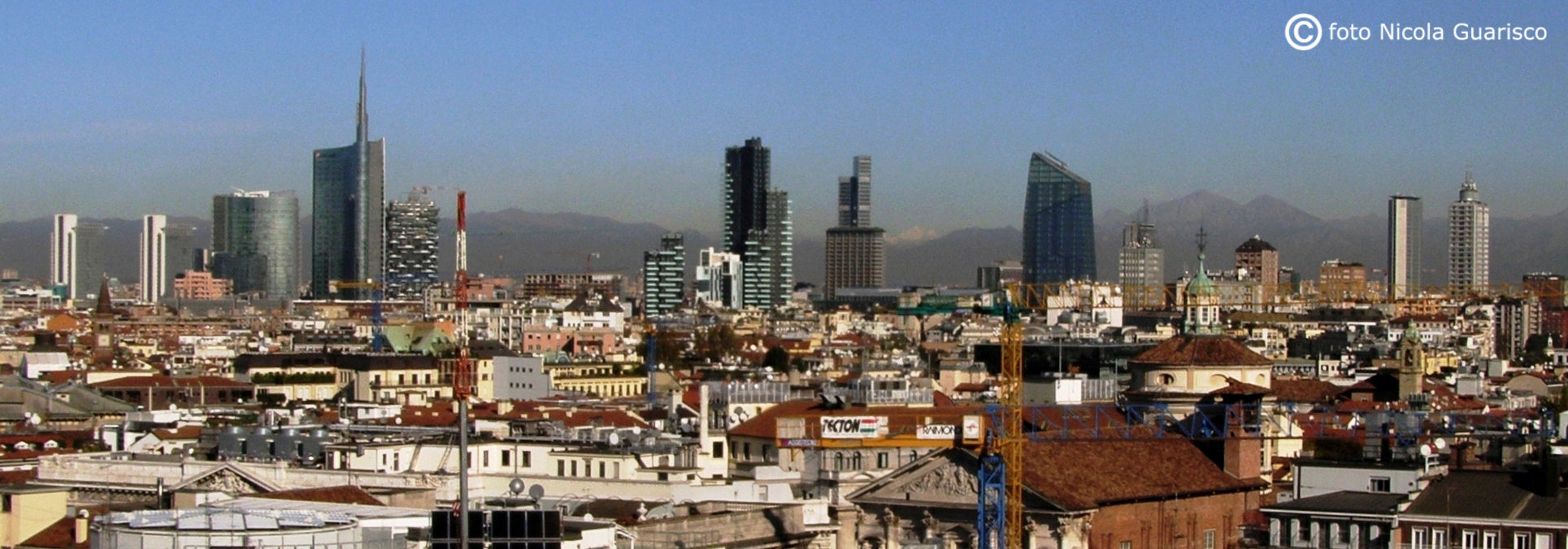
|
|
The skyline with the backdrop of the mountains surrounding Lake Como, viewed from the roof of the Duomo. |
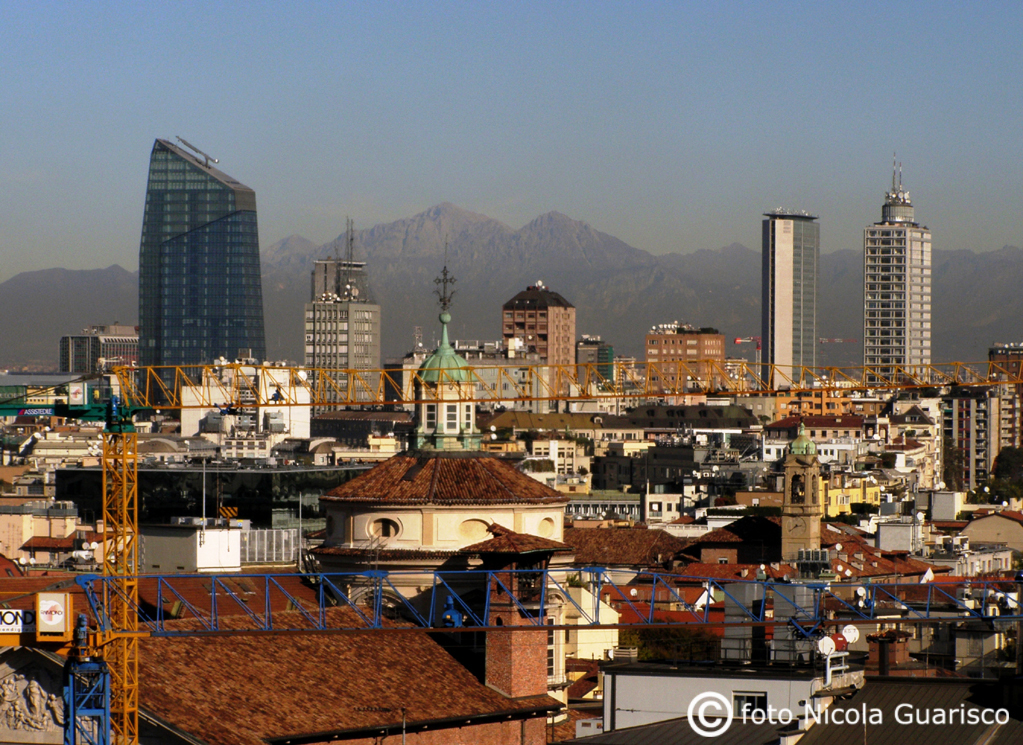
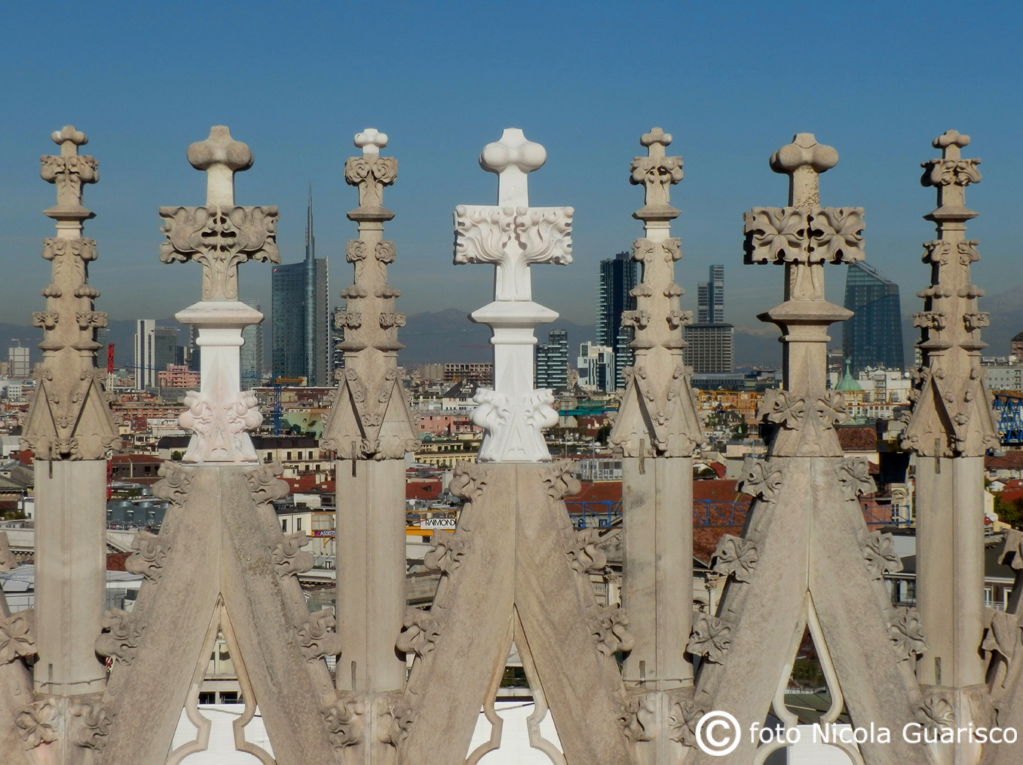 |
Mount Grigna framed by the Diamante, the Pirelli and the Breda Towers. Skyscrapers between the spires of the Duomo. |
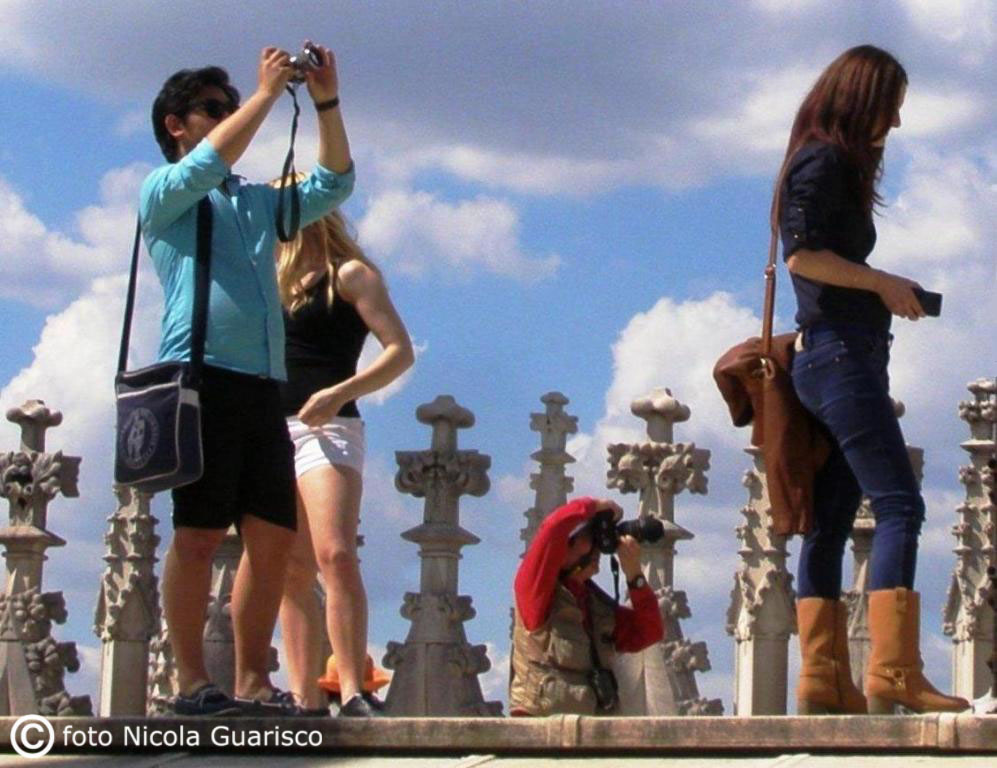
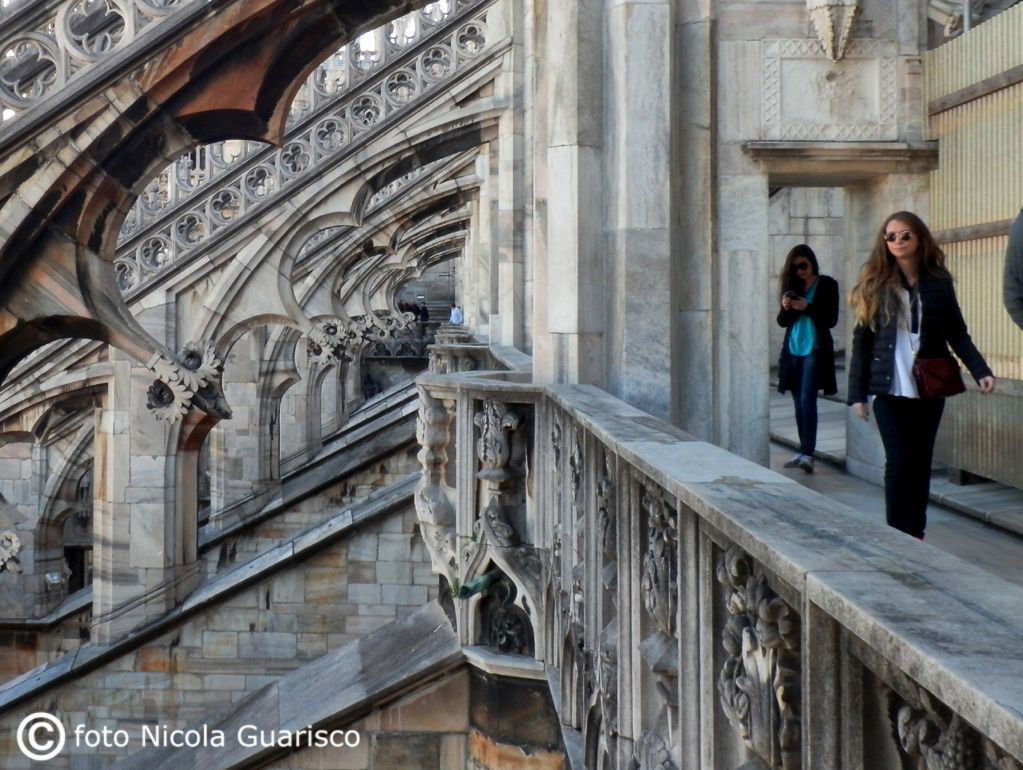 |
Climbing up a stair with 201 steps, visitors may stroll through the 135 spires and 180 statues of the magnificent Cathedral. |
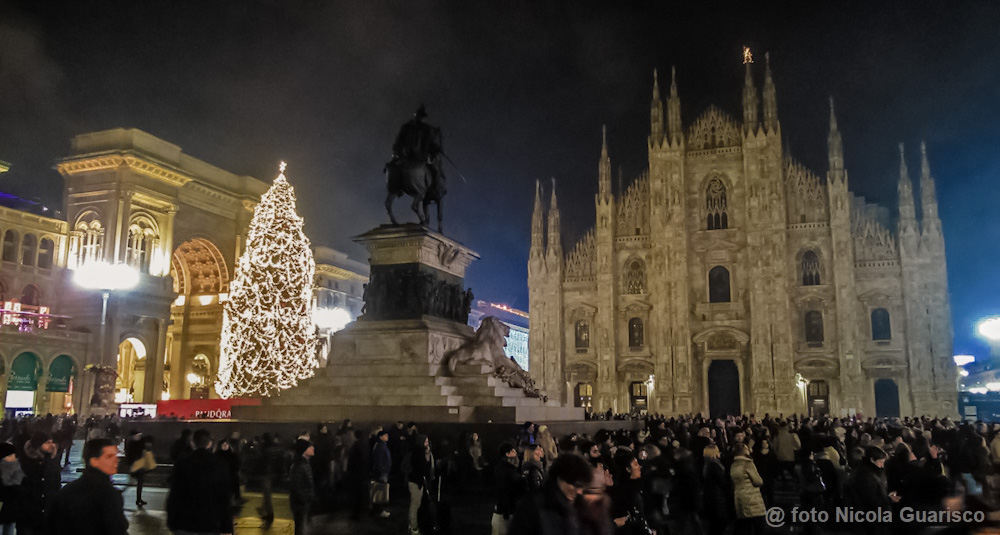
|
|
The Cathedral is the fourth largest church in the world. Gothic in style, building commenced by order of the Lord of Milan, Gian Galeazzo Visconti, in 1386 and continued for six centuries. |

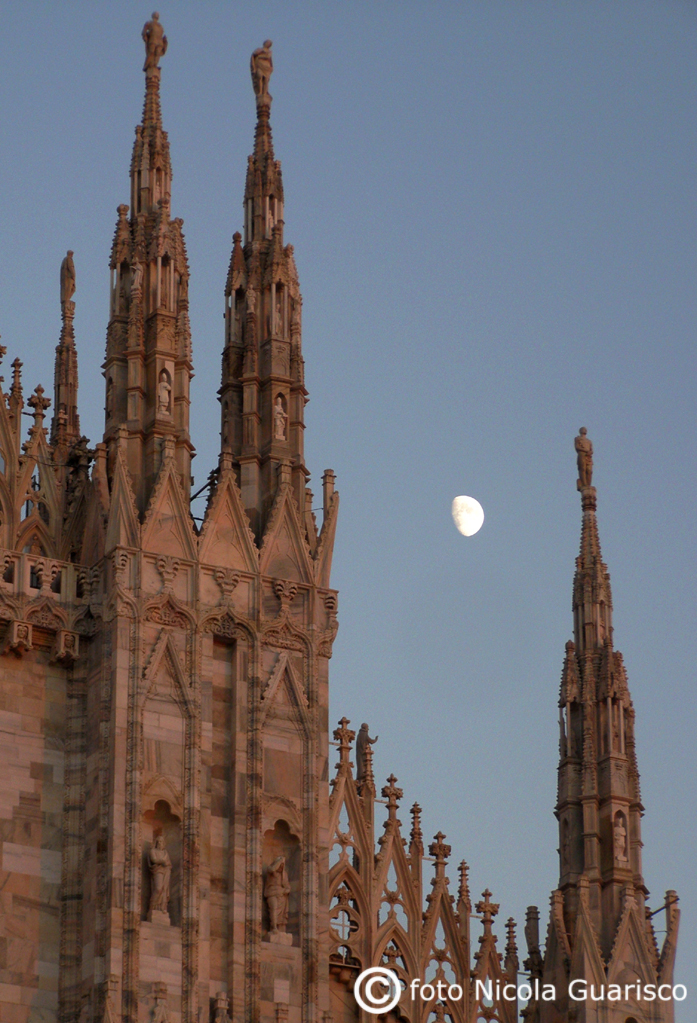
|
|
The renowned Madonnina, which was added in 1774 at a height of 108 meters. |
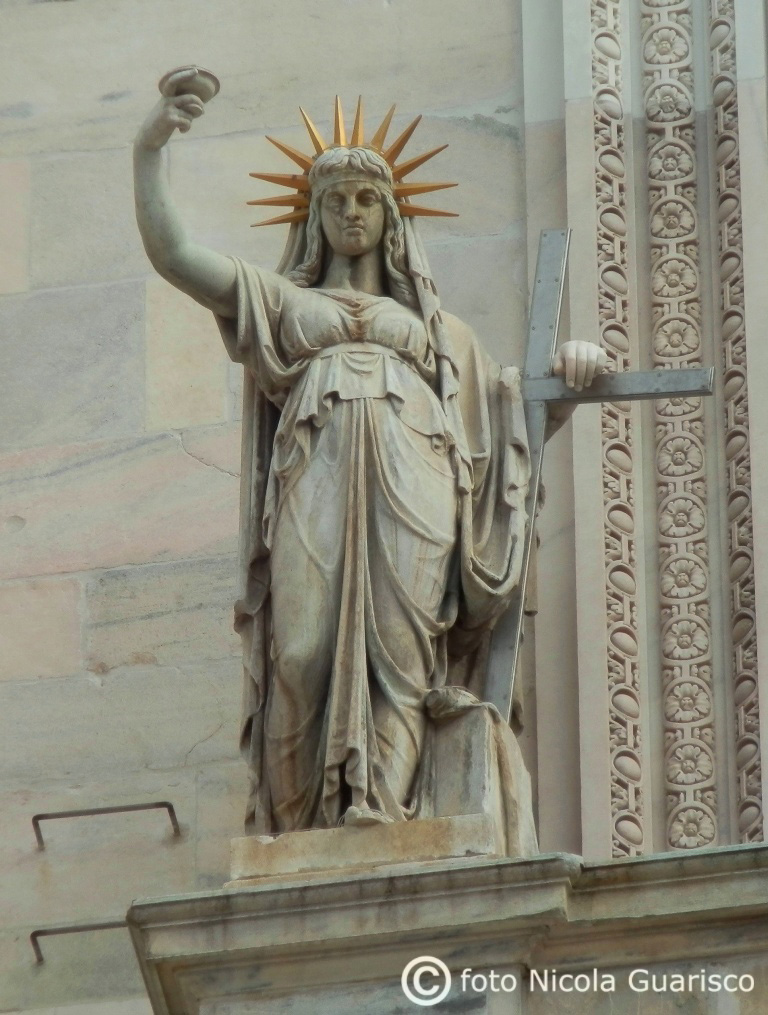
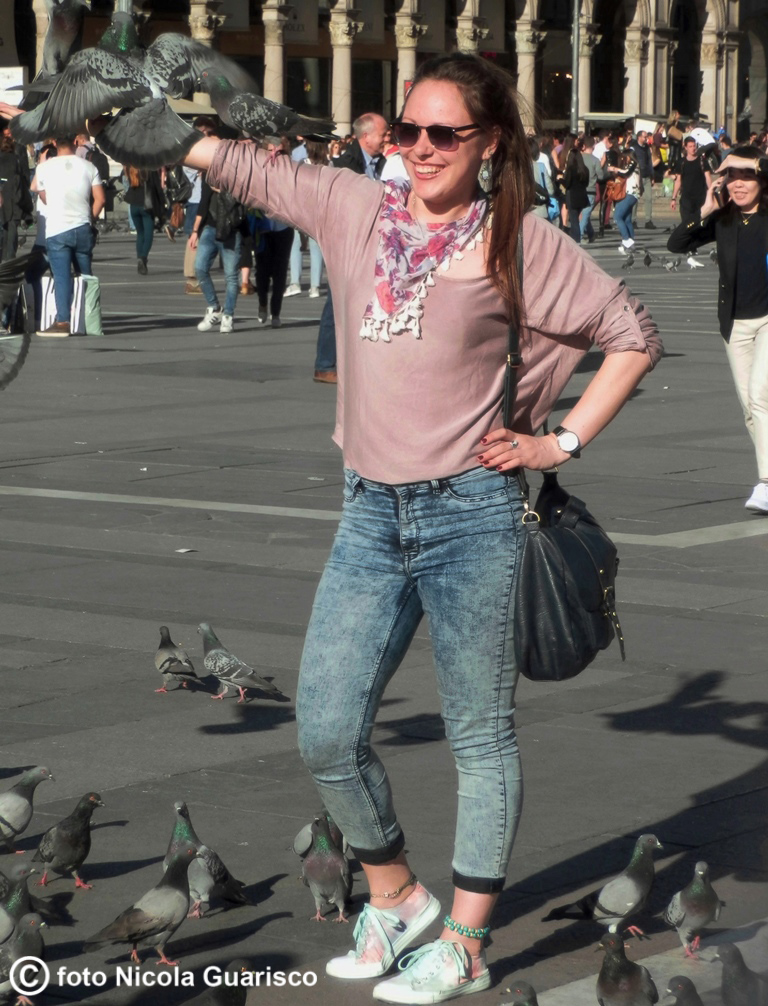
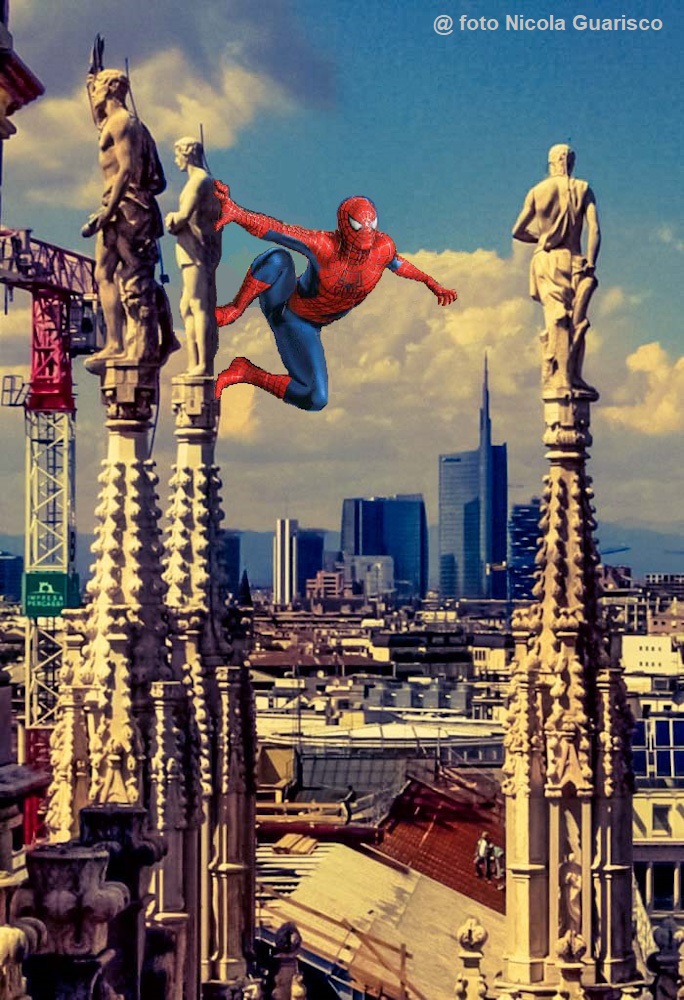
|
|
Was it the statue of the New Law created by sculptor Camillo Pacetti in 1810 |
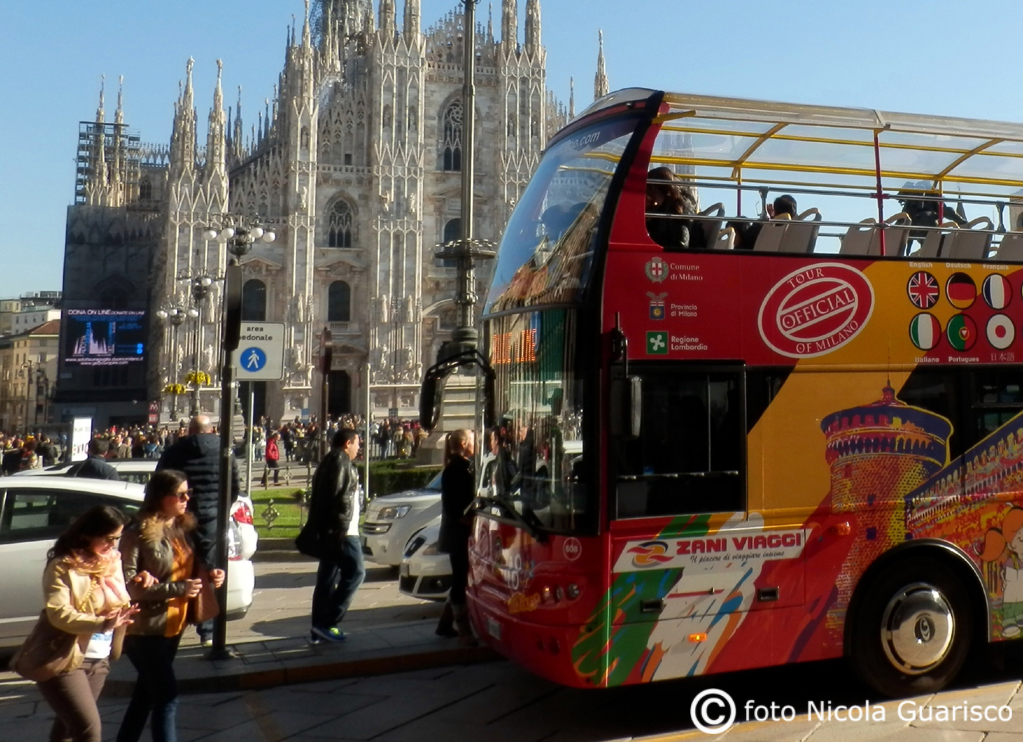
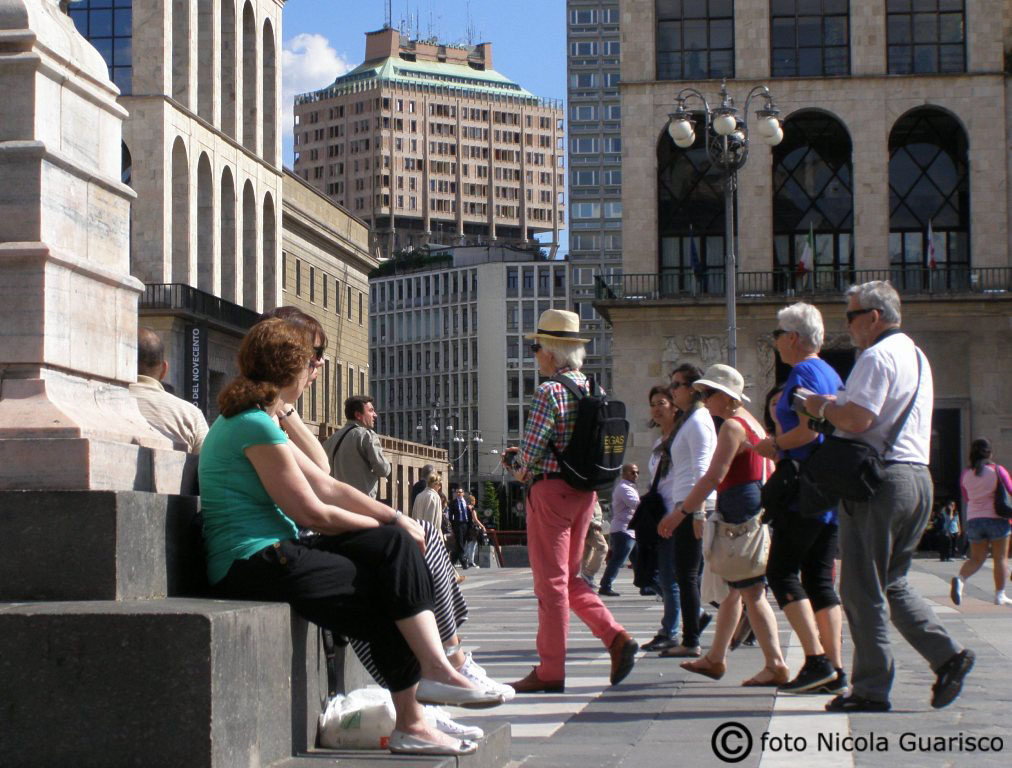 |
|
Milan is the non-capital European city that boasts the highest number of consulates and diplomatic delegations, whereas more than 20% of the inhabitants are of foreign origin. In the photograph to the right, in the flow of ancient and modern which typifies the center, next to Duomo Square we can see the Arengario, |
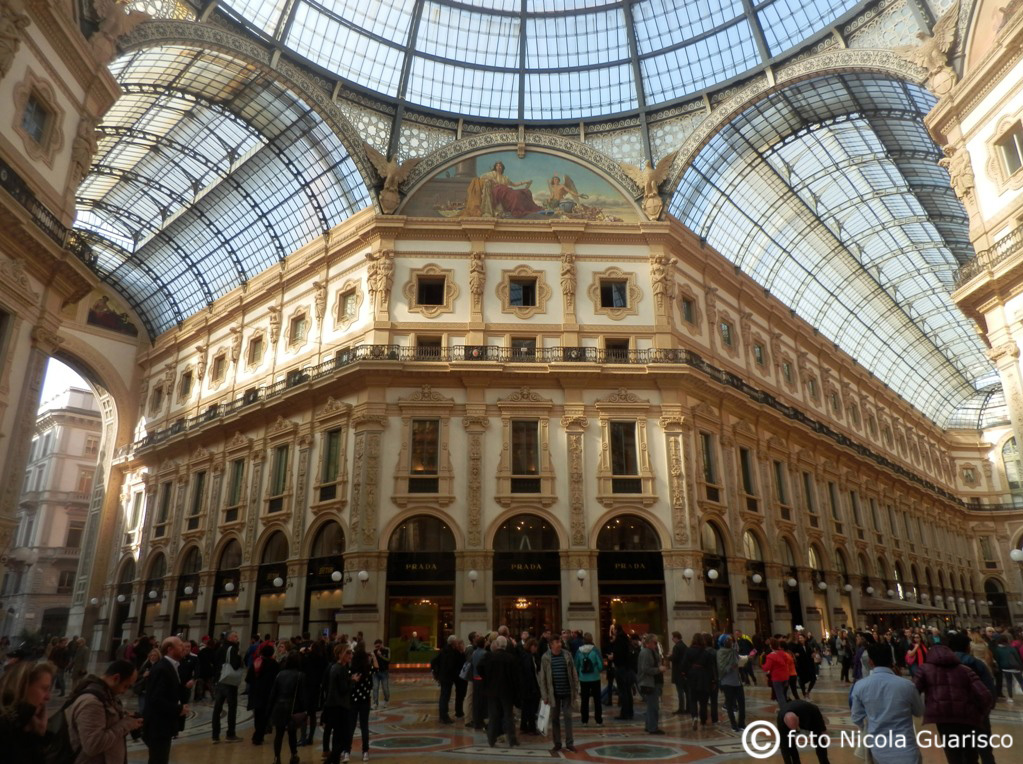
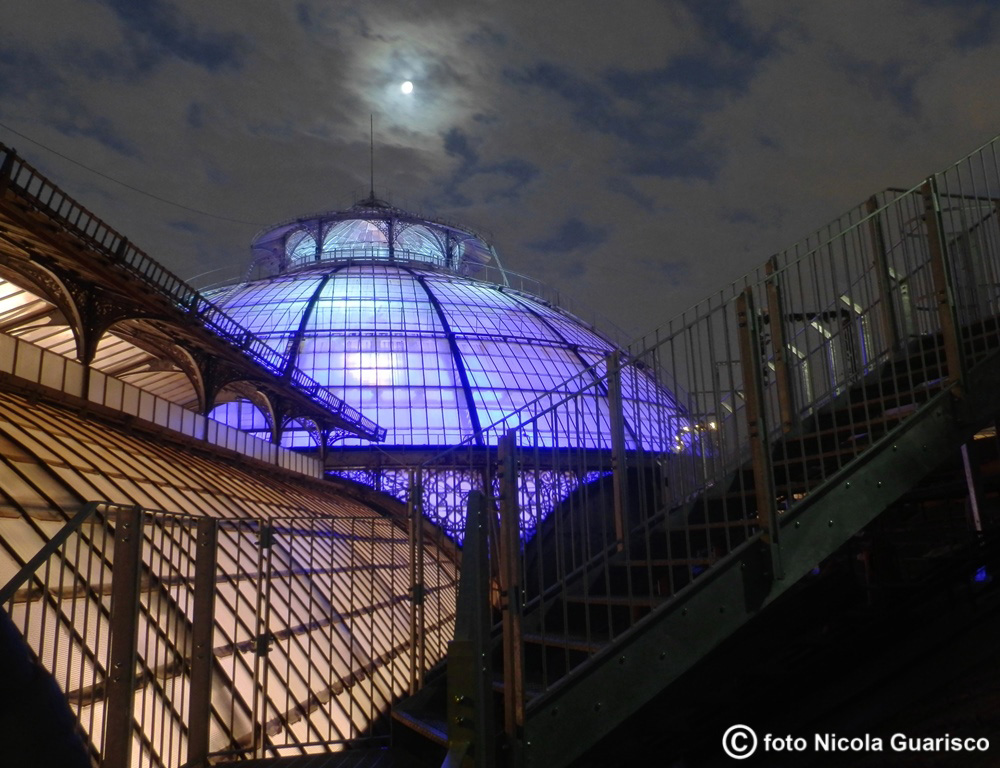 |
The Galleria, known as the historical “salon” of Milan, is home to many elegant stores, restaurants and offices. It was built in an eclectic style in the second half of the nineteenth century to create a spectacular link between the Duomo and the Scala. It was seriously damaged during the Second World War. |
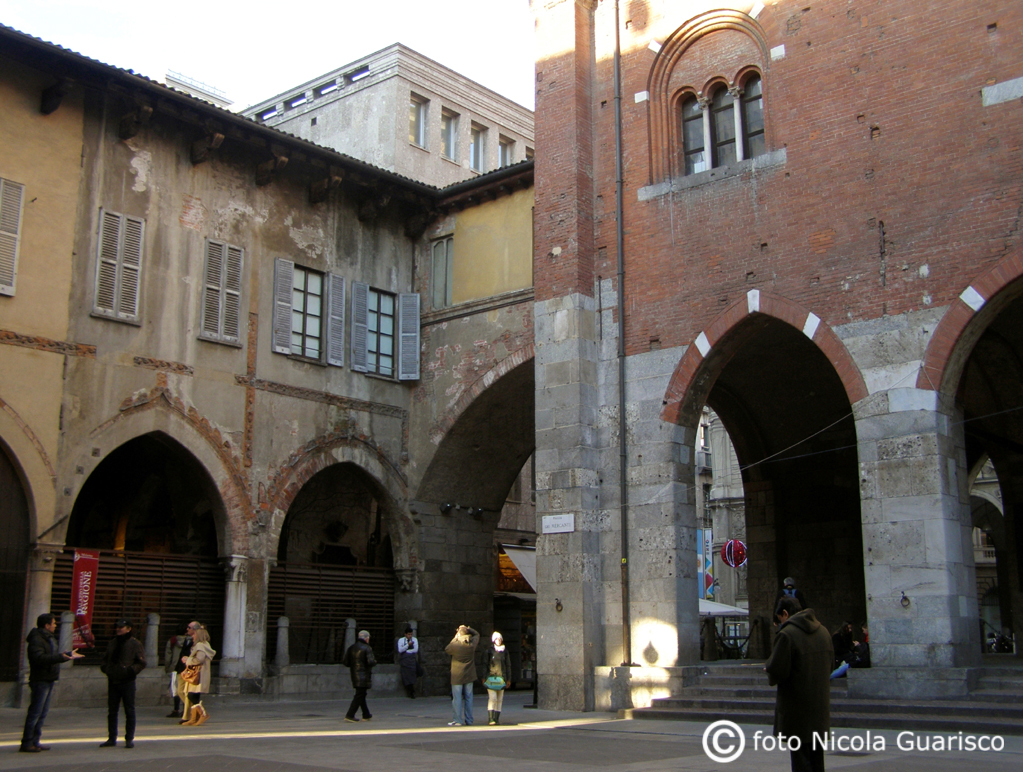
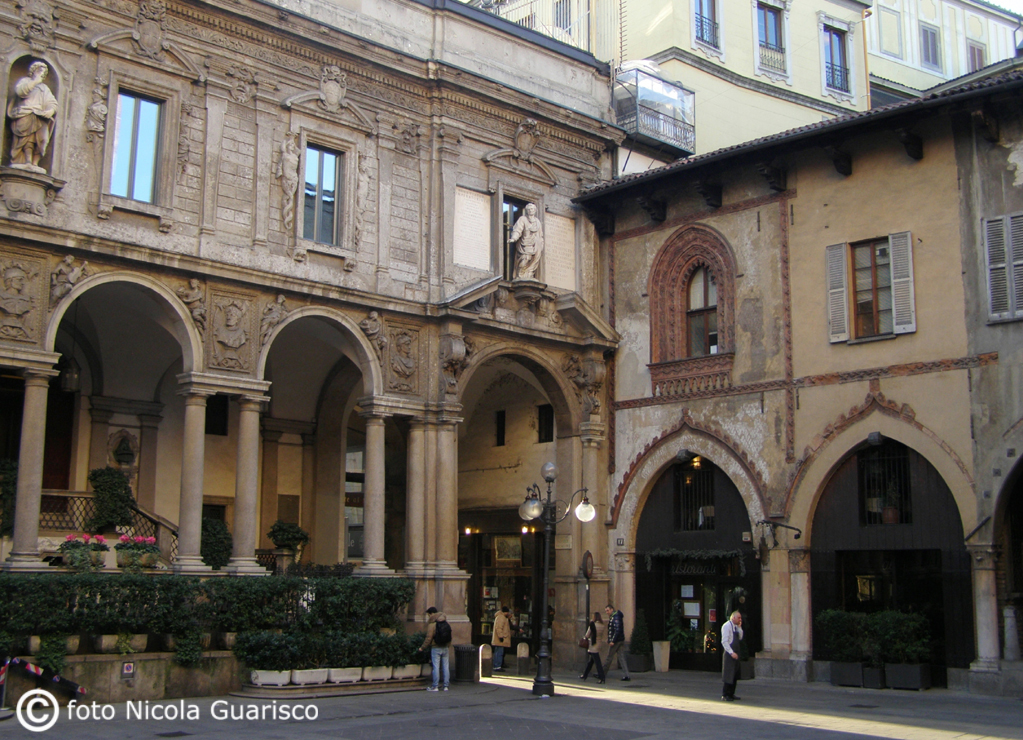 |
|
Piazza dei Mercanti, in the heart of the historic center of Milan and the city’s sole medieval spot. |
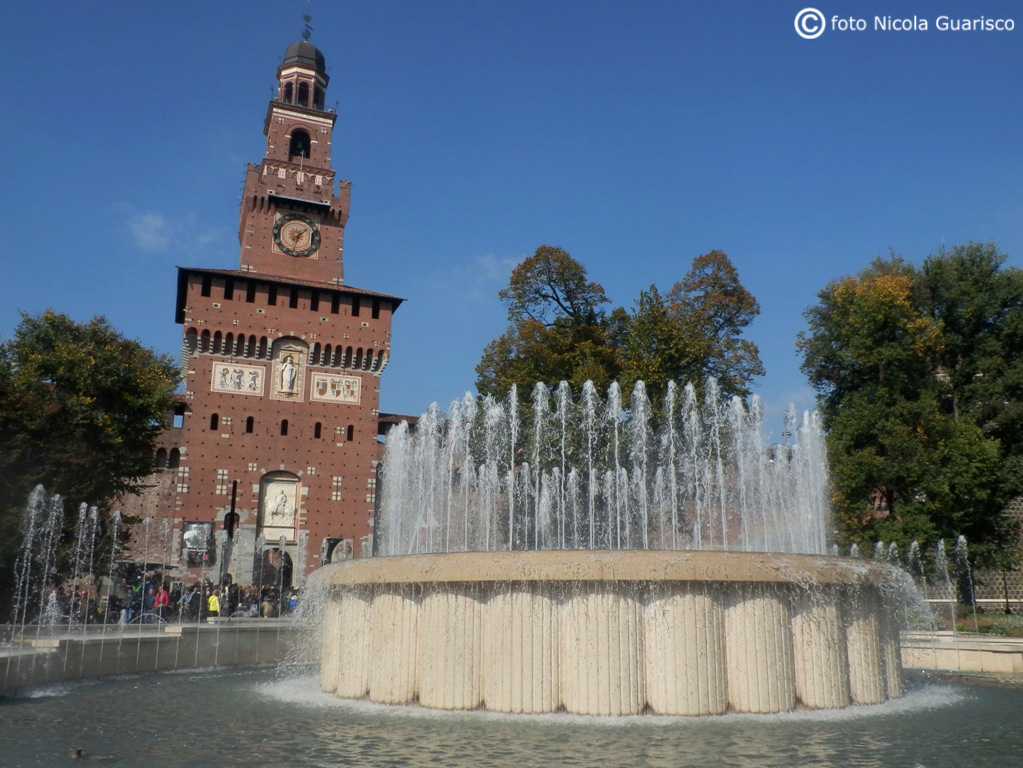
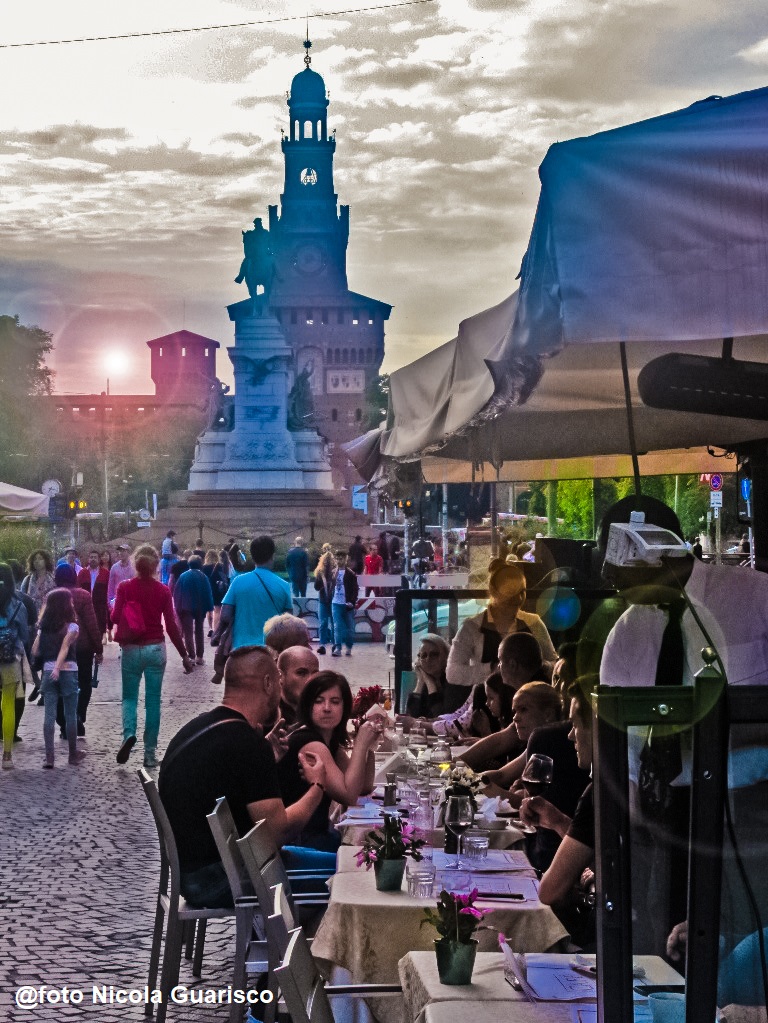 |
The Sforzesco Castle had been the residence of the Sforza family since the fifteenth century; |
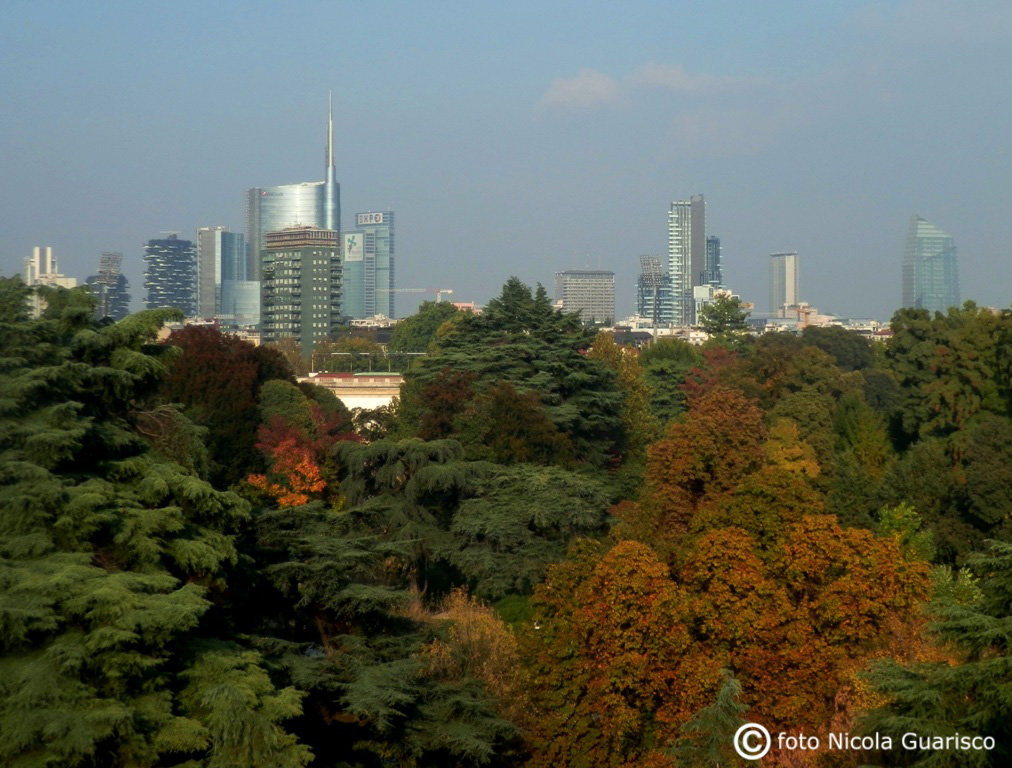
|
|
Typical example of a metropolitan park, the Sempione Park is considered to be the green lung of Milan, just outside the historic center. Was built over the remains of the more extensive Giardino Ducale, surrounded by rich woodlands and hunting preserves. |
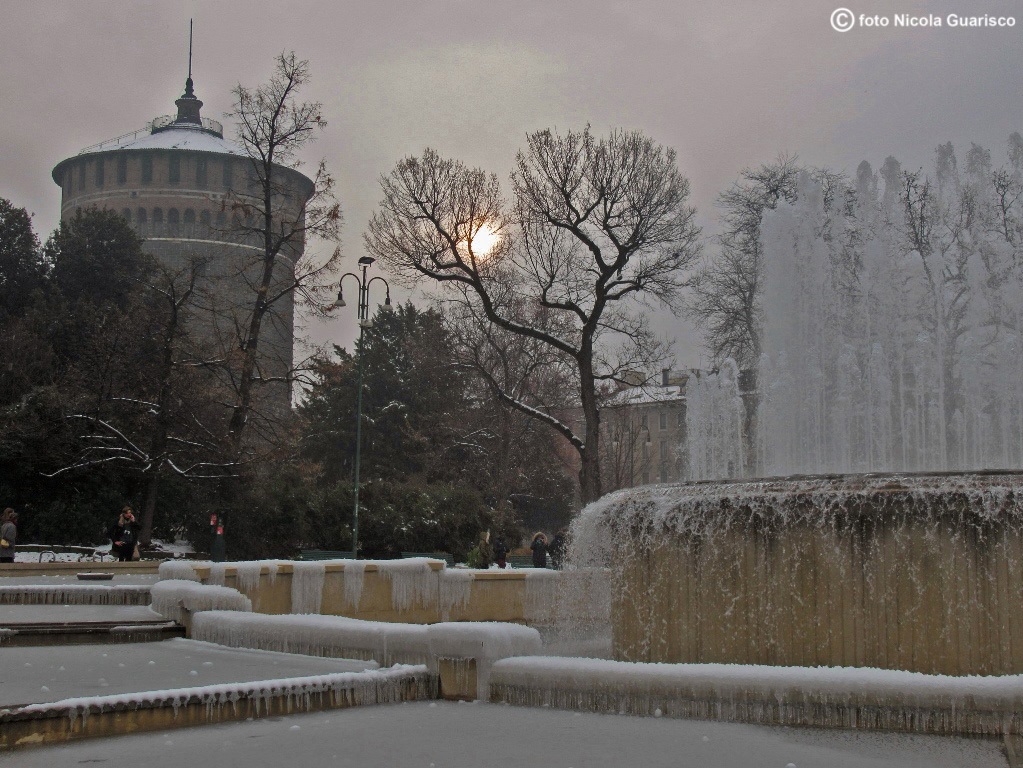
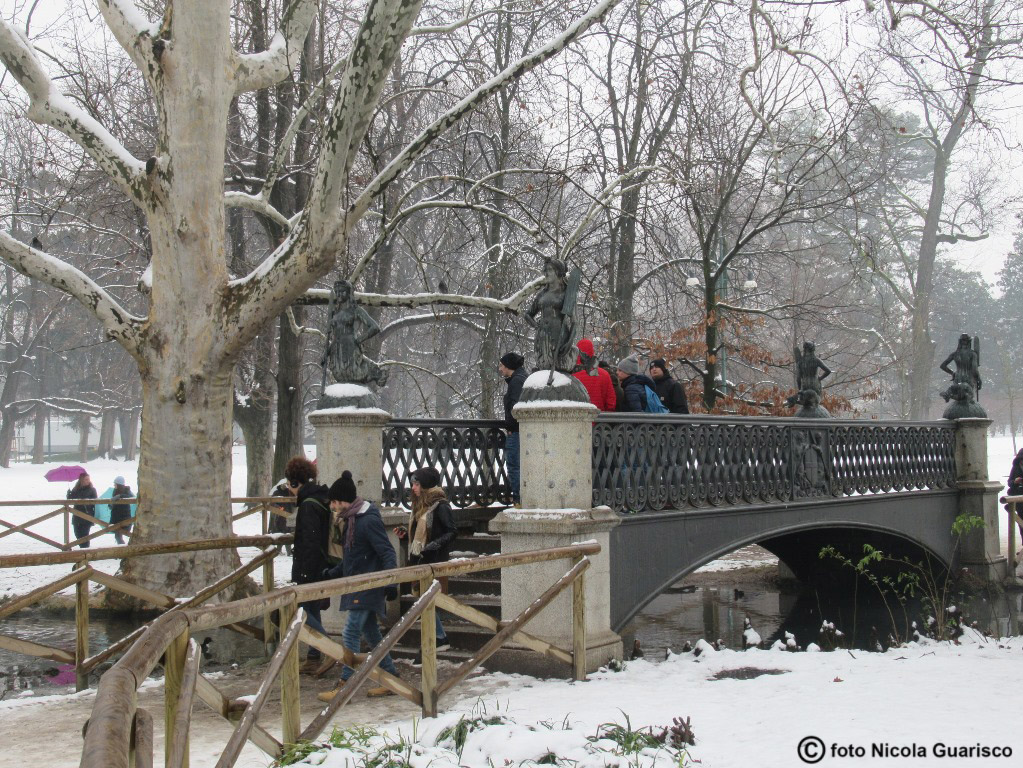
|
The Castle and the bridge lovers in the snow. |
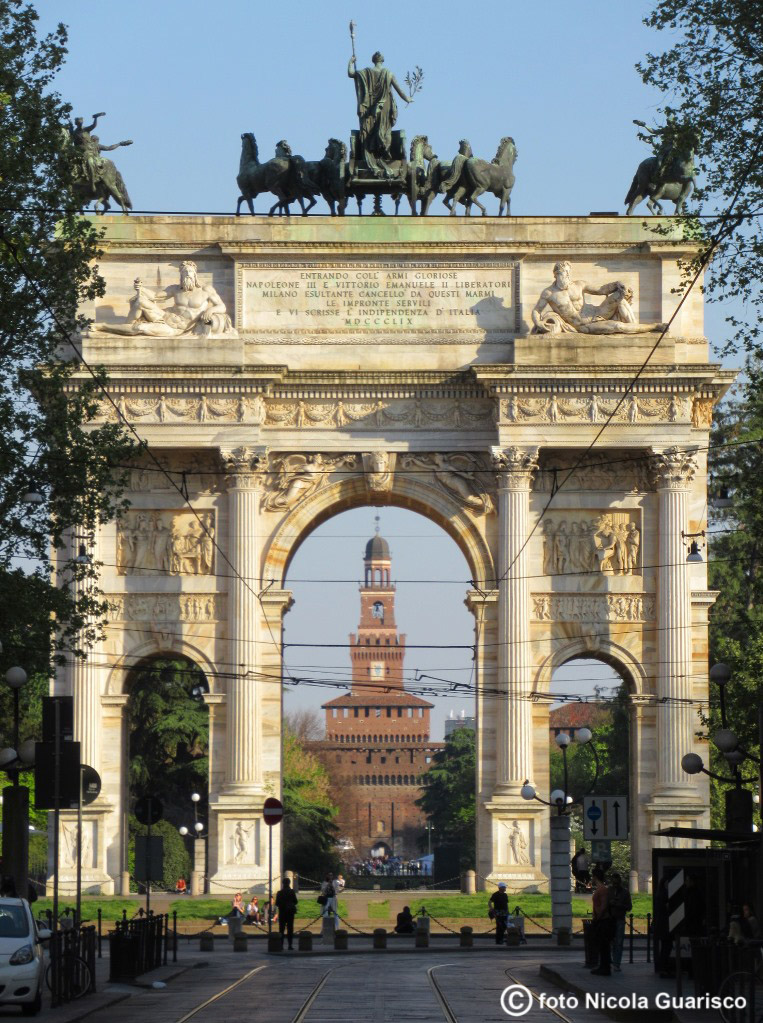
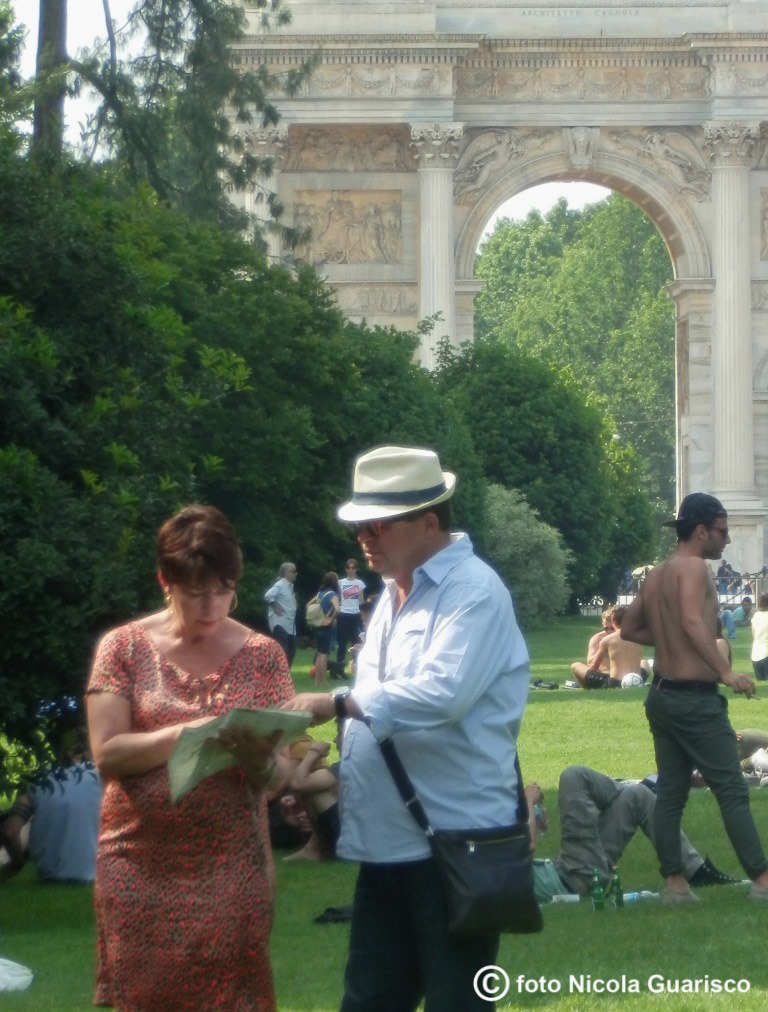
|
The park is scenographically delimited by the Sforzesco Castle and the Arch of Peace, built to celebrate Napoleon (1807). Its present day layout is the typical English style and features a beautiful little lake full of wildlife, as well as the Civic Aquarium, the Arena and the Branca Tower. |
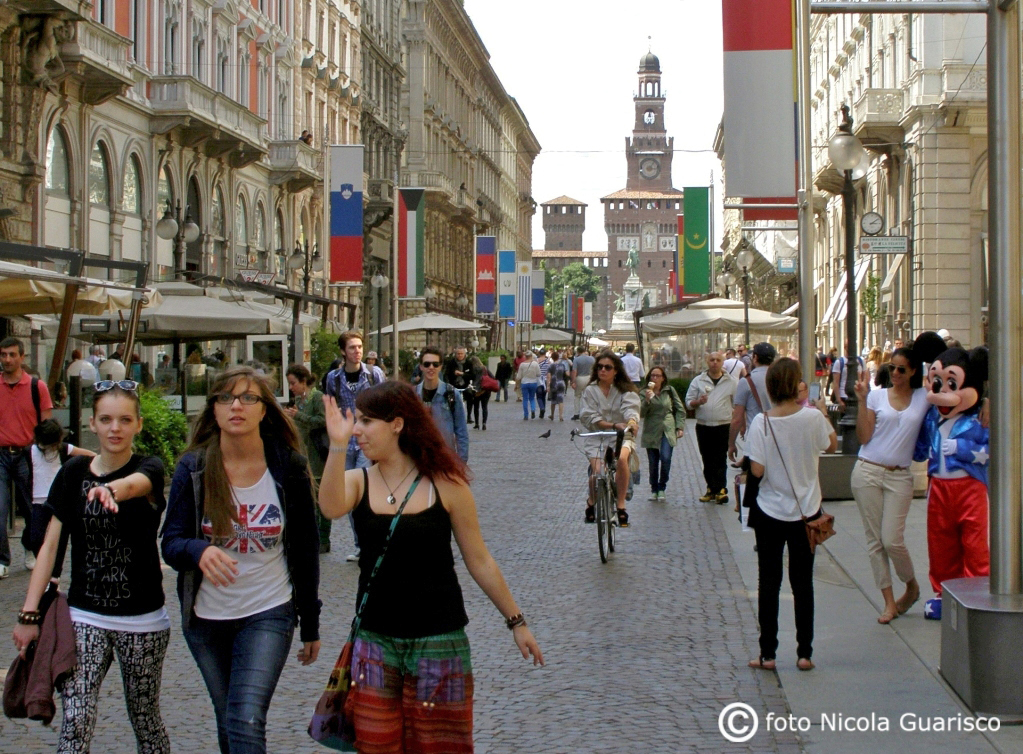
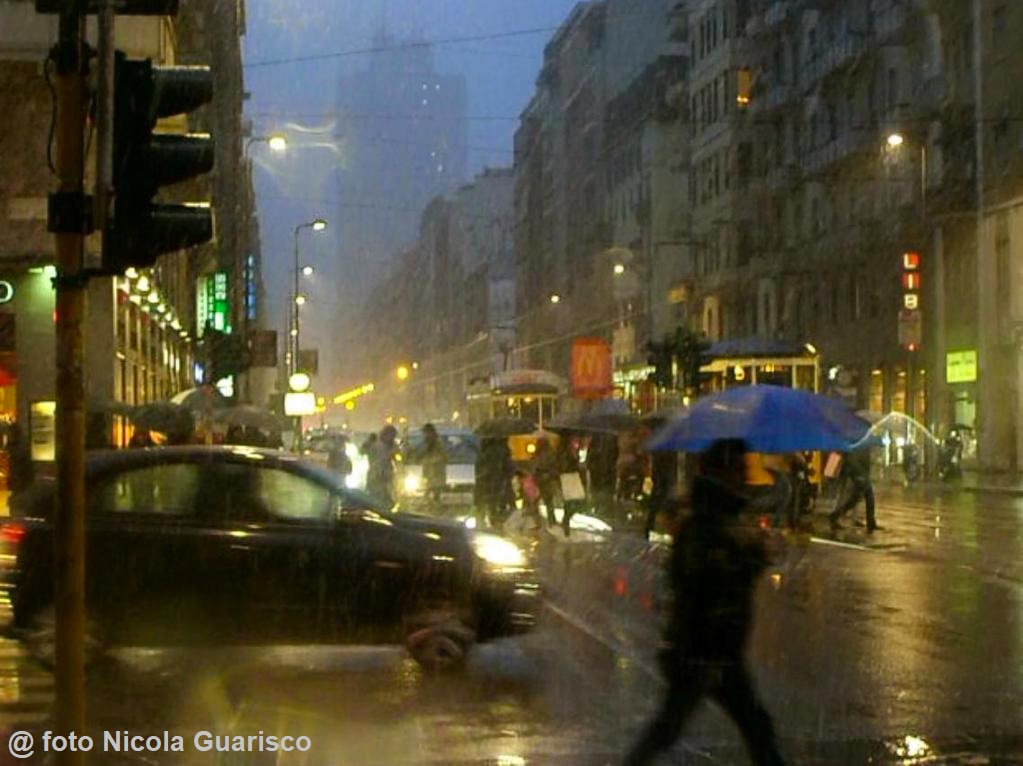 |
Via Dante was built in 1889 to link the Cathedral with the Castle, following the demolition of the medieval fabric as with other areas in the center (corso Europa, Via Larga, etc.), in line with the urban revolutions enacted in European cities. Today it is included in the large pedestrian area which goes from the Arch of Peace all the way to Piazza San Babila.
Viale Tunisia at the intersection with |
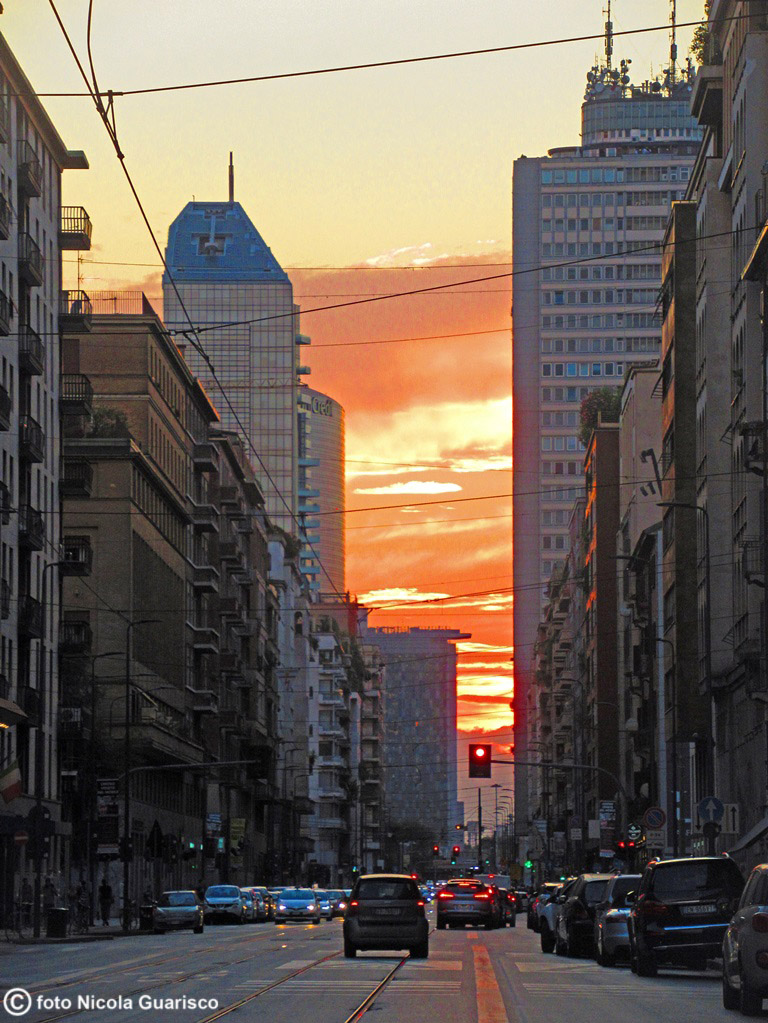
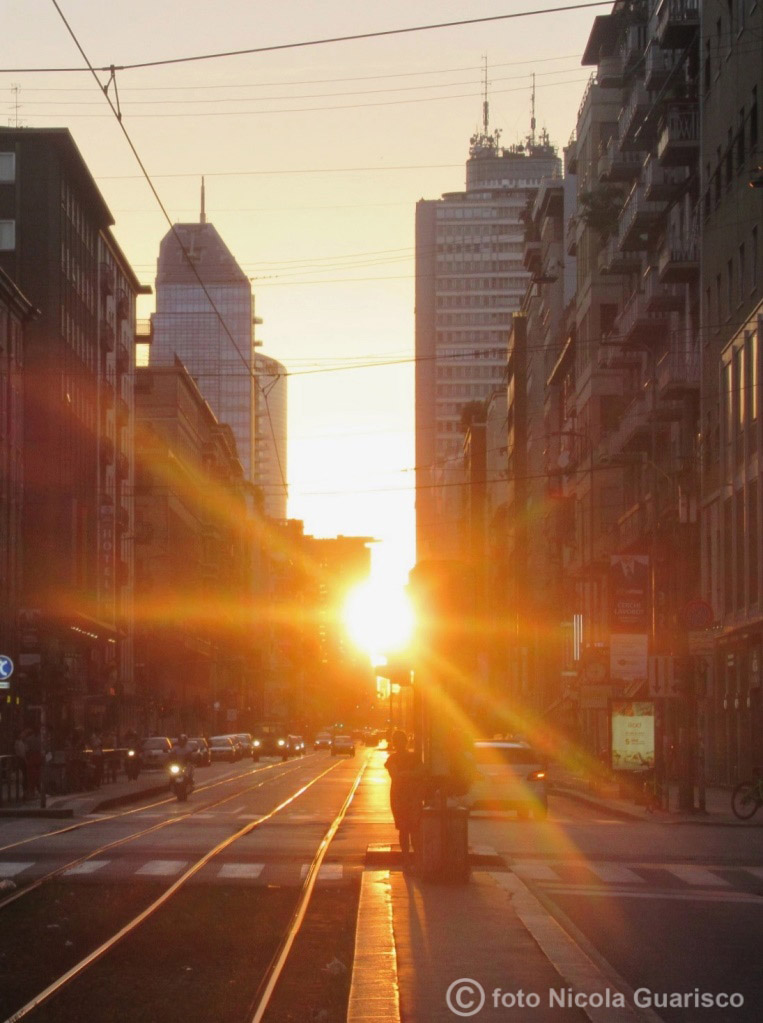 |
Urban poetry: summer solstice in Viale Tunisia. |
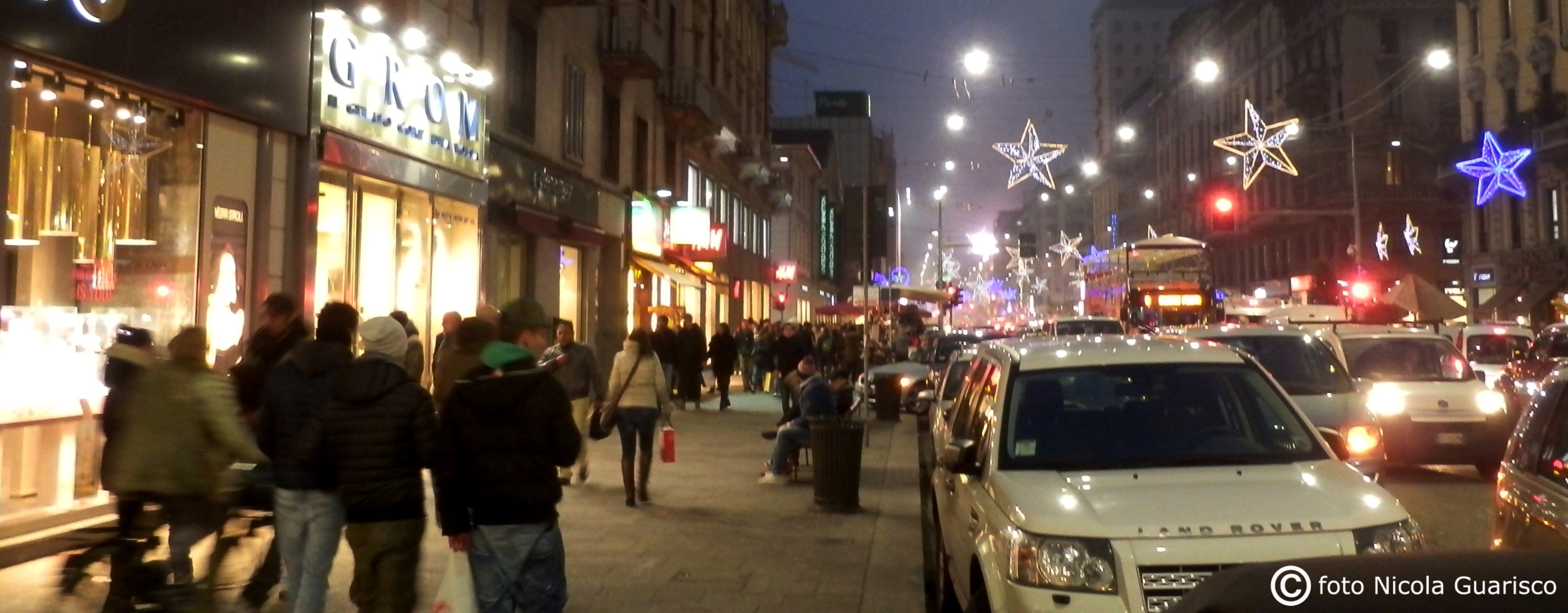 |
|
Corso Buenos Aires, Italy’s most important shopping and business artery, with about 350 stores and an average of 100,000 people visiting the area every day. It links Porta Venezia to Piazzale Loreto. The city stores have everything you need. |
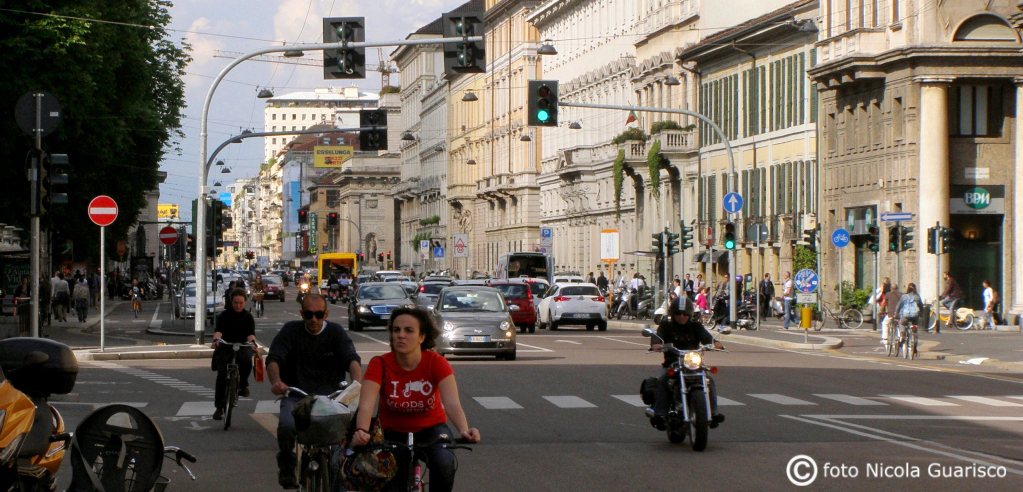 |
|
The monumental straight road of Corso Venezia which lengthens Corso Buenos Aires, created after the old walls were torn down. It used to host military parades and was the ideal place for afternoon strolls during the Napoleonic era. It is bordered by public gardens with a Planetarium, the Museum of natural history and by Neoclassic-Liberty style palazzos, such as Serbelloni, Bovara and Castiglioni. |
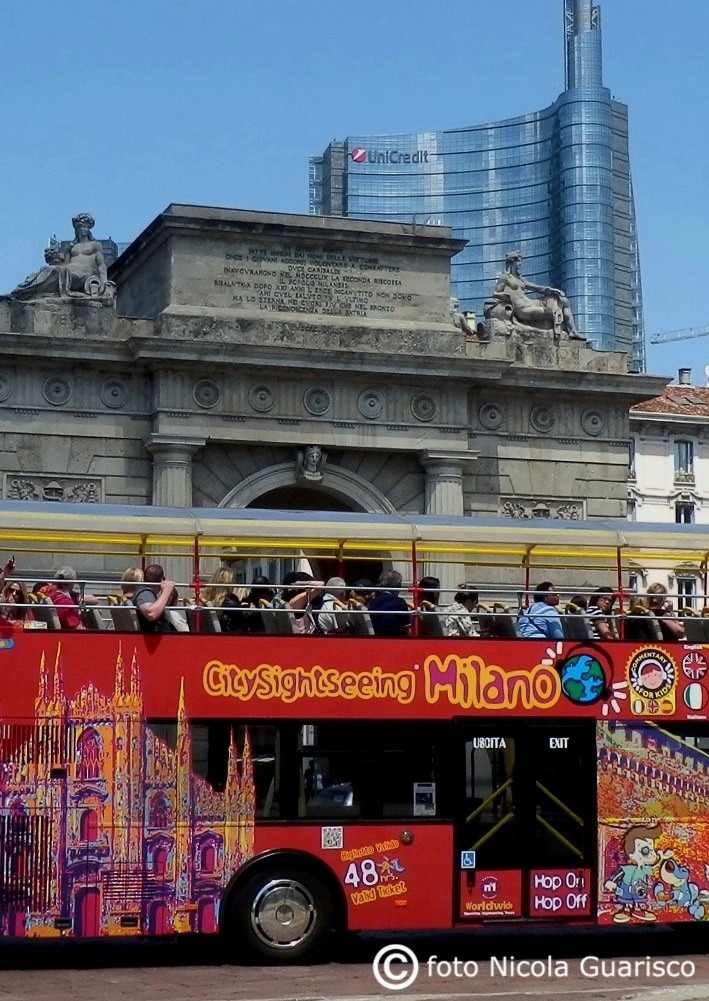
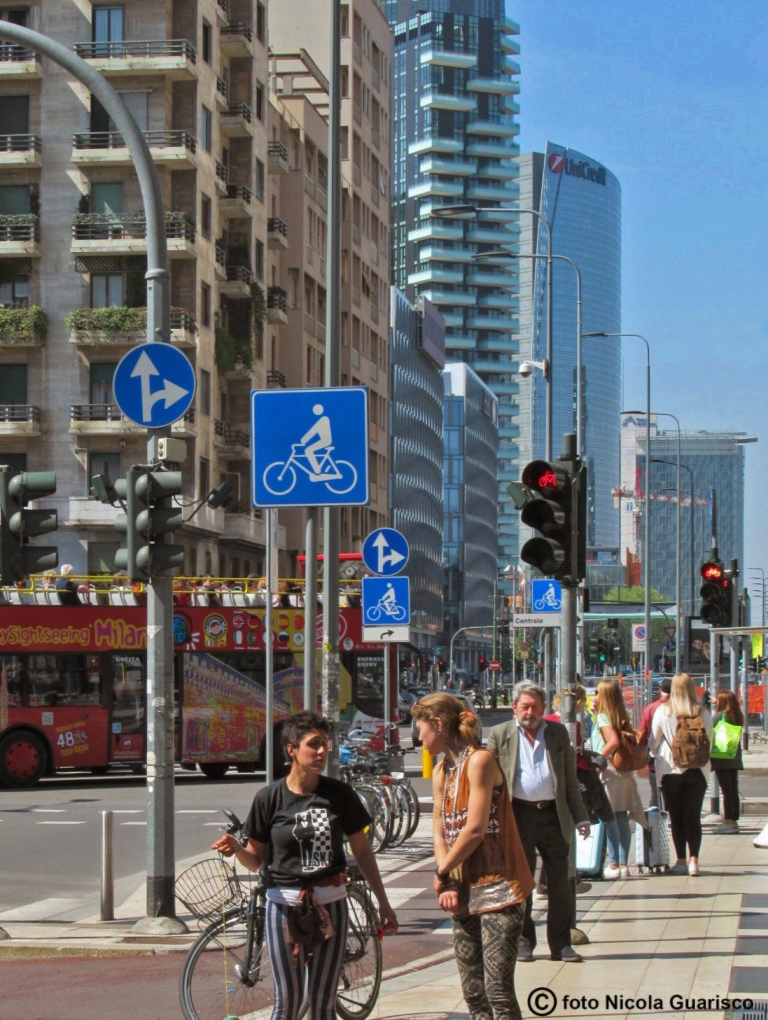
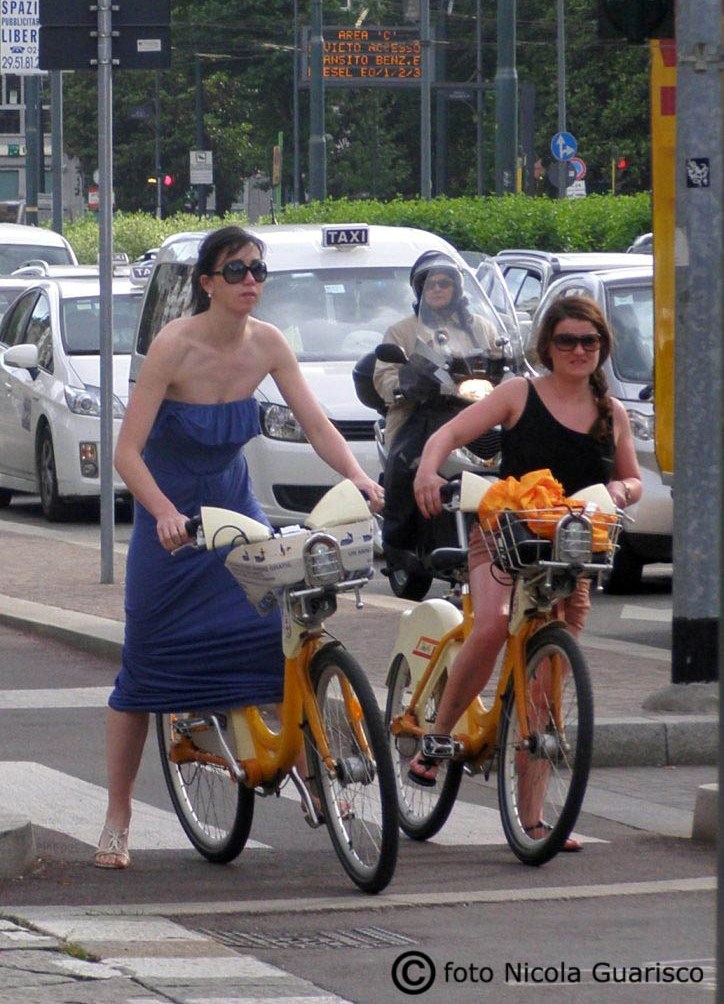
|
|
Strolling... |
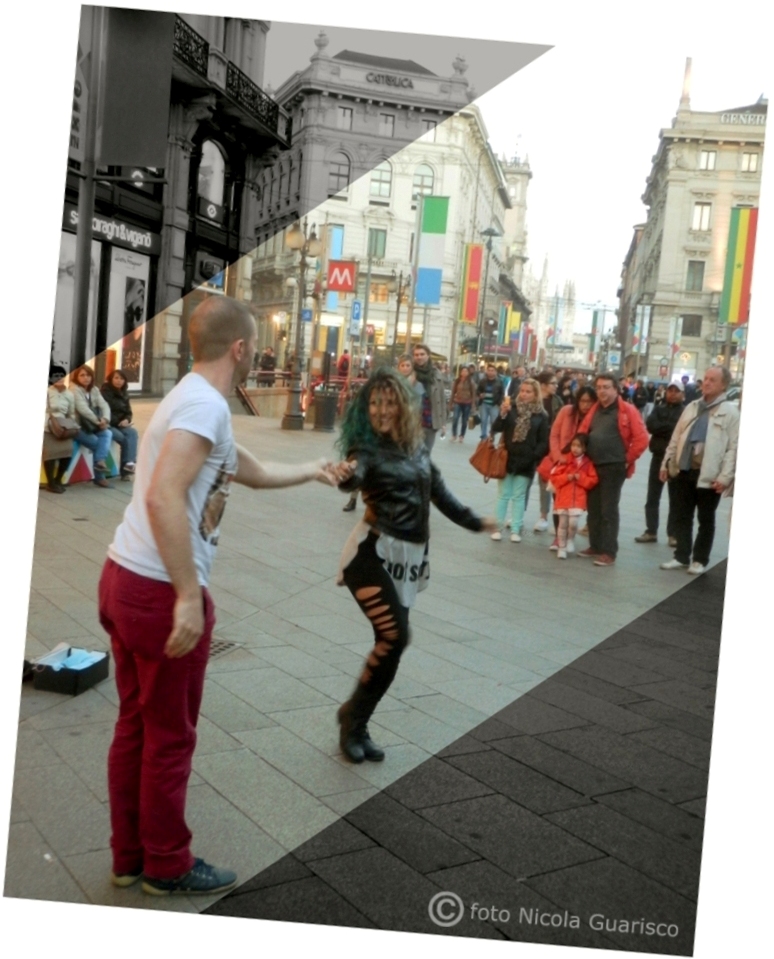
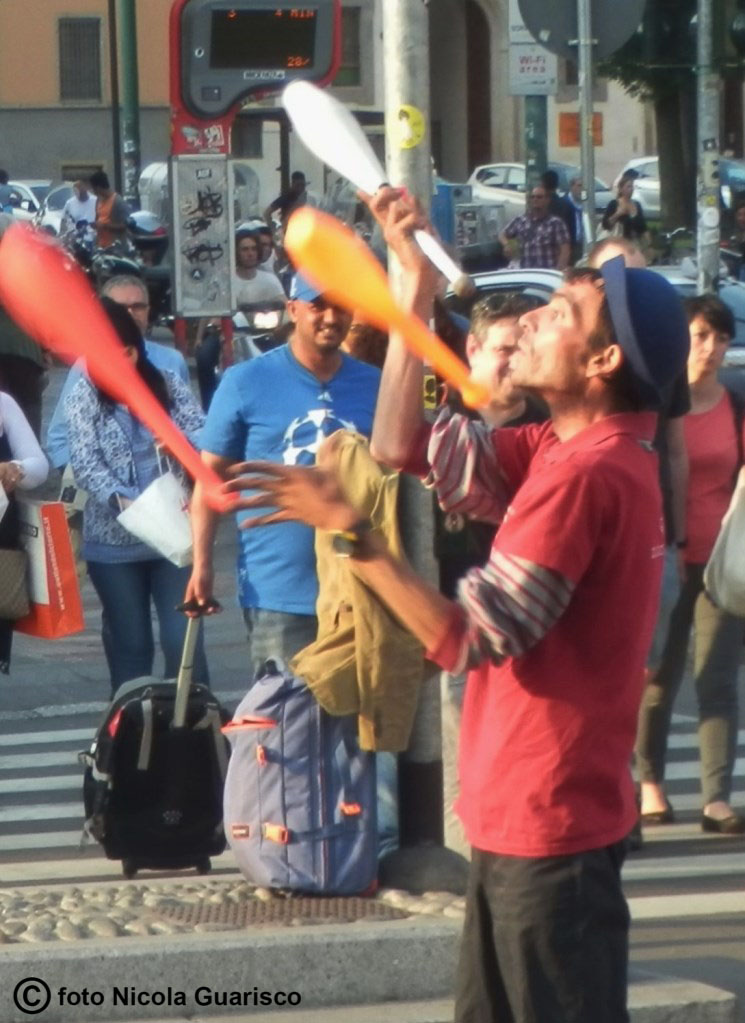
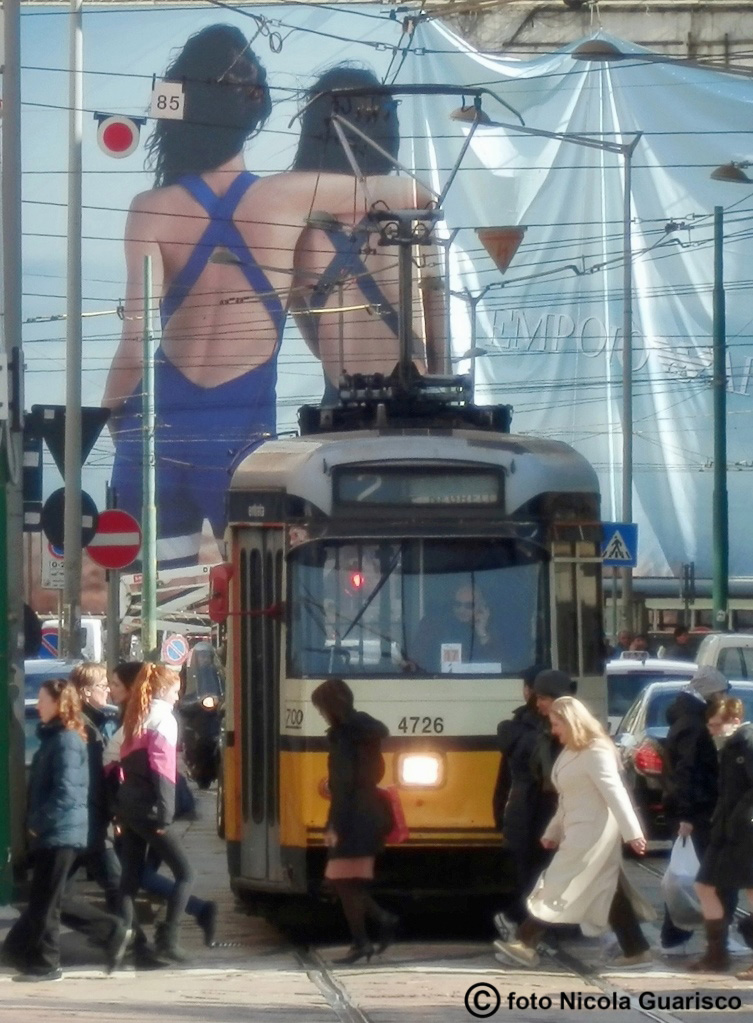
|
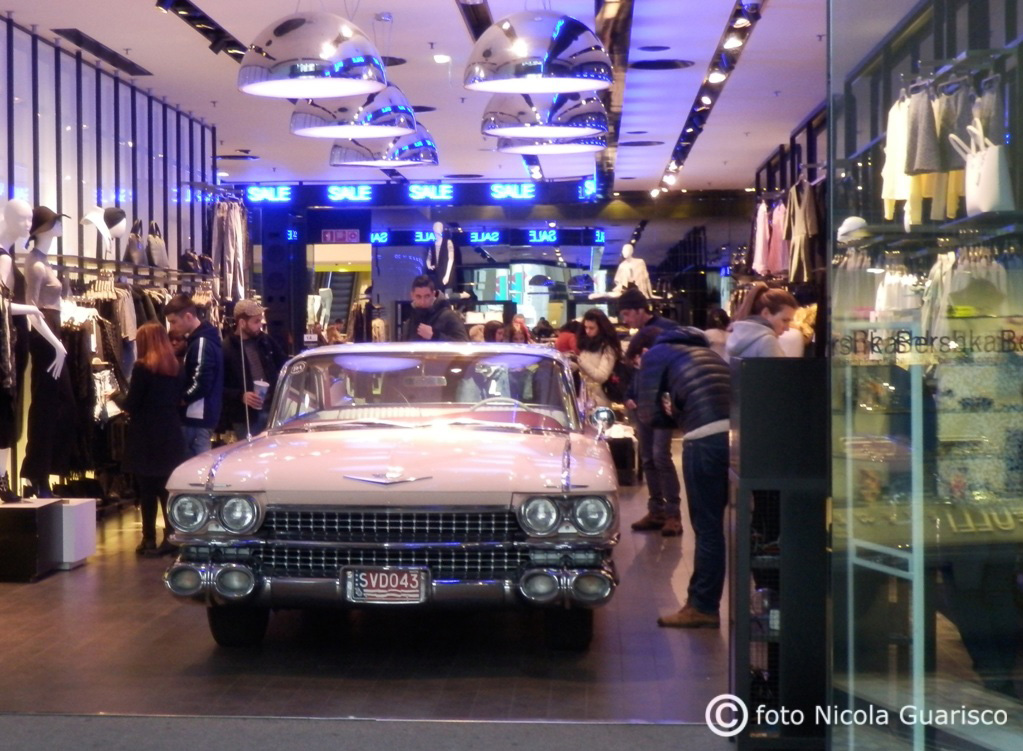
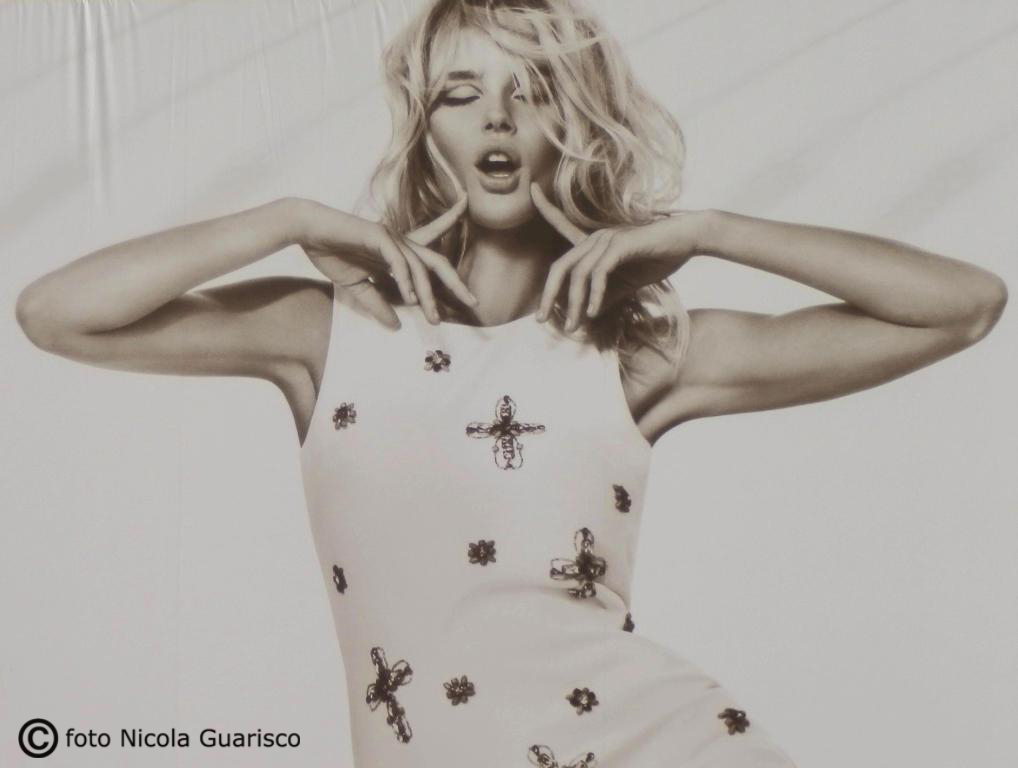 |
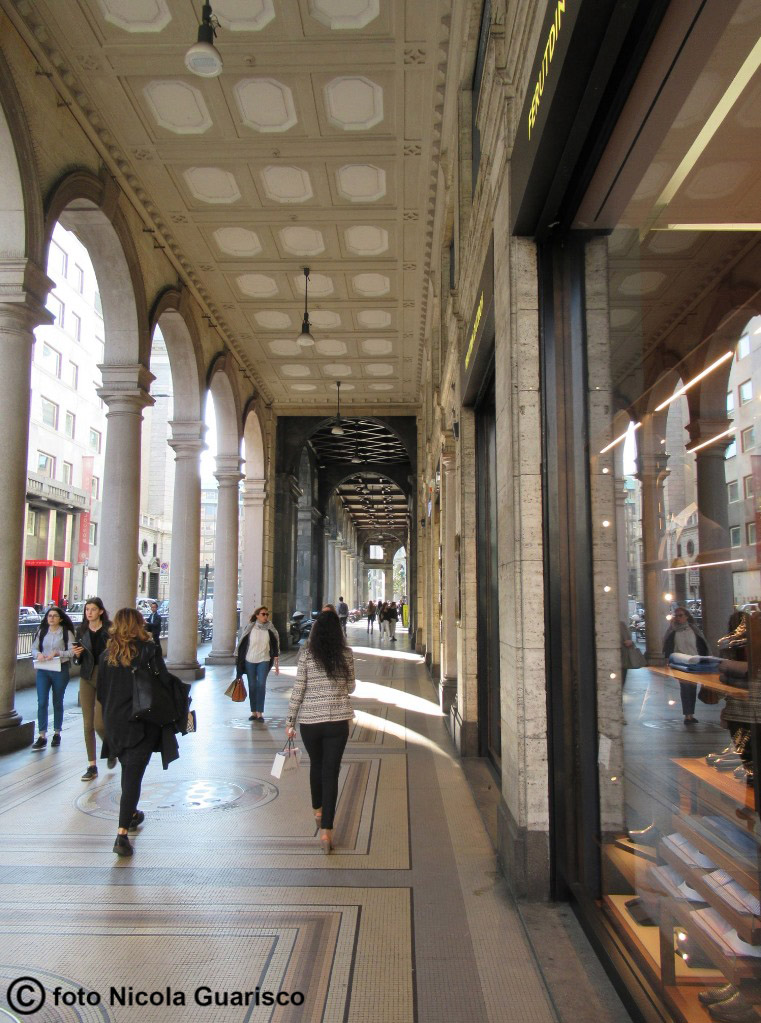
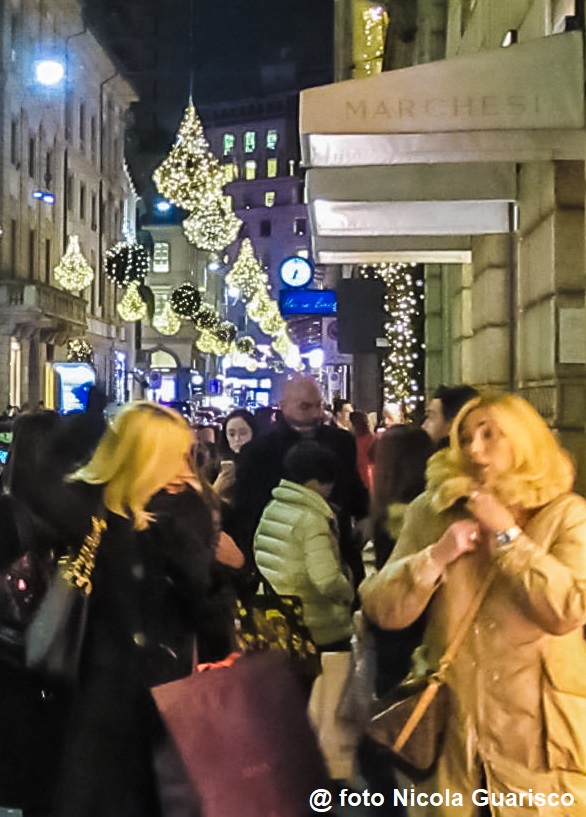
|
The elegant arcades of Corso Matteotti. Christmas shopping in Via Montenapoleone. |
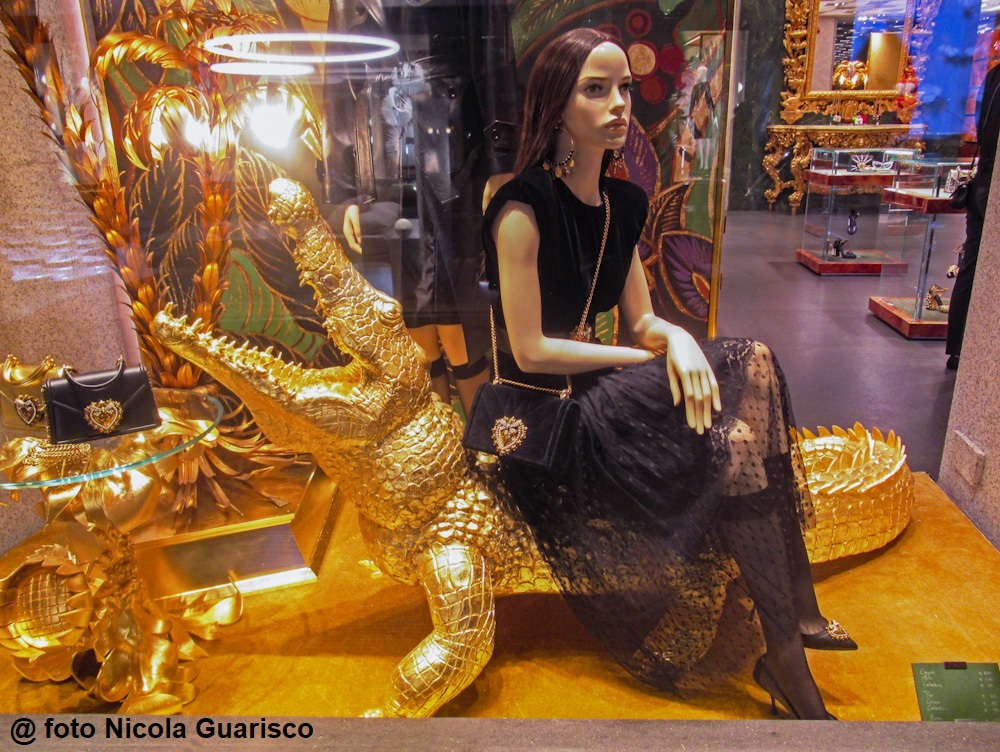
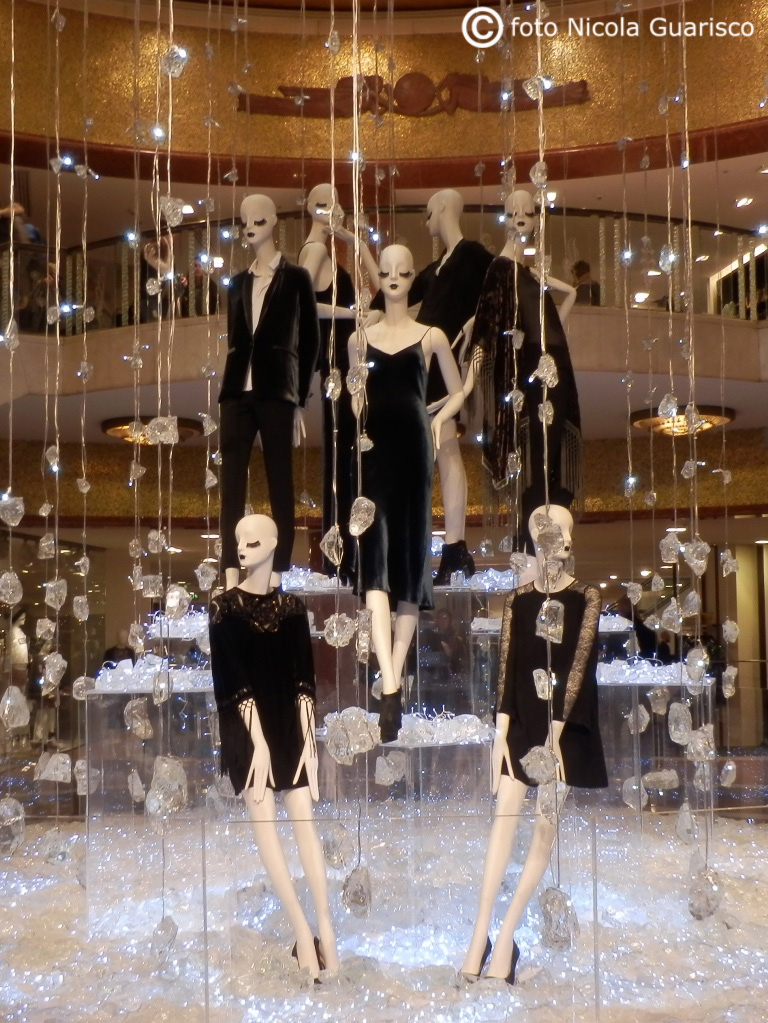
|
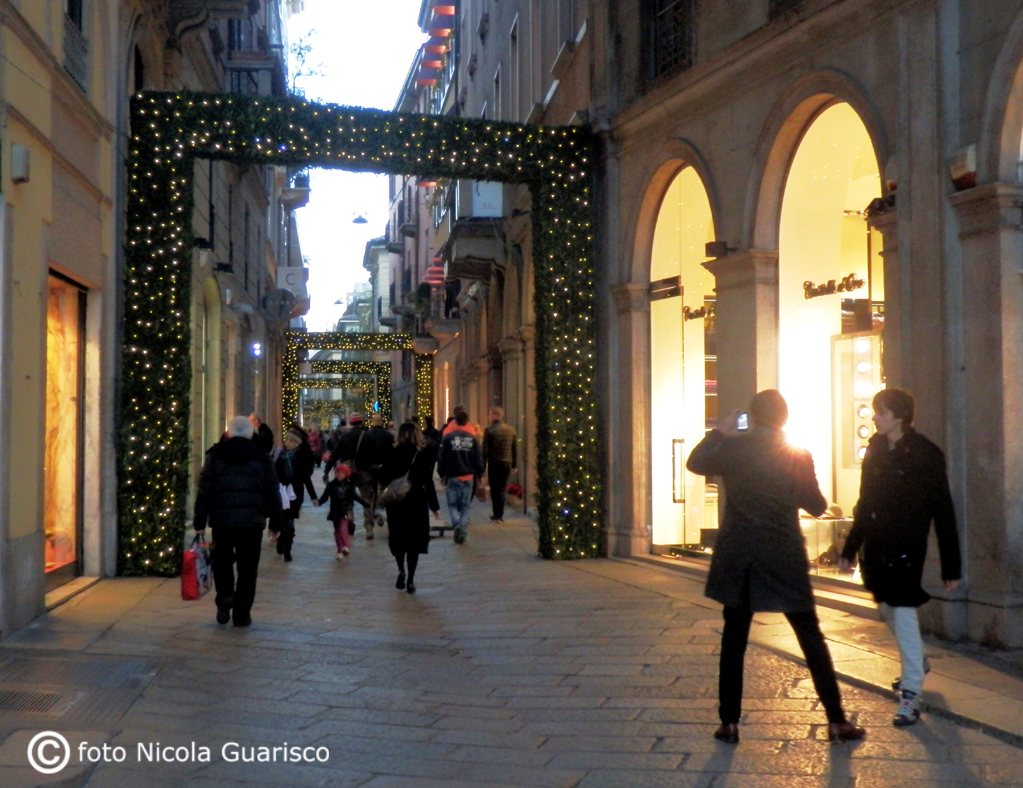
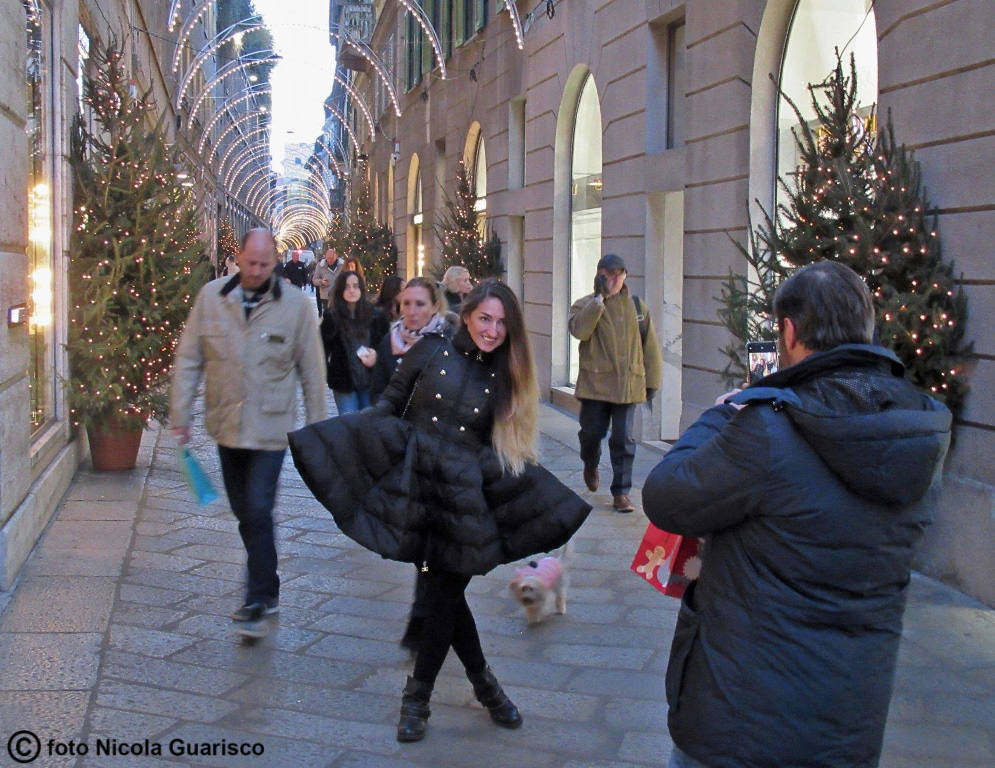 |
|
The Gallery, Via Montenapoleone, Via della Spiga and Via Manzoni |
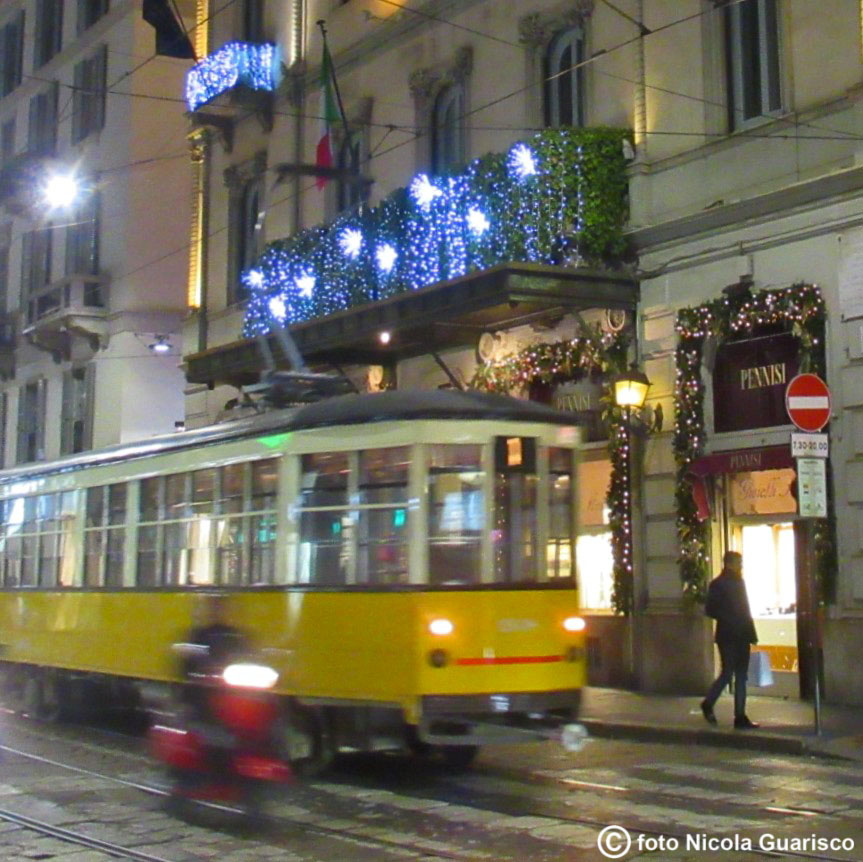
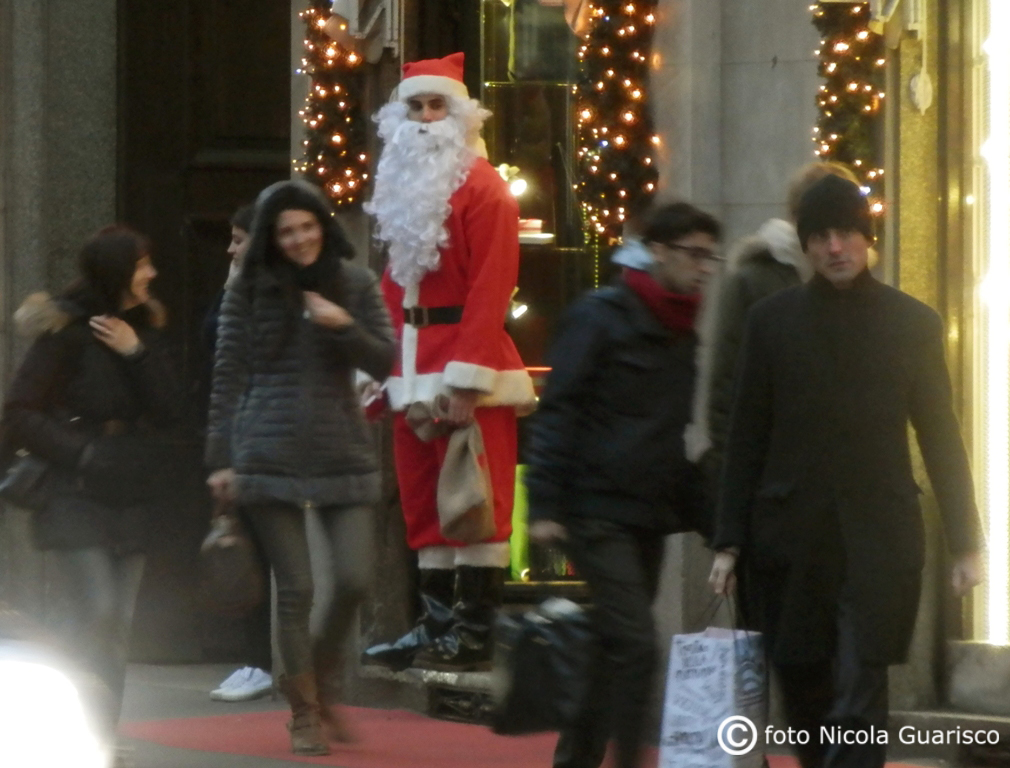 |
|
Via Manzoni. |
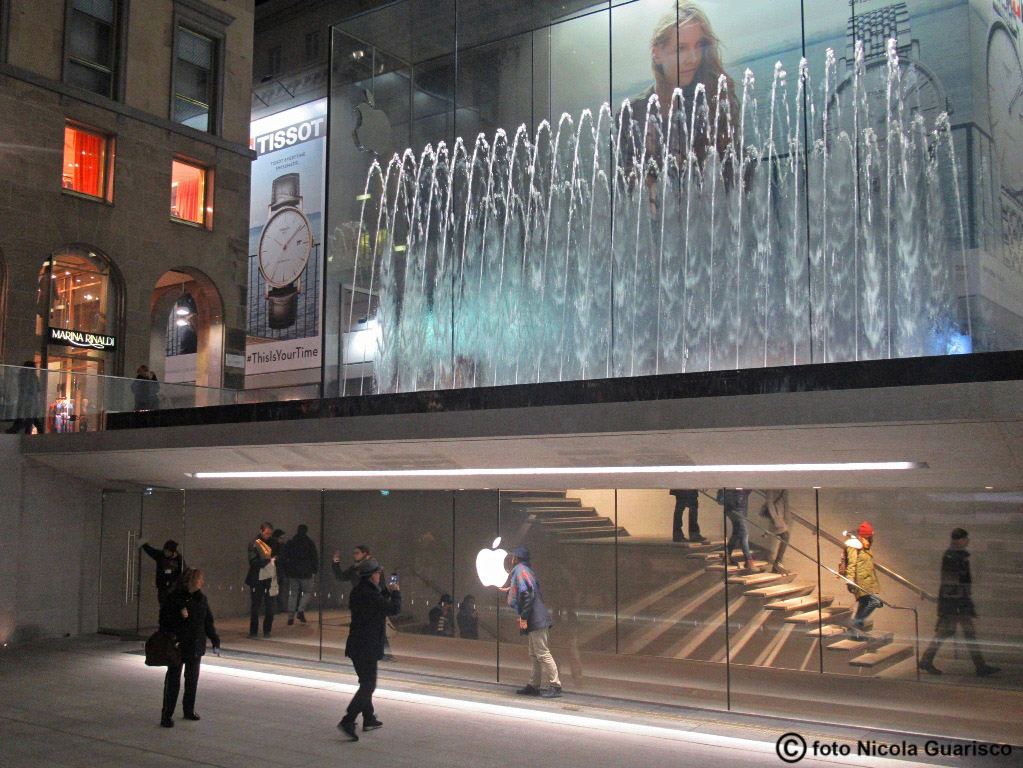
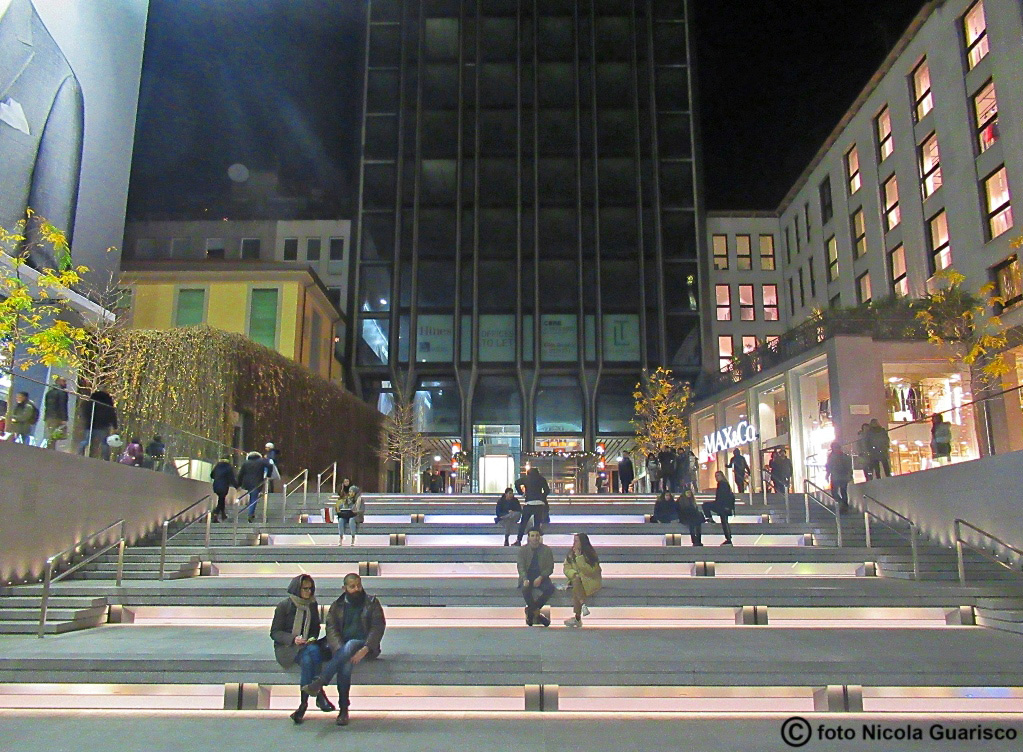 |
|
The new Apple Store, in Piazza Liberty. |
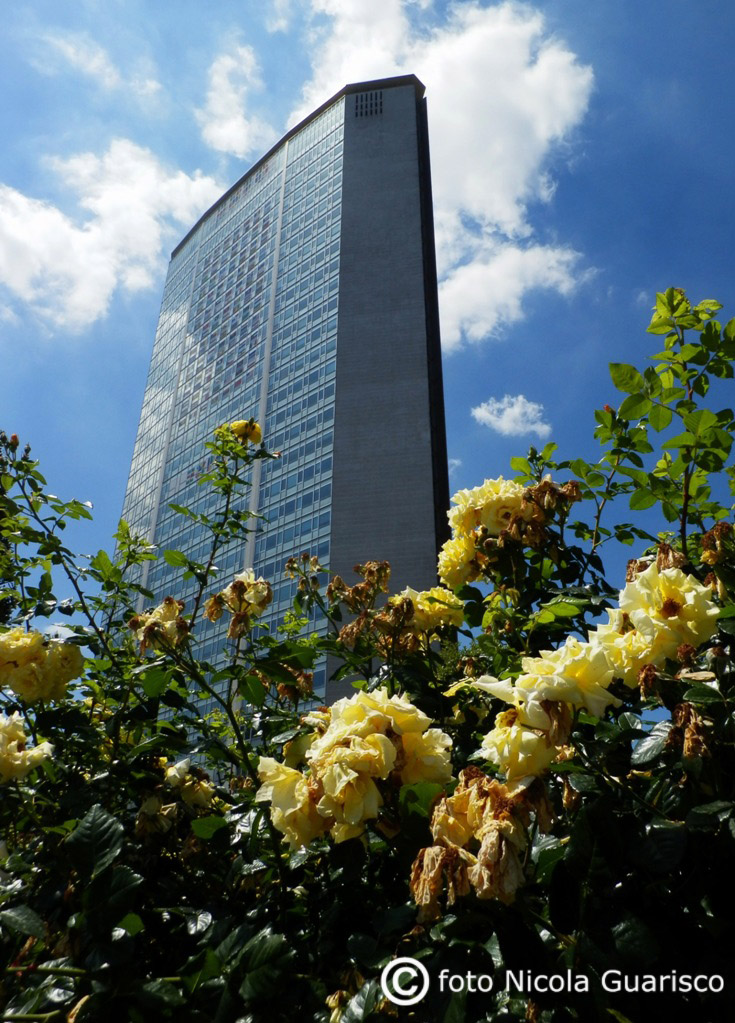
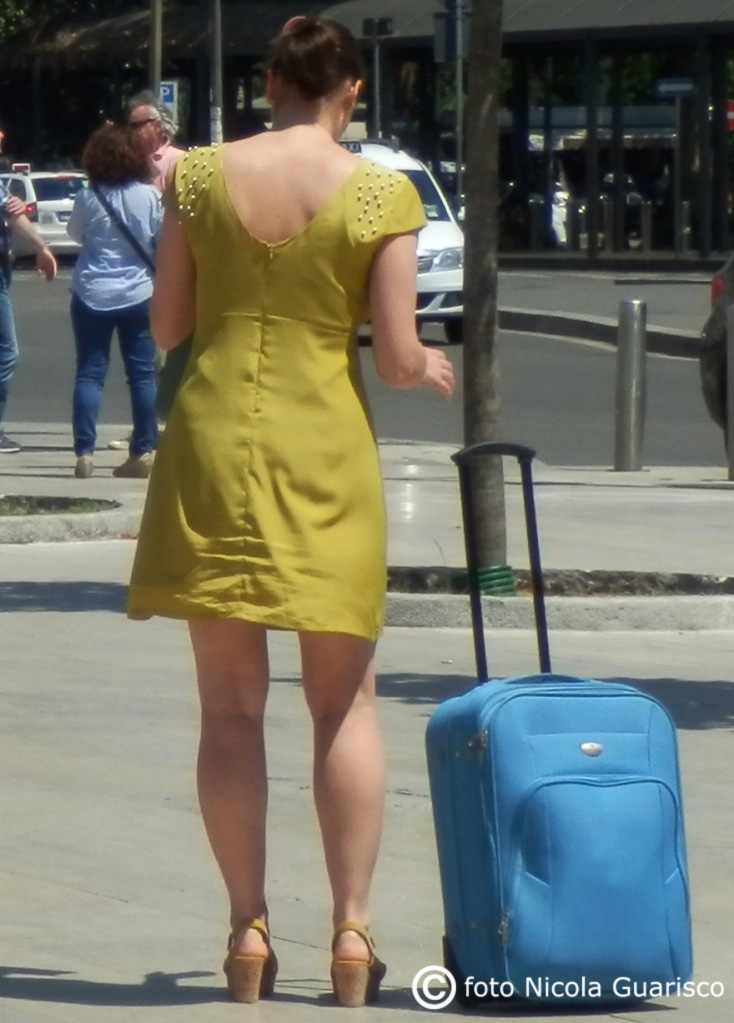
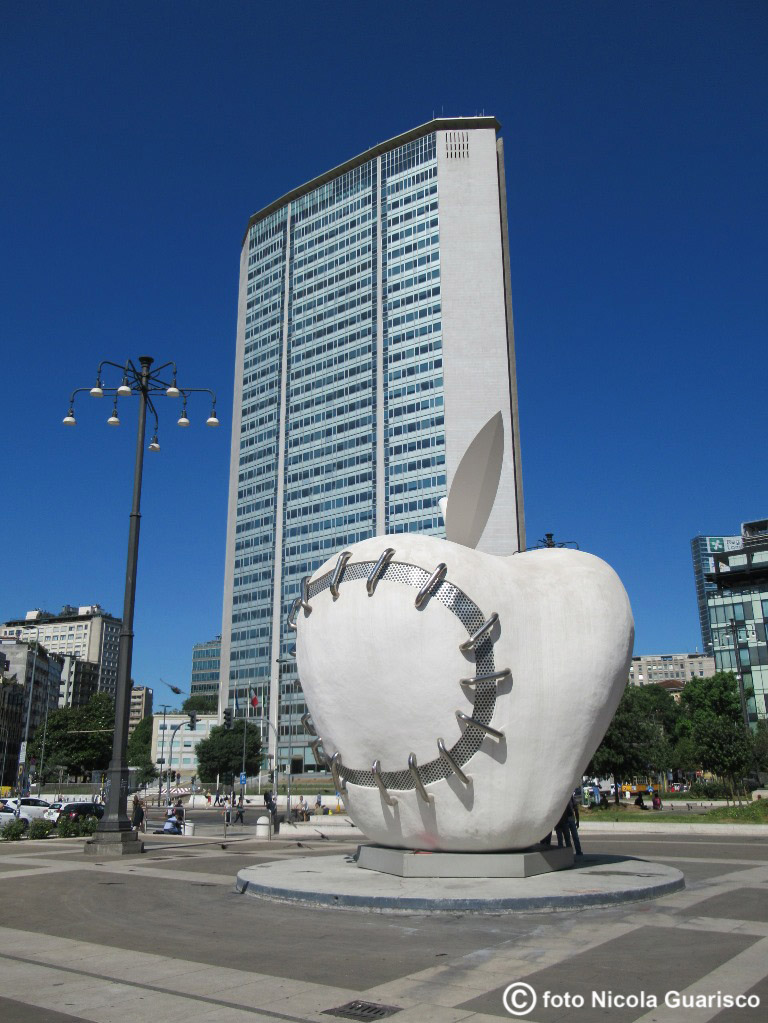
|
|
May roses at the feet of the Pirelli skyscraper next to the central station. Commissioned by Pirelli and constructed by Gio Ponti in 1961, the building is the headquarters of the Lombardy Regional Authority and for many years it was the Italian skyscraper par excellence. Its elegant lines inspired the renowned MetLife skyscraper in New York, which may be considered, in many ways, its twin. |
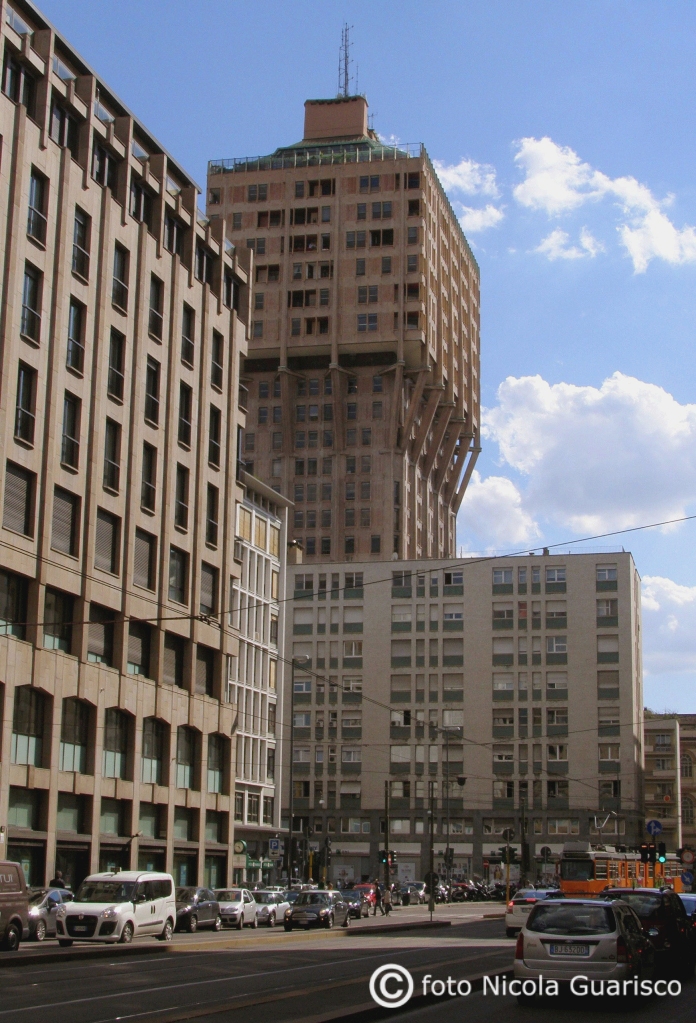
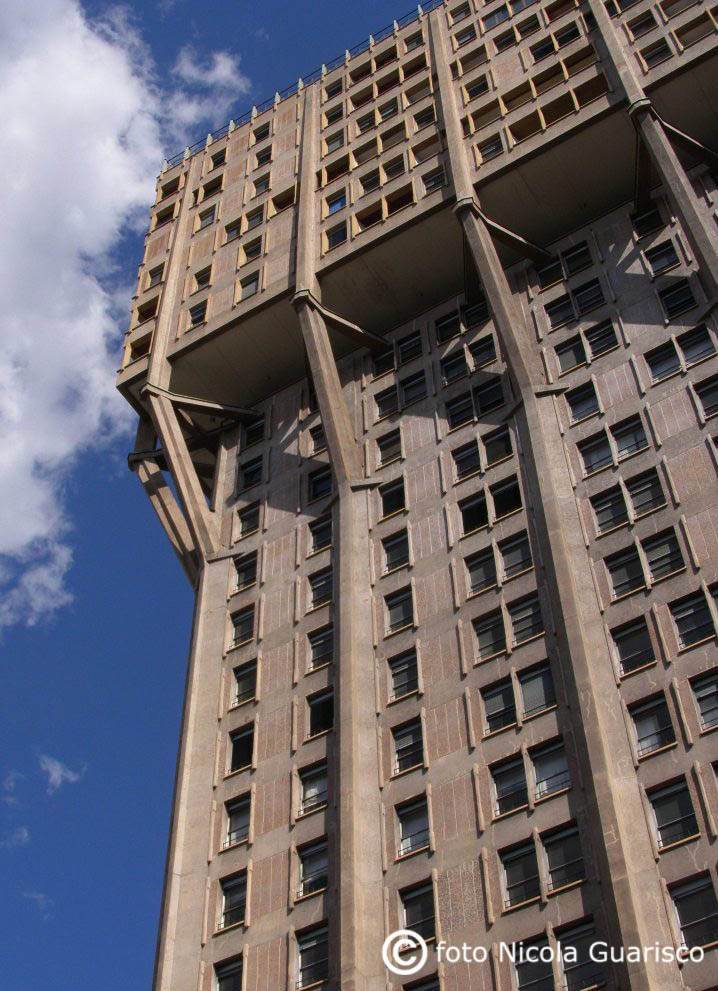
|
|
Loved and hated at the same time, the unmistakable Velasca Tower was the first building symbolizing modern Italy (BBPR study, 1958). It stands a few feet from the Duomo and is a medieval-style skyscraper which brings to mind the architecture of Milan during the Sforza era. |
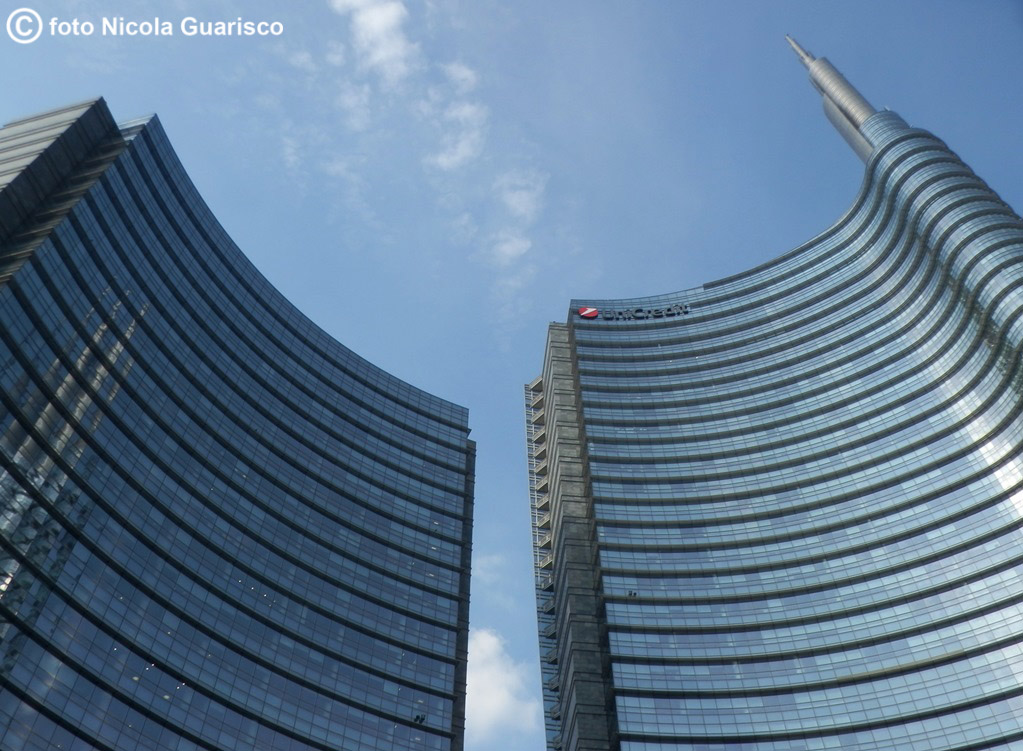
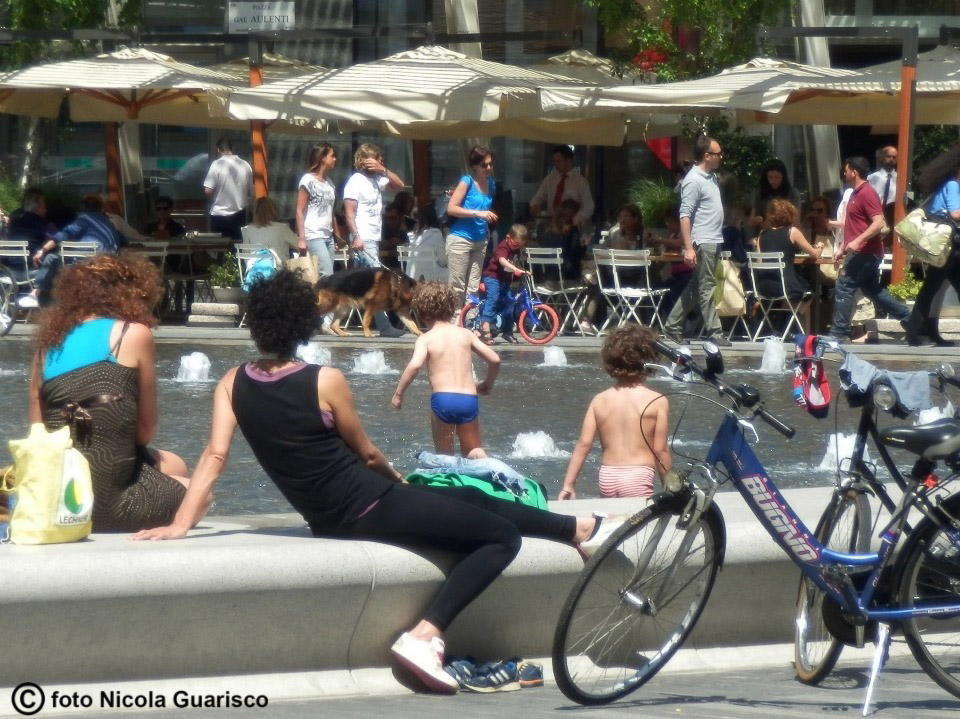 |
|
Gae Aulenti Square (near Porta Nuova), throbbing heart of the most impressive urban requalification projects in Europe. Many skyscrapers, linked to each other by public areas, parks and cycle-pedestrian paths, have recently sprung up around this area. |
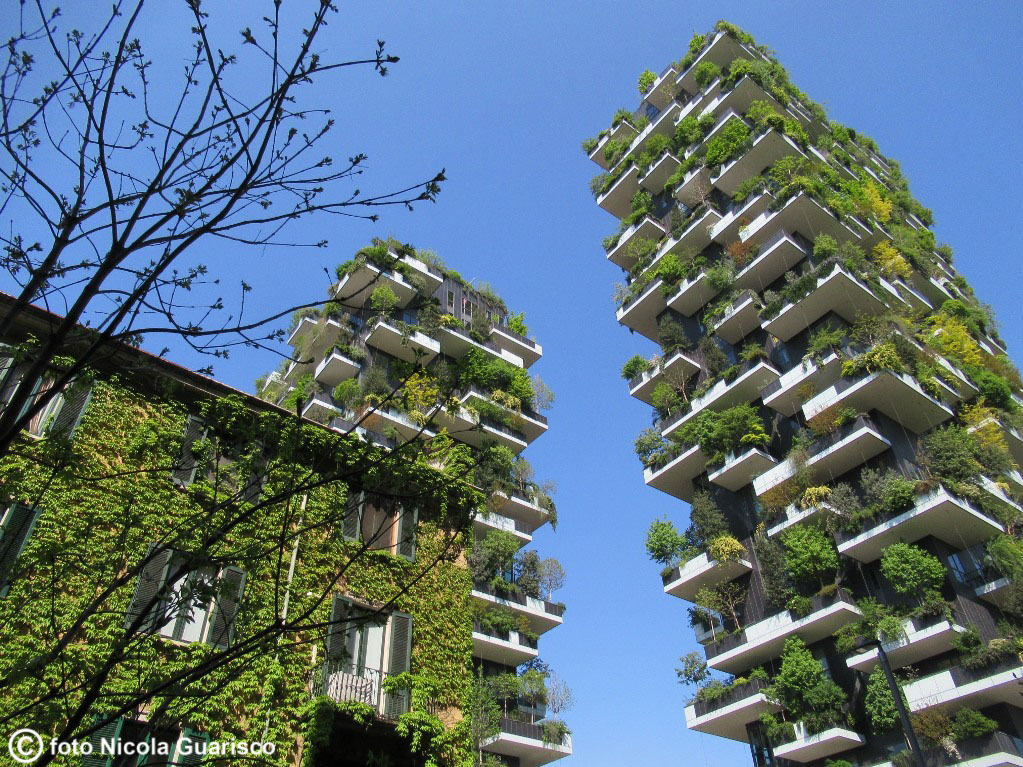
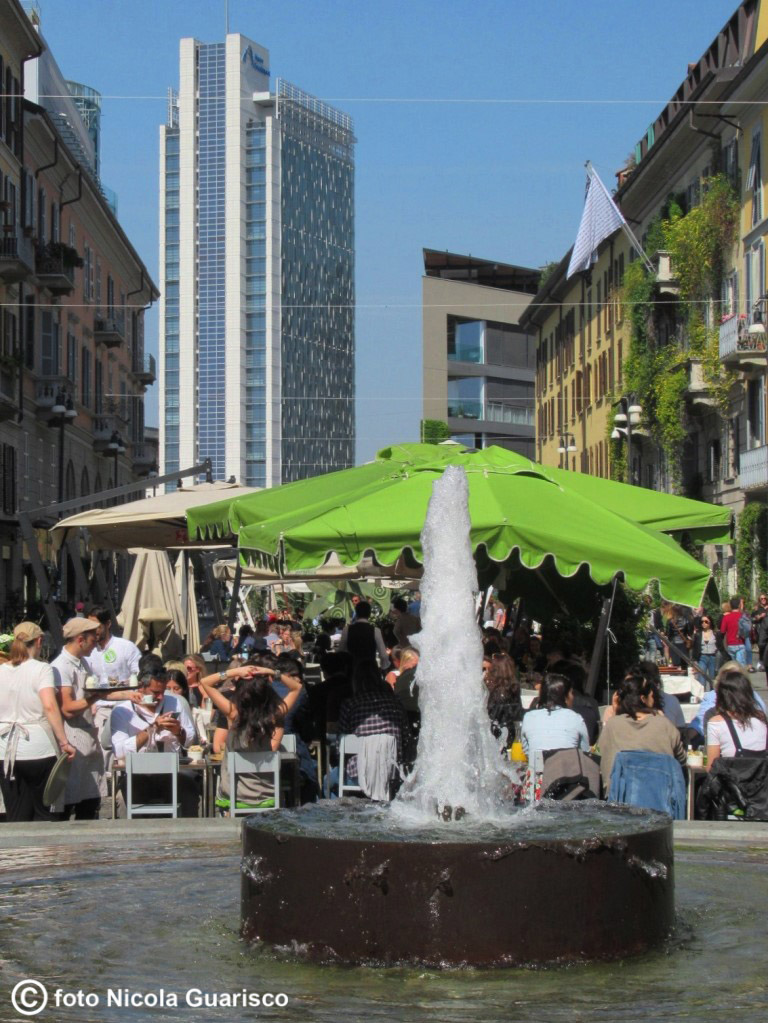
|
Porta Nuova: the two buildings covered with trees, known as the "Vertical Forest". They were awarded the title of Best European Architecture of 2015 by the Illinois Institute of Technology of Chicago. Corso Como in the vicinity, one of the best areas in Milan for nightlife and parties. |
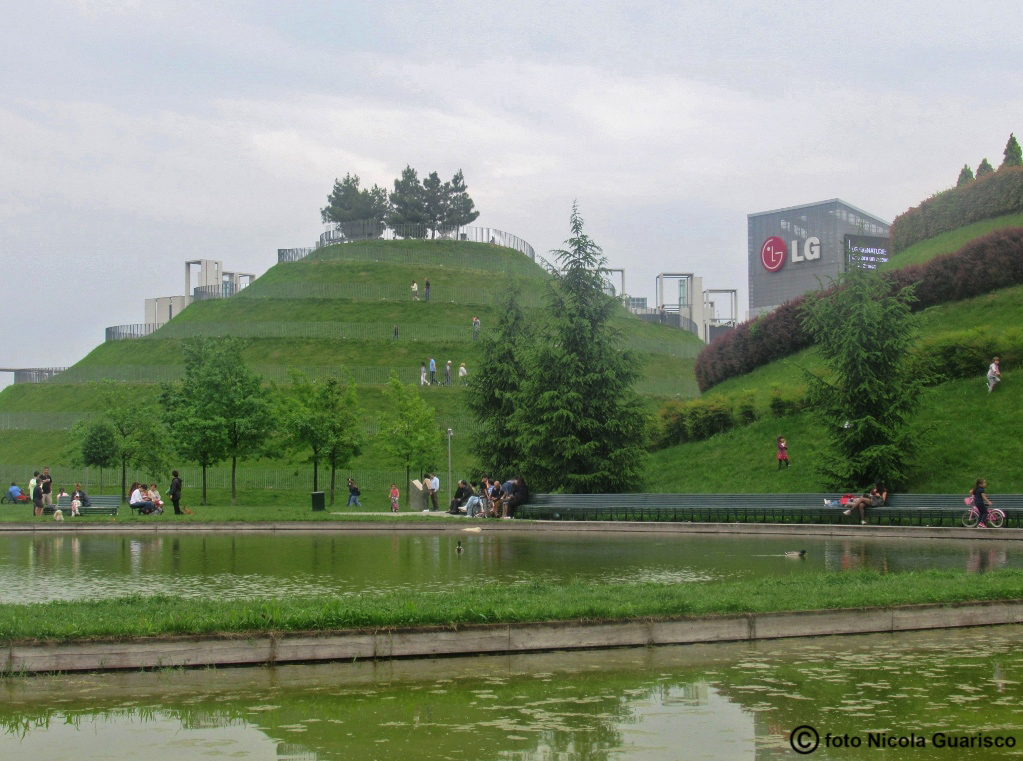
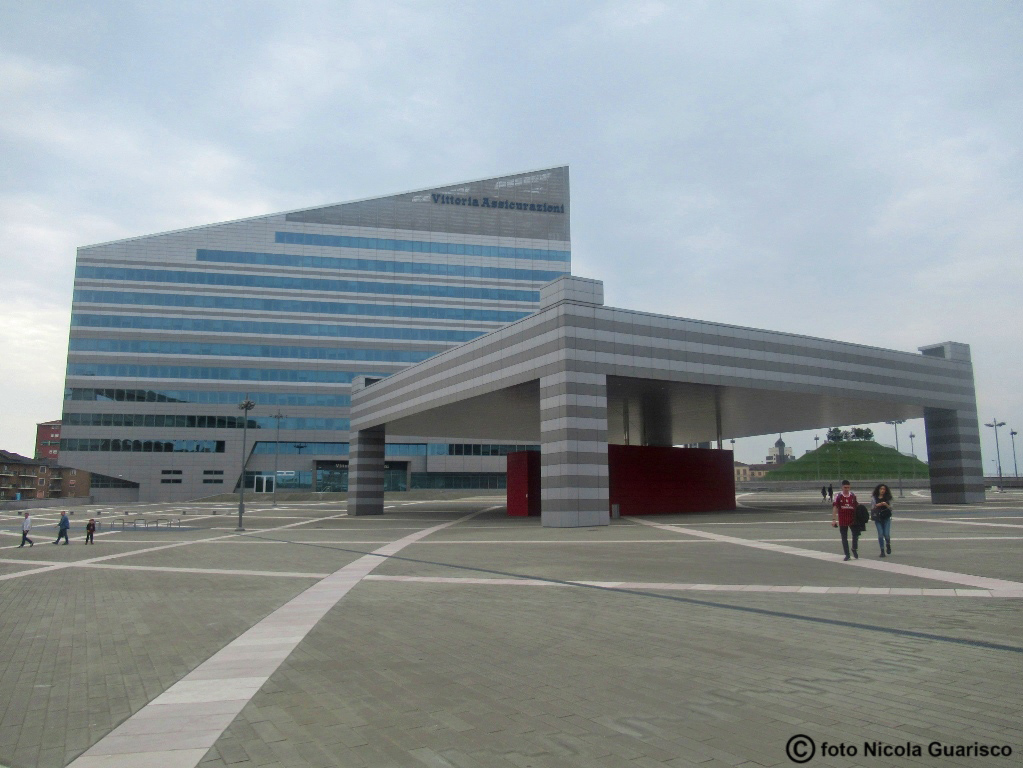 |
|
The new Parco del Portello and Piazza Gino Valle. |
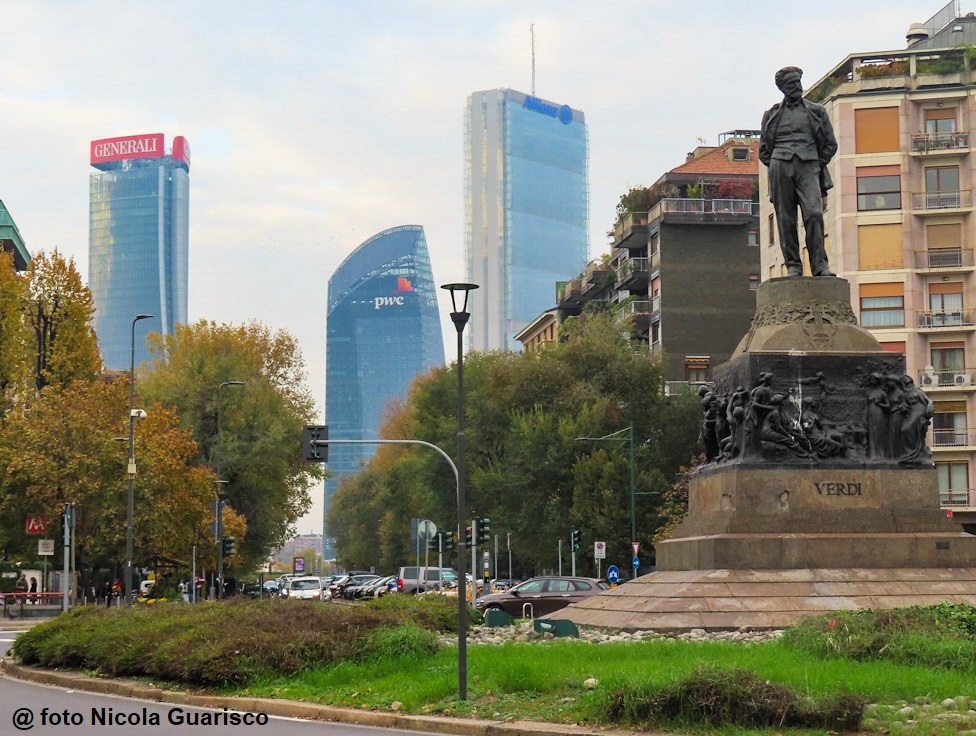
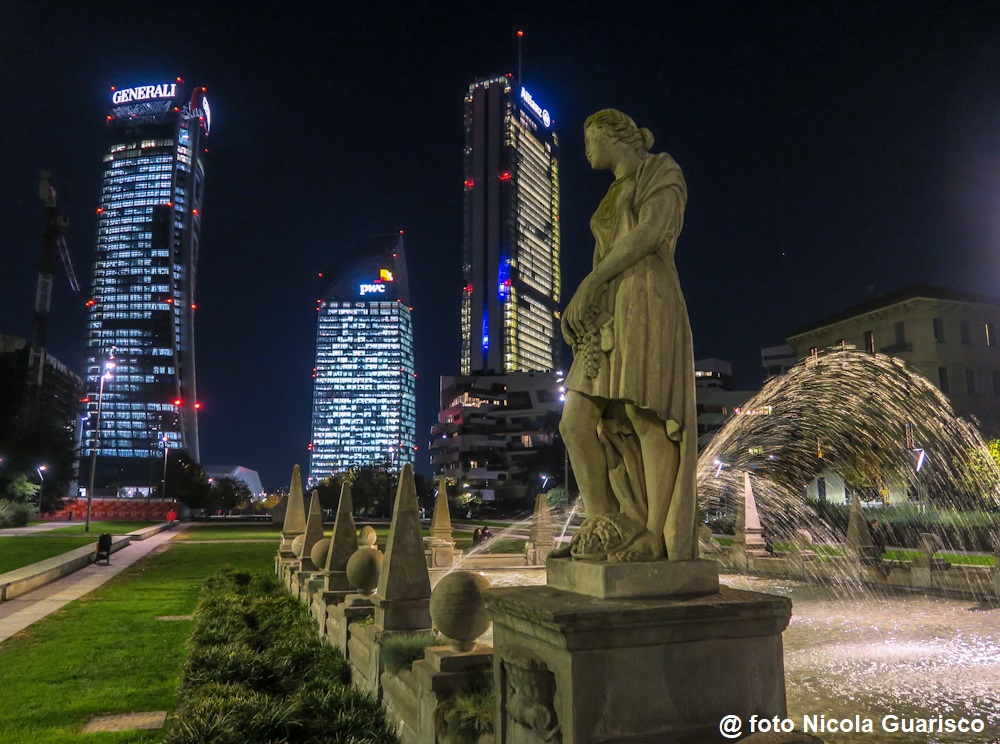 |
The towers of City Life behind the statue of City Life, the Fontana delle Quattro Stagioni (Four Seasons Fountain). |
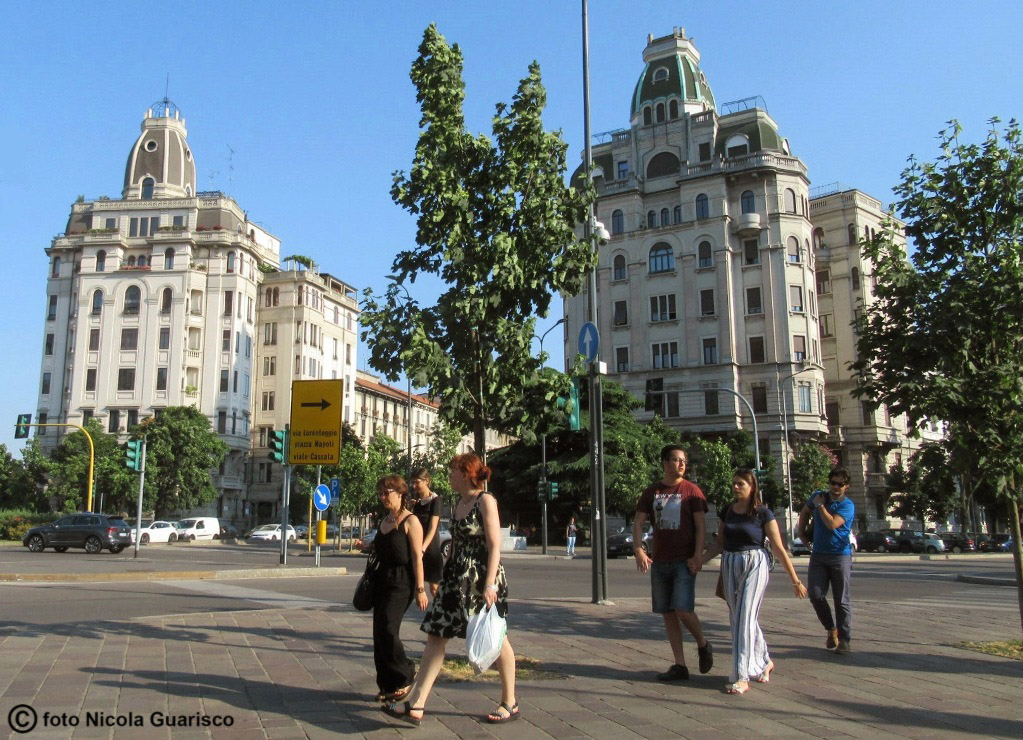
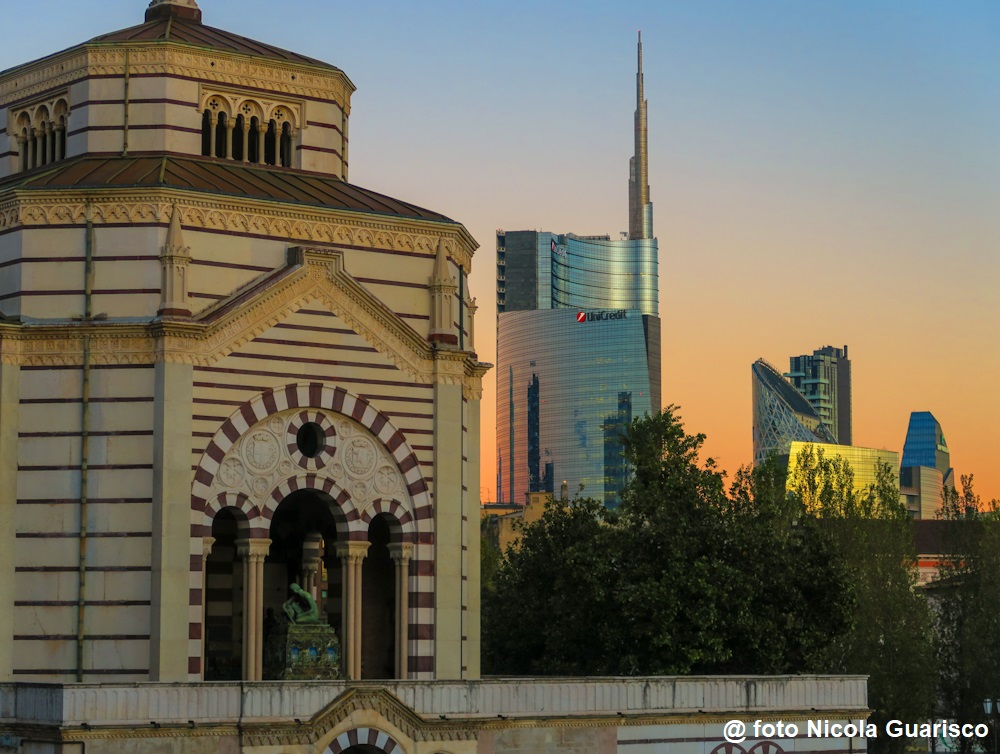 |
Piazza Piemonte and Via Washington with the twin palaces by Mario Borgato (1923). The Monumental Cemetery and the skyscrapers of Porta Nuova. |
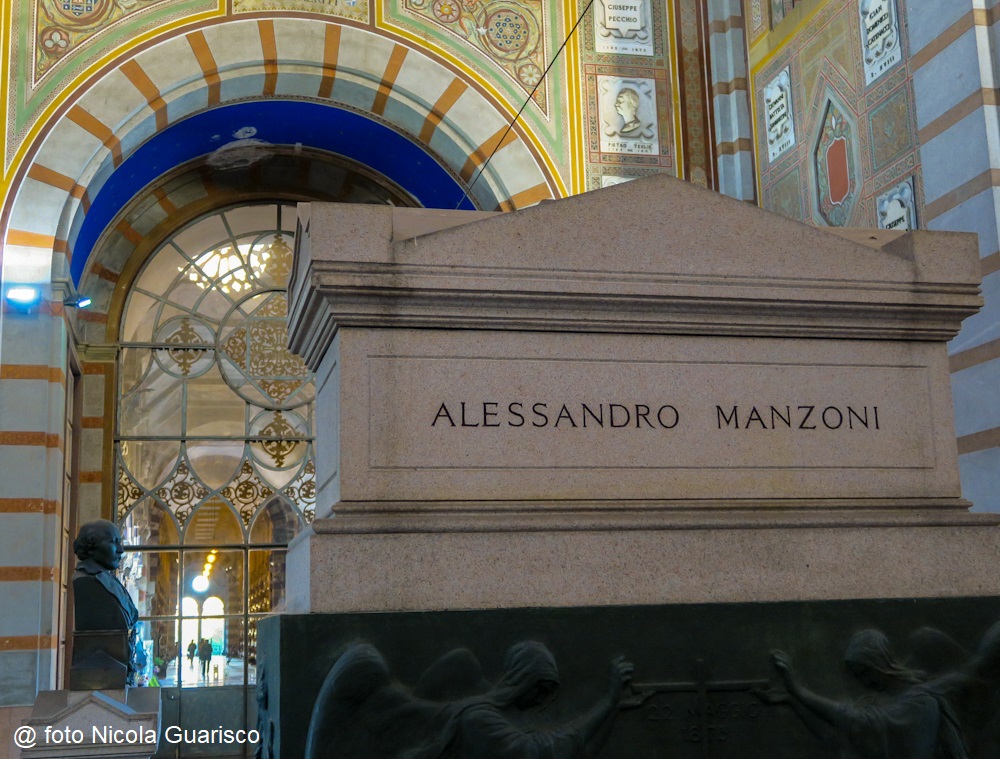
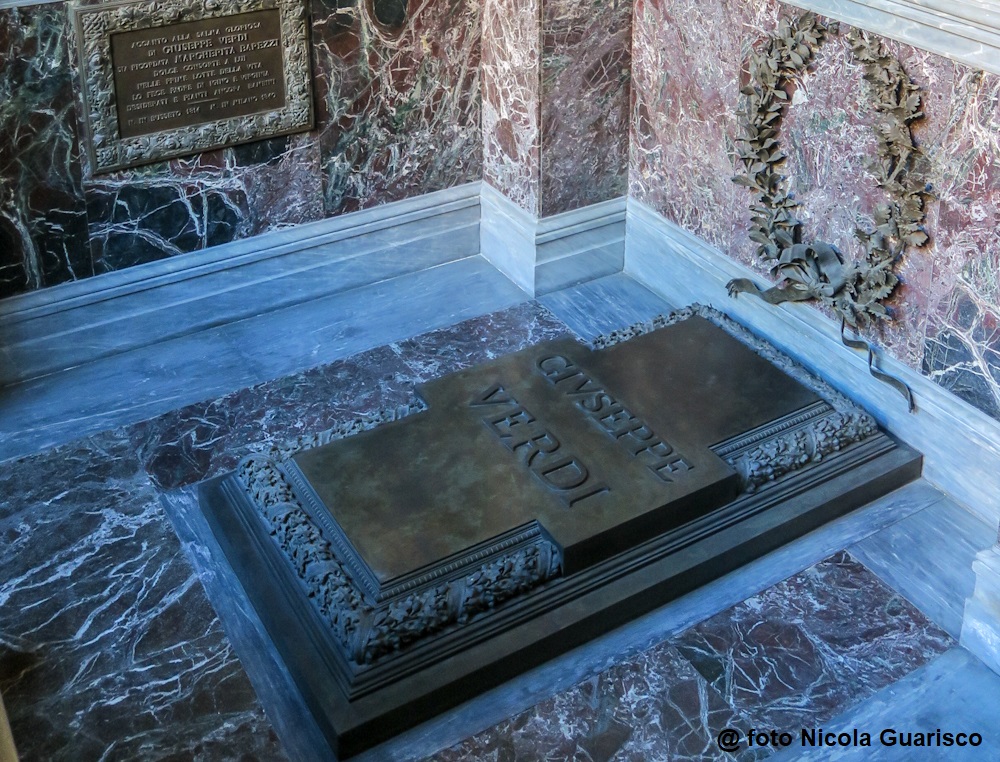 |
Monumental Cemetery, the grave of Alessandro Manzoni.
The grave of Giuseppe Verdi, |
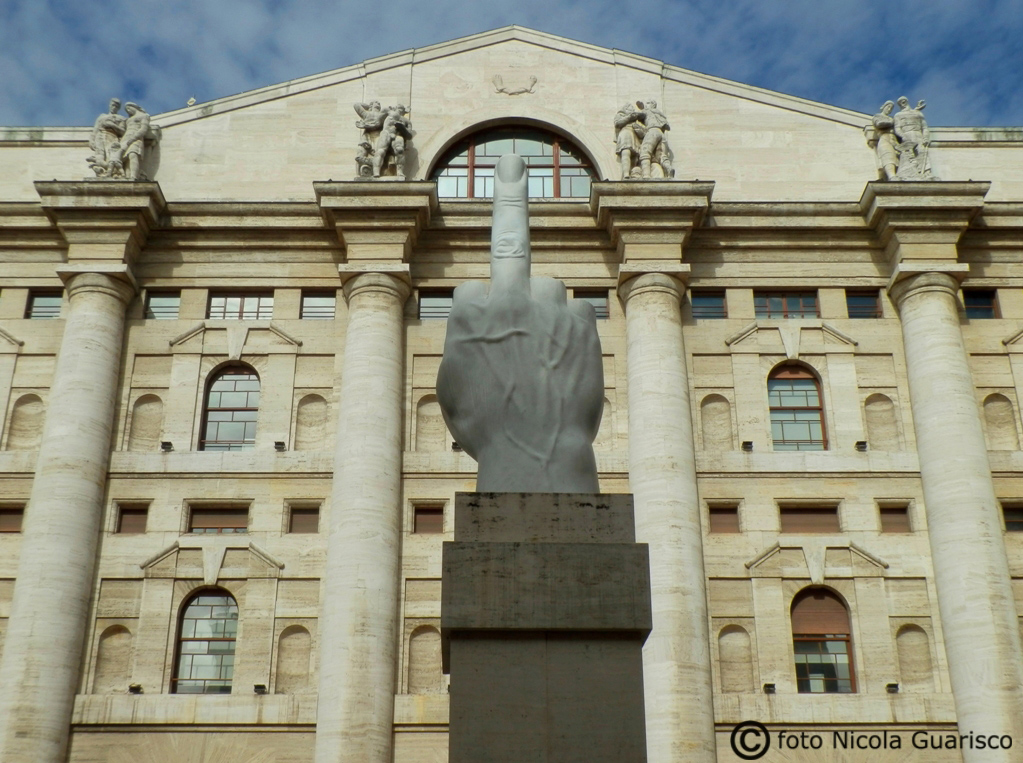
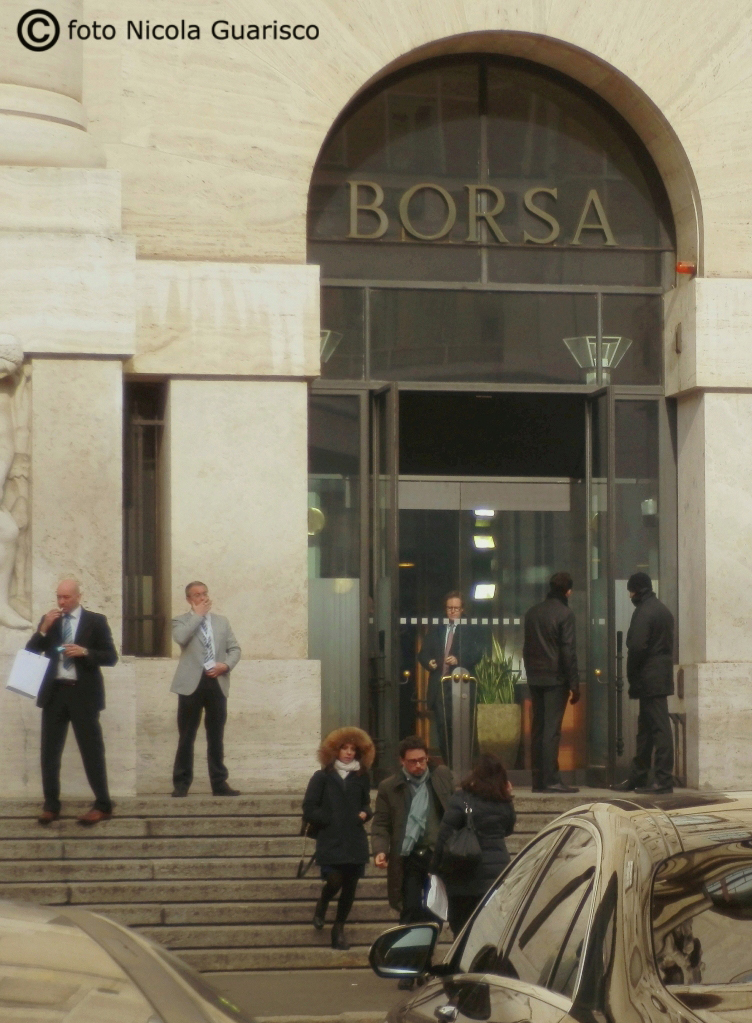 |
|
Piazza degli Affari: the Stock Exchange, the financial heart of Italy. It is located inside Palazzo Mezzanotte and is symbolized by a sculpture by Maurizio Cattelan, a closed fist giving the middle finger. We wonder whether it is aimed at the People or the "Capital". |
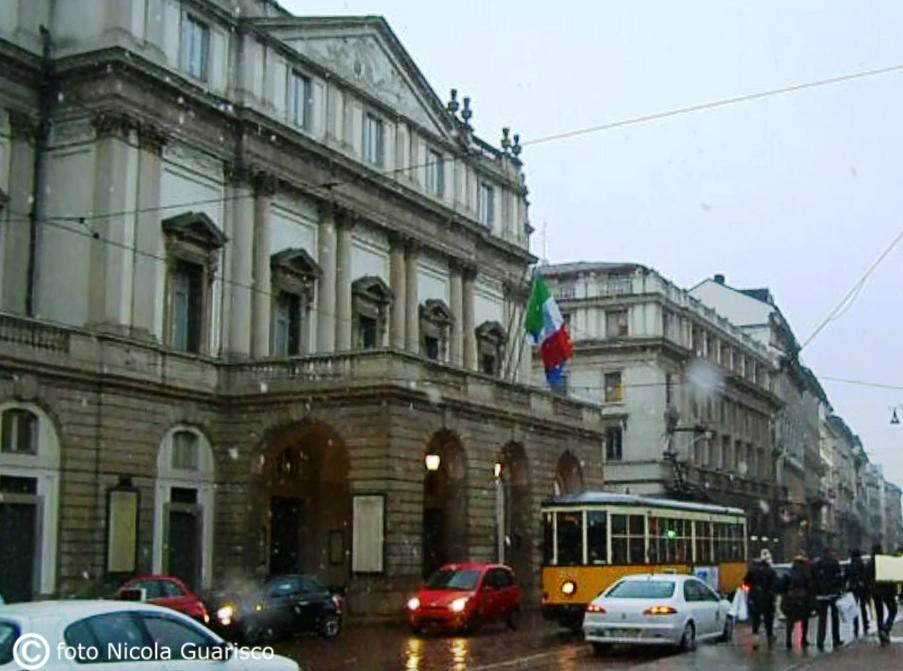
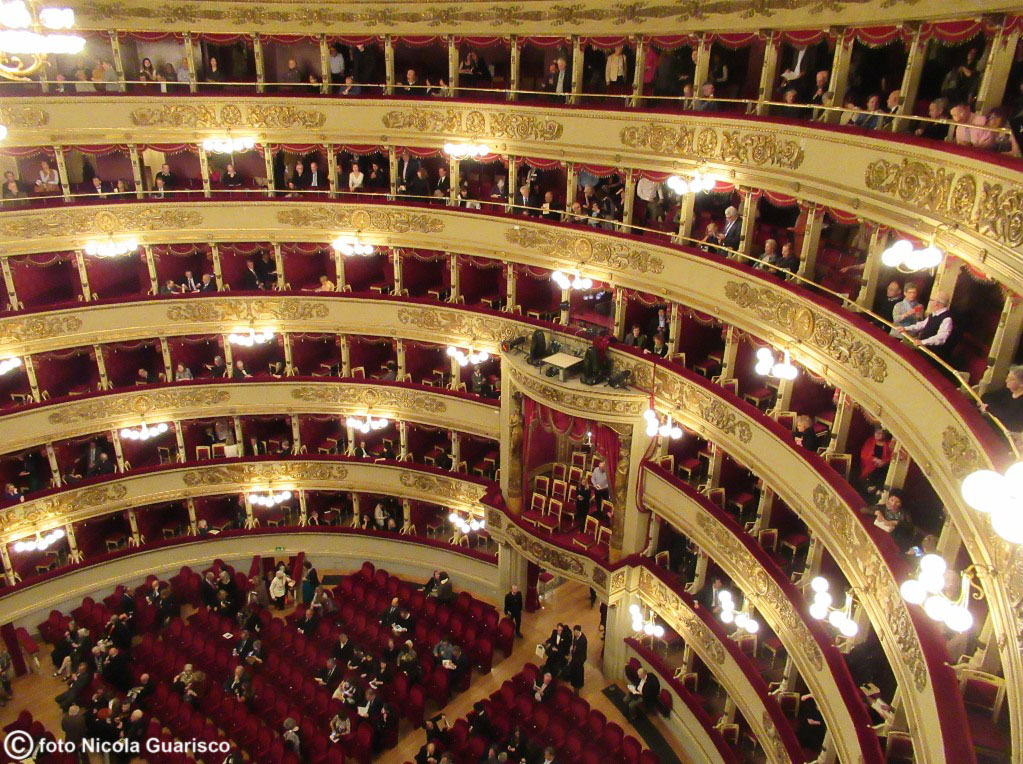 |
|
The Scala, the most prestigious opera theatre in the world. Inaugurated in 1778, it was almost destroyed during the War together with many other monuments, and it was the first building to be rebuilt in 1945. |
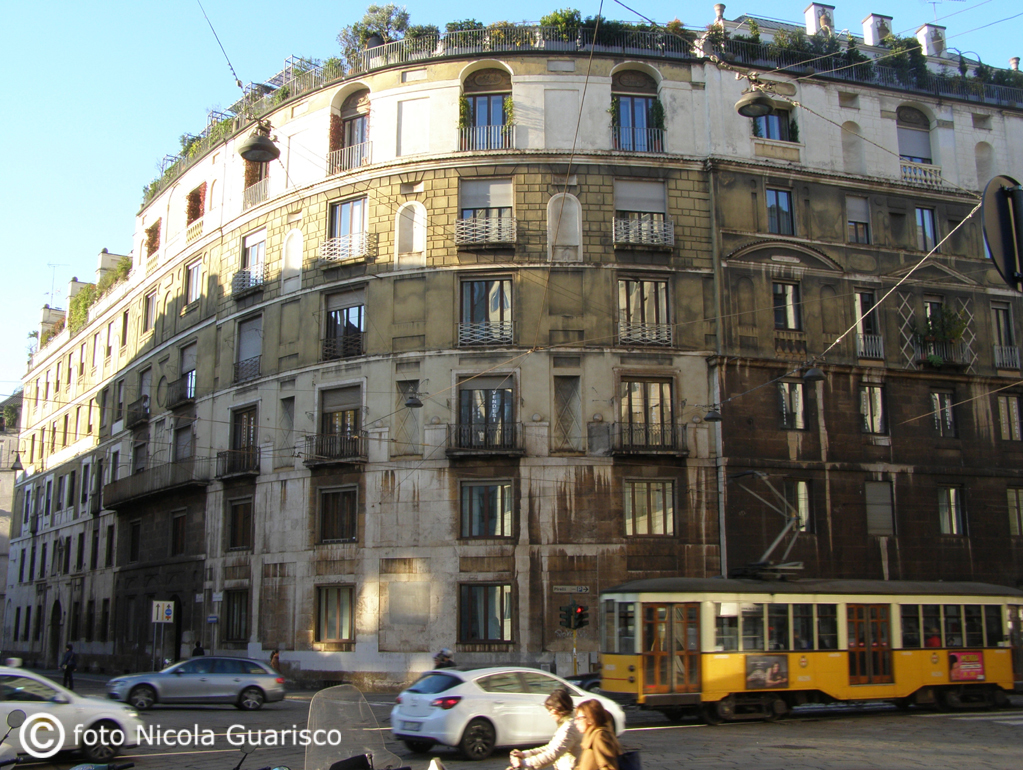
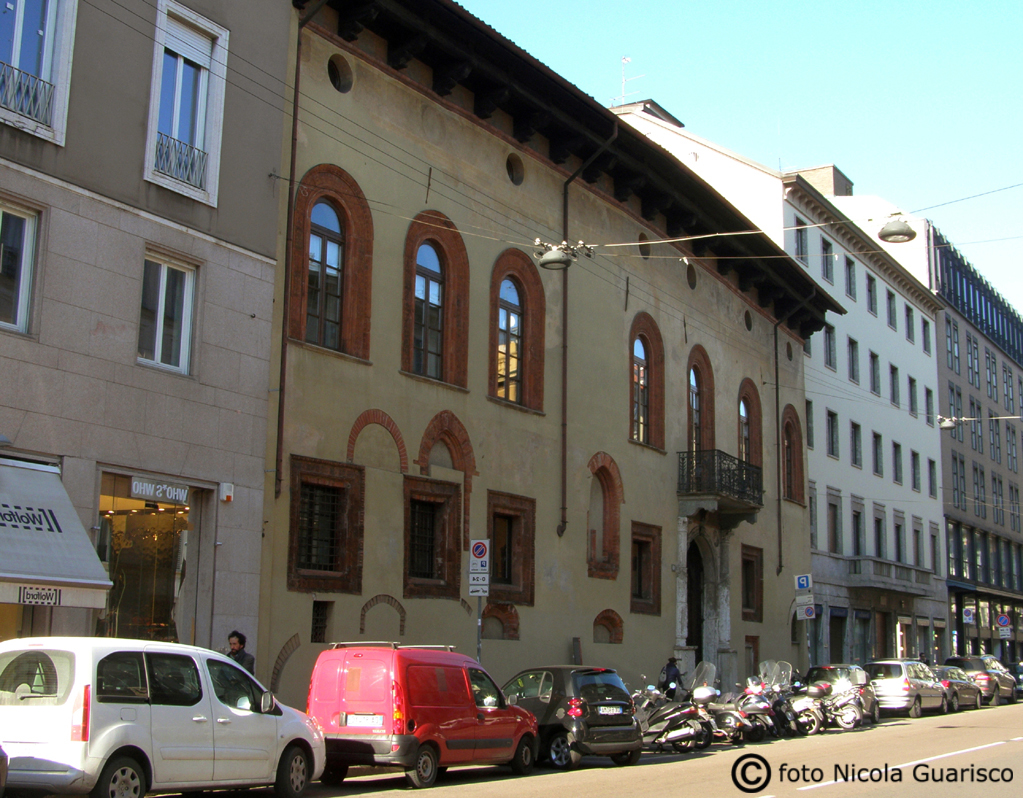 |
United States of America Square: the Ca’ Brutta, built by Giovanni Muzio in 1920, is considered the architectural manifesto of the movement
The only renaissance palazzo in Milan which is wholly intact is Fontana-Silvestri, |
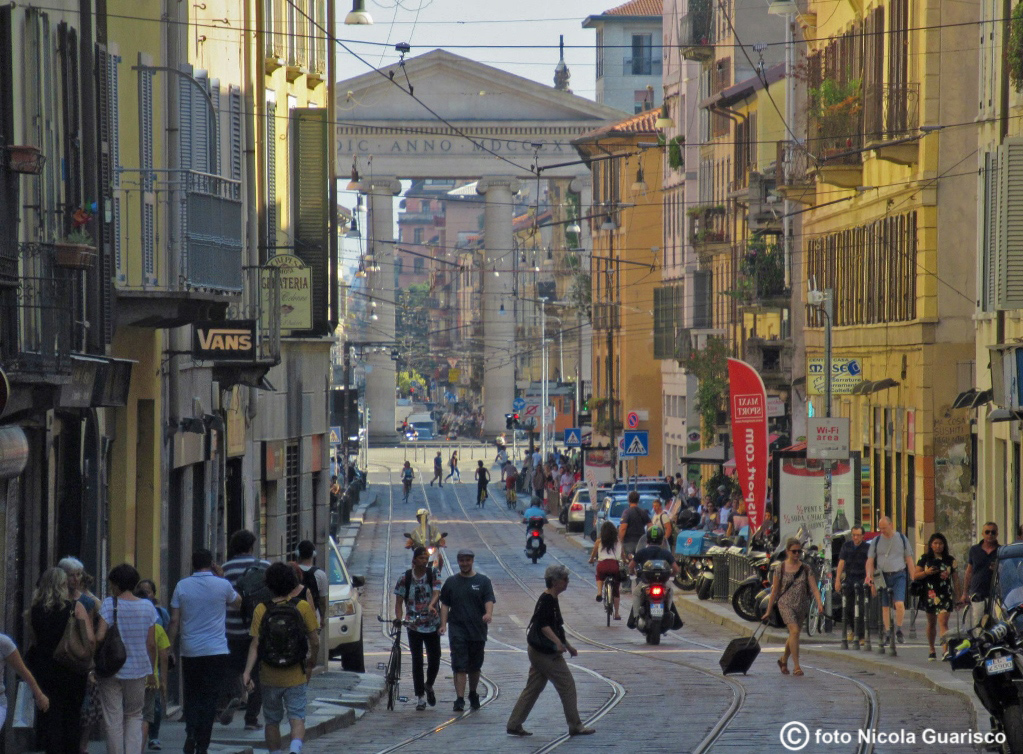
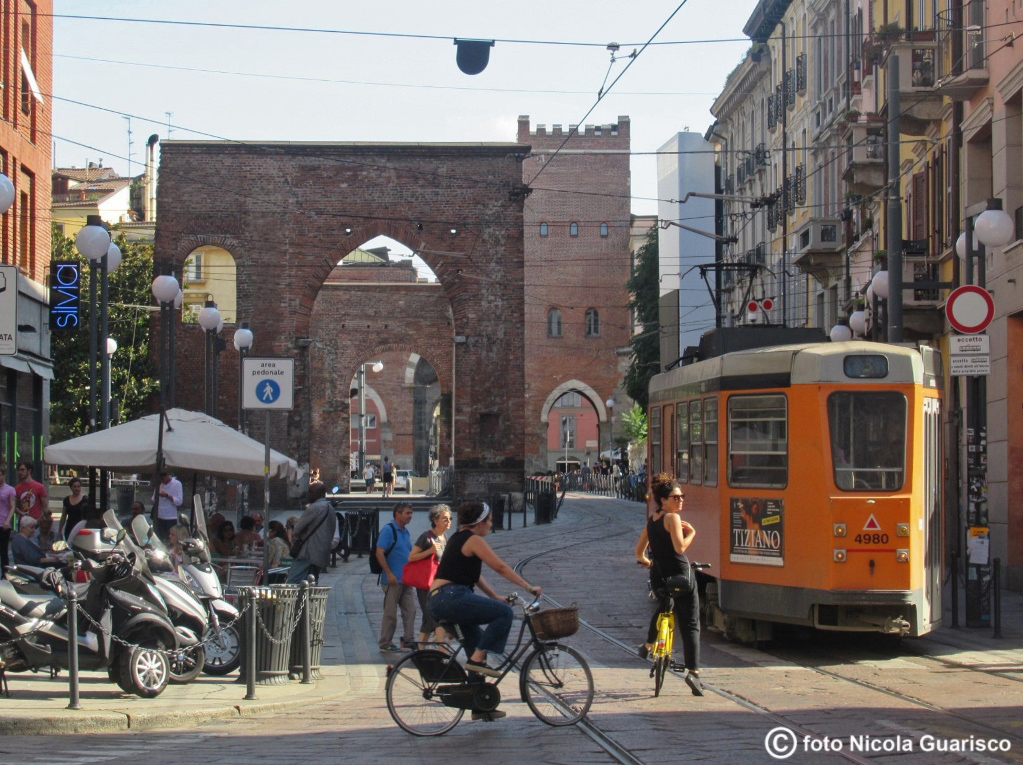
|
|
Porta Ticinese, one of the ancient medieval entry gates to the city. |
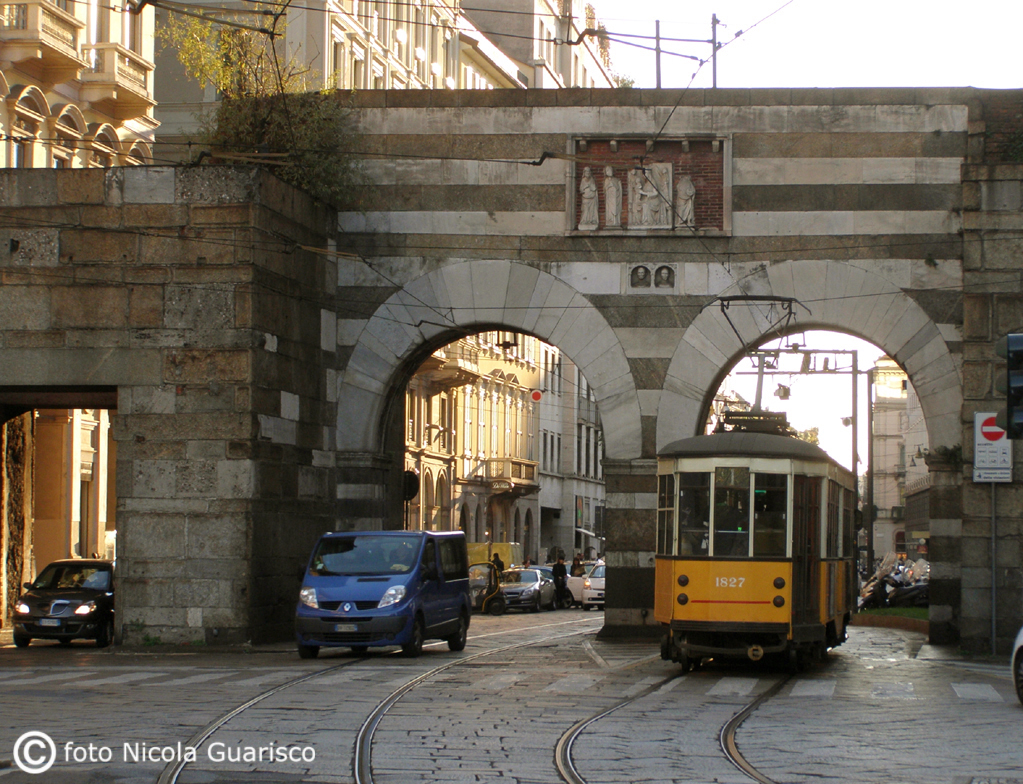
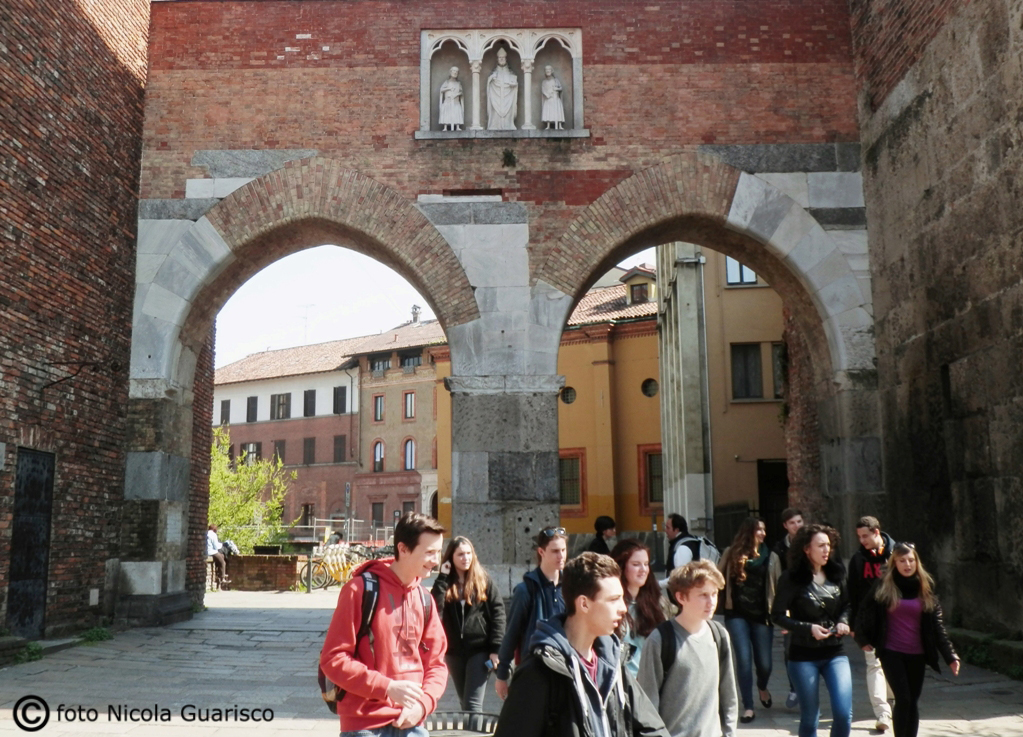 |
Porta Nuova and the Pusterla of S.Ambrose, a nearly identical copy of the medieval version. |
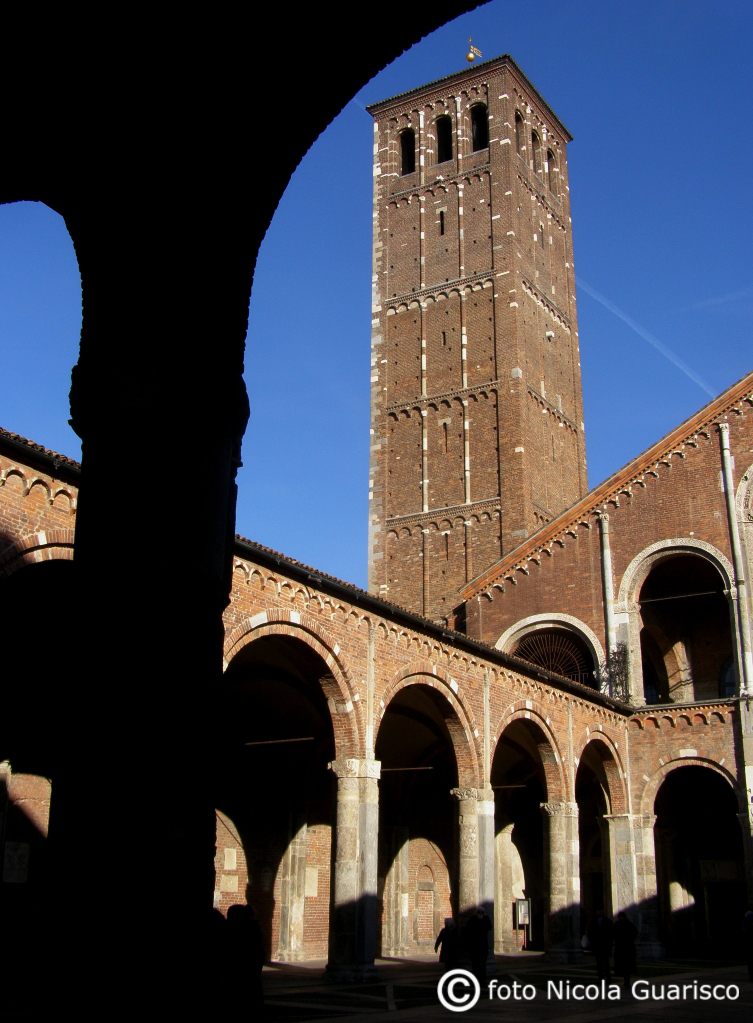
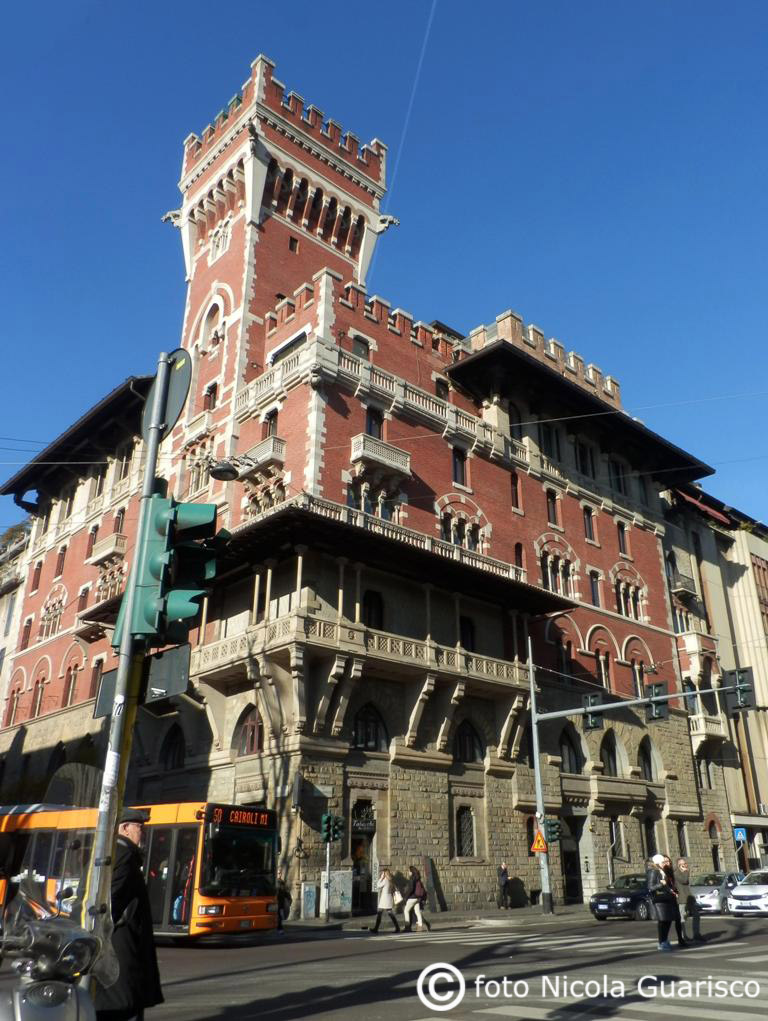
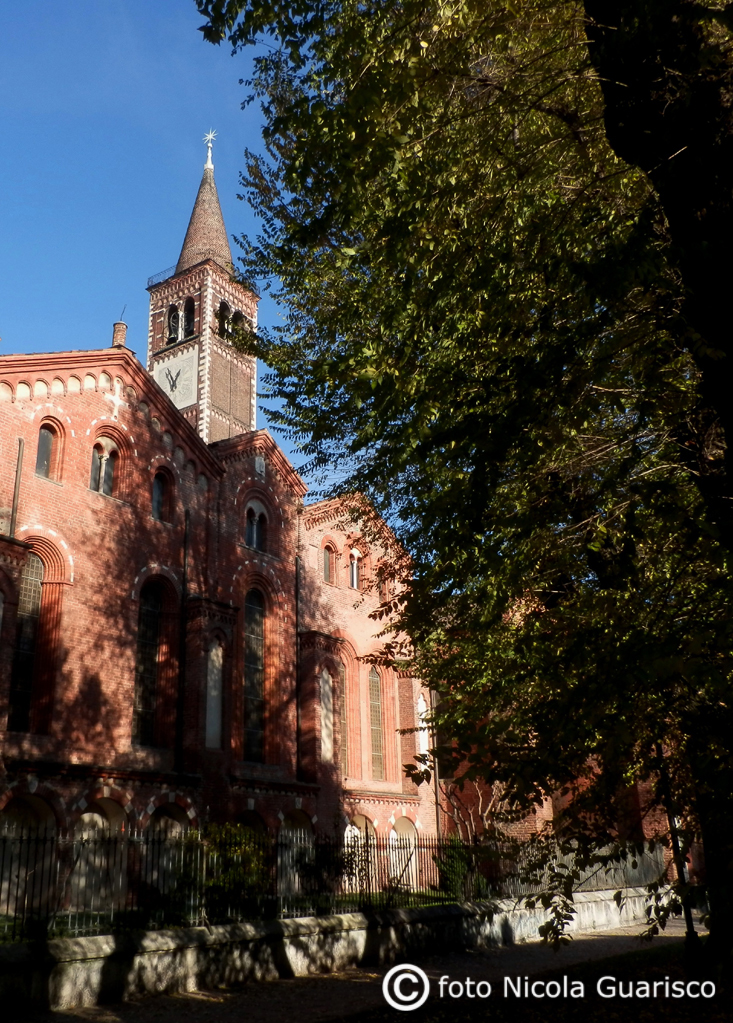
|
The ancient basilica of S. Ambrose, patron saint of Milan. Erected in 379, it is the “mother church” of Romanesque architecture in Lombardy. In front of S. Ambrose we find Palazzo Cova (1910), the twin of Villa Gaeta in Lake Como, both built by the Coppedè architects in the early 1900s. S. Eustorgio held the remains of the Three Magi, given by emperor Constantine to the Bishop of Milan, Eustorgio. In 1164 they were purloined by Frederick Barbarossa as spoils of war and transferred to the Cathedral of Cologne in Germany. |
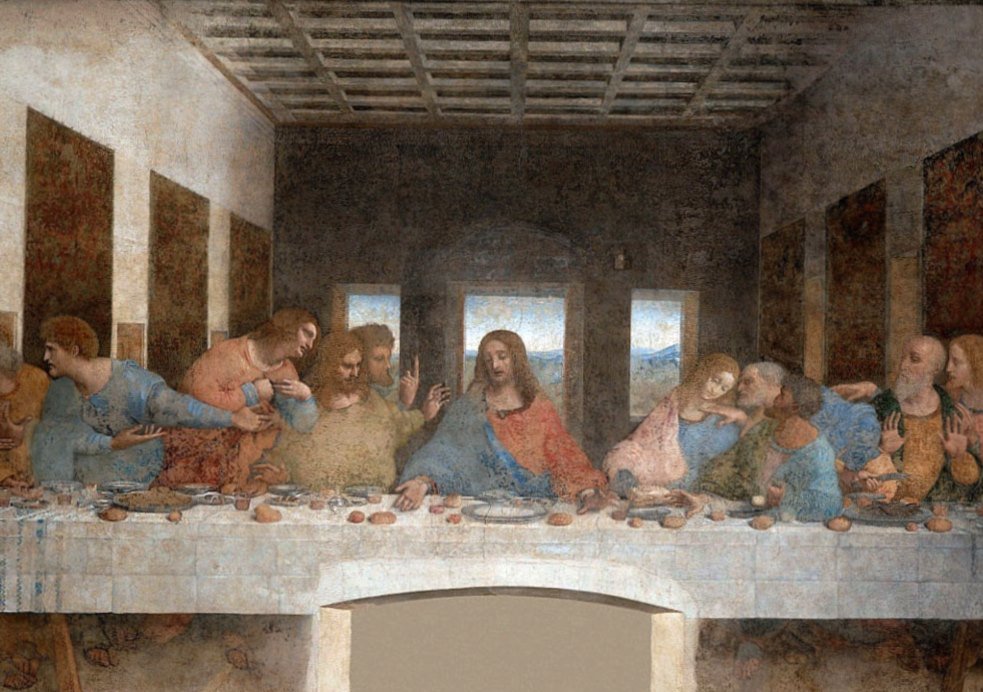
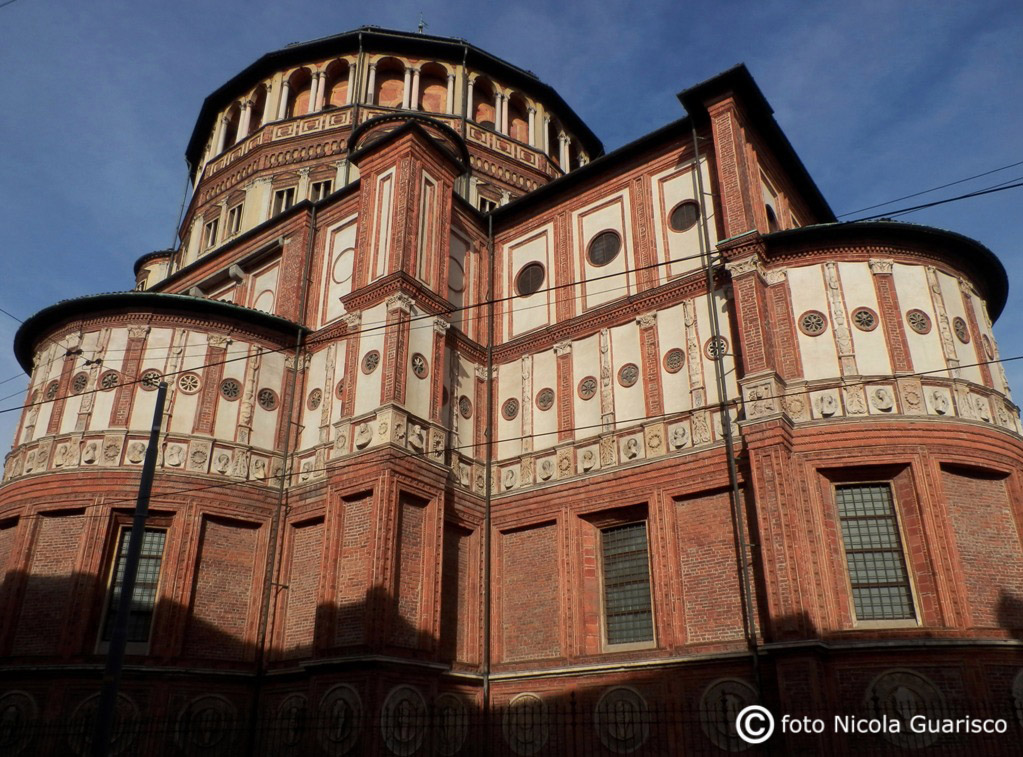
|
|
The most famous painting in the world, The Last Supper by Leonardo da Vinci (1498), is kept in the renaissance church of S. Maria delle Grazie, not far from S. Ambrose. |
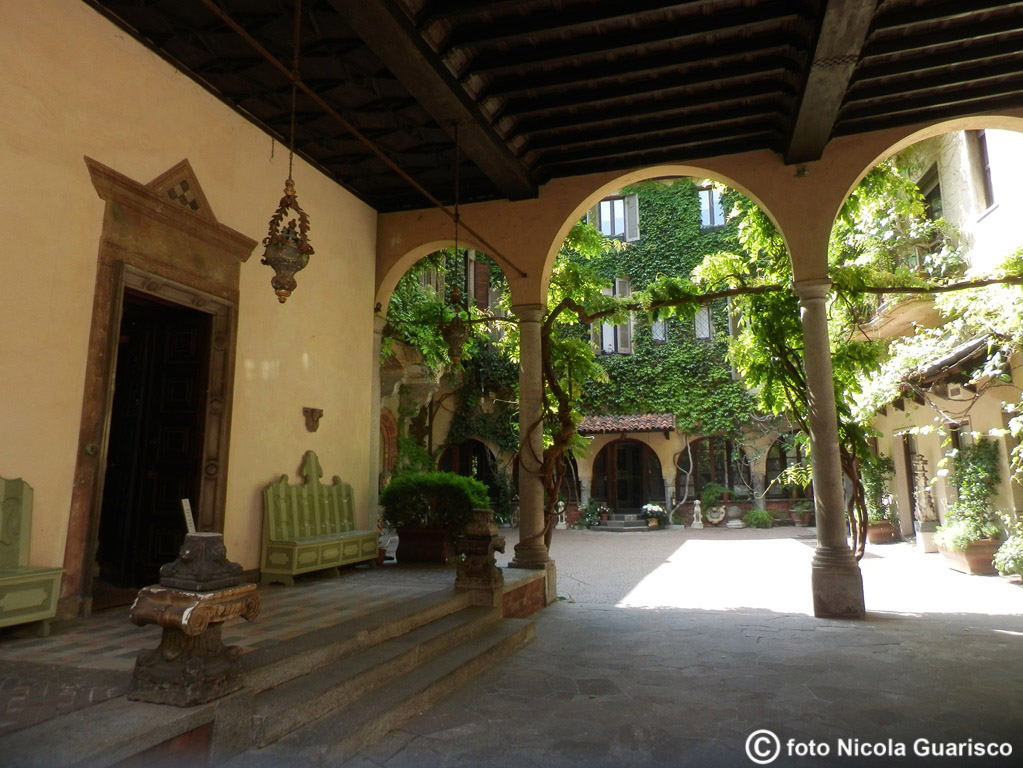
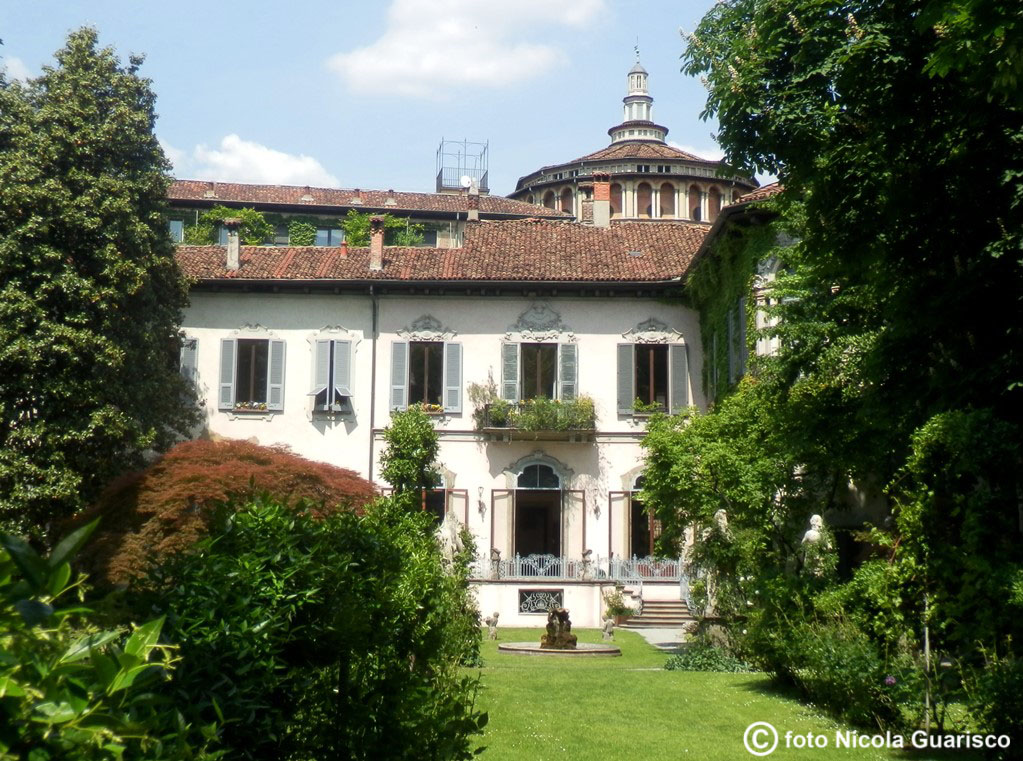
|
|
Next to the church of S.Maria delle Grazie stands Casa Atellani, which hosts the historic garden known as Leonardo’s Vineyard. It was completely renovated in 2015. Here can you visit the vineyard which produced the same grapes Leonardo used to enjoy back in his day. The vineyard was recreated using the same DNA as that of the original plant. |
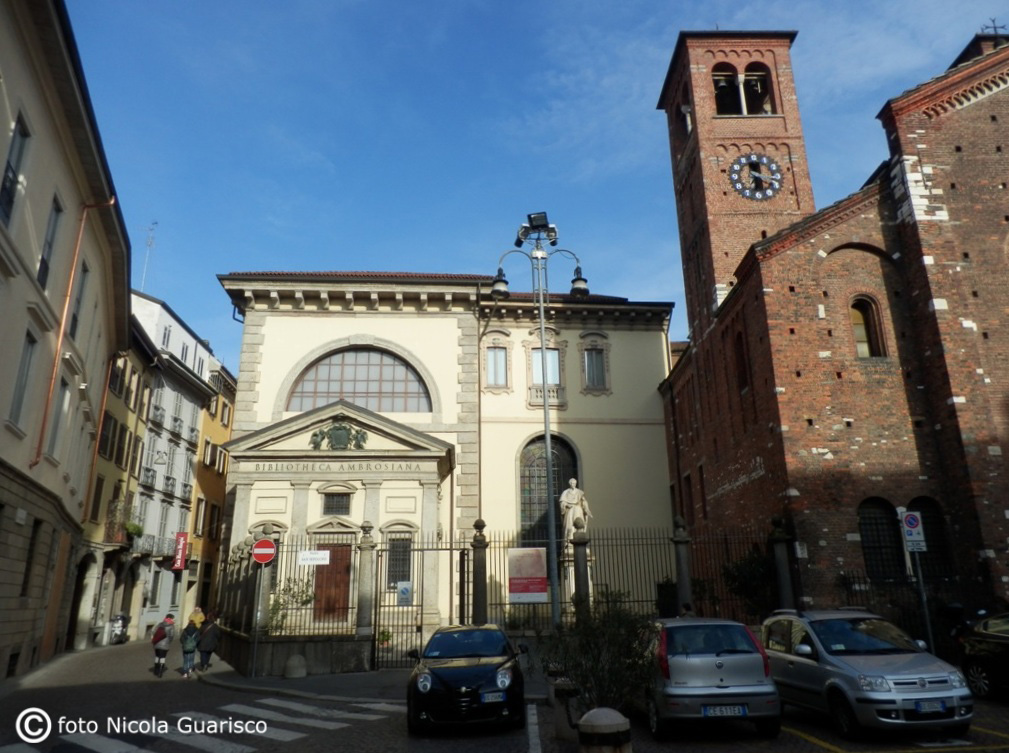
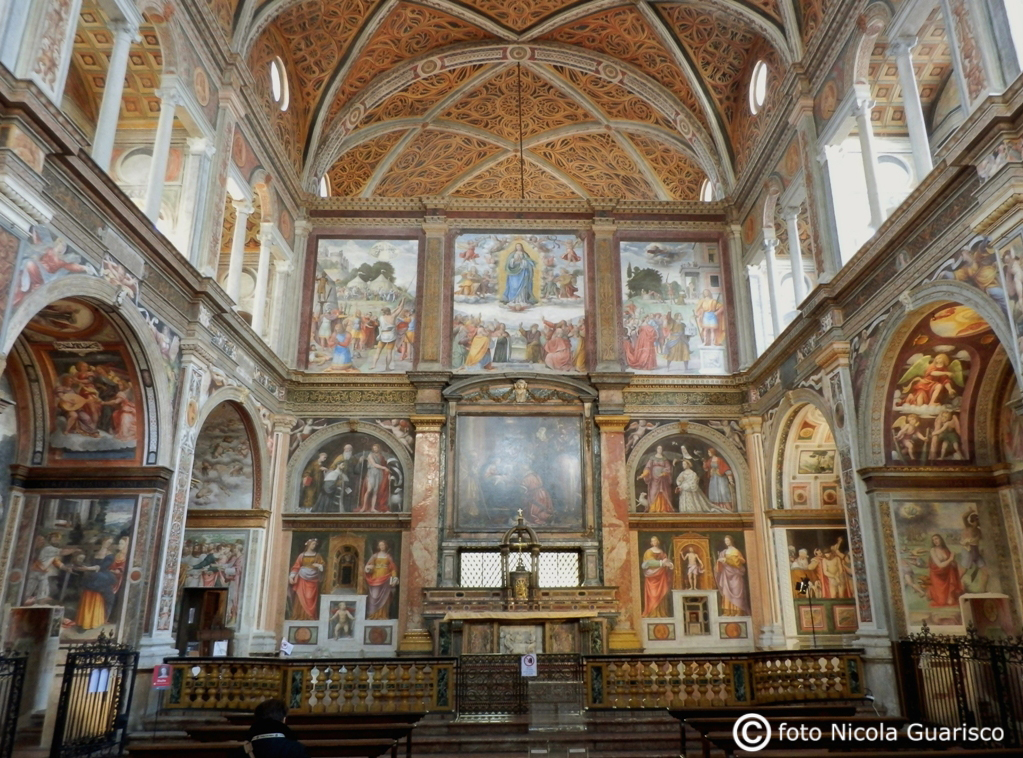 |
The Ambrosiana Museum. The Museum hosts several works by Leonardo, Tiziano, Caravaggio and Raffaello. At the rear, in Piazza S.Sepolcro (see photo), the library where Leonardo’s Atlantic Codex is conserved along with around 45.000 books. An unknown jewel: The church of St. Maurice in Corso Magenta, also known as the "Sistine Chapel of Lombardy" owing to the magnificent frescoes that cover its walls and ceiling. |
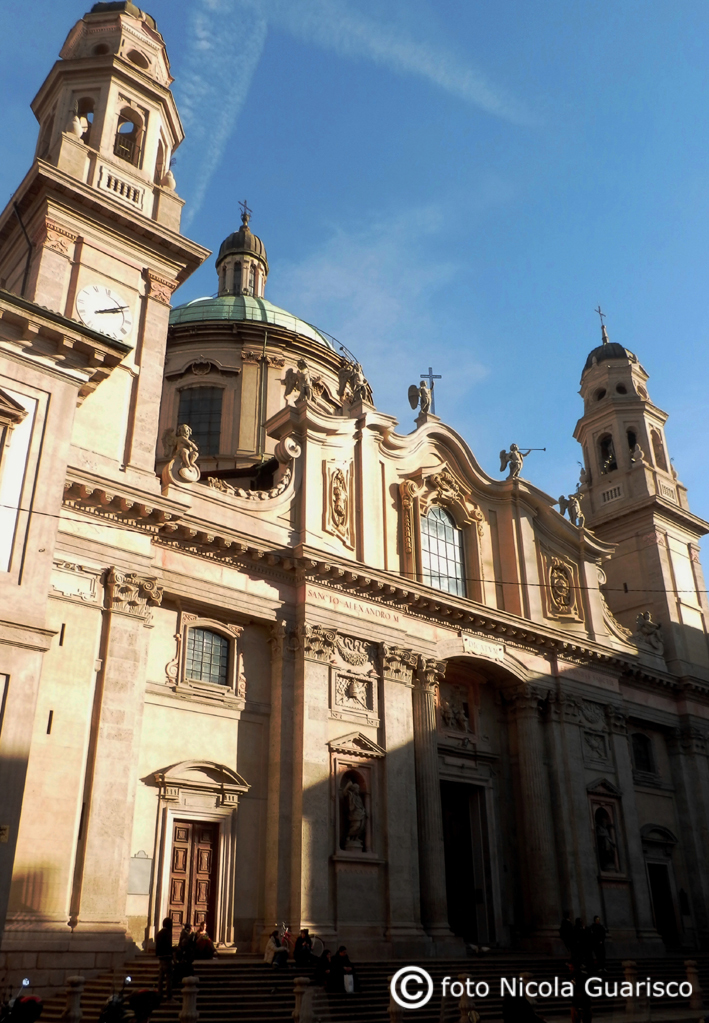
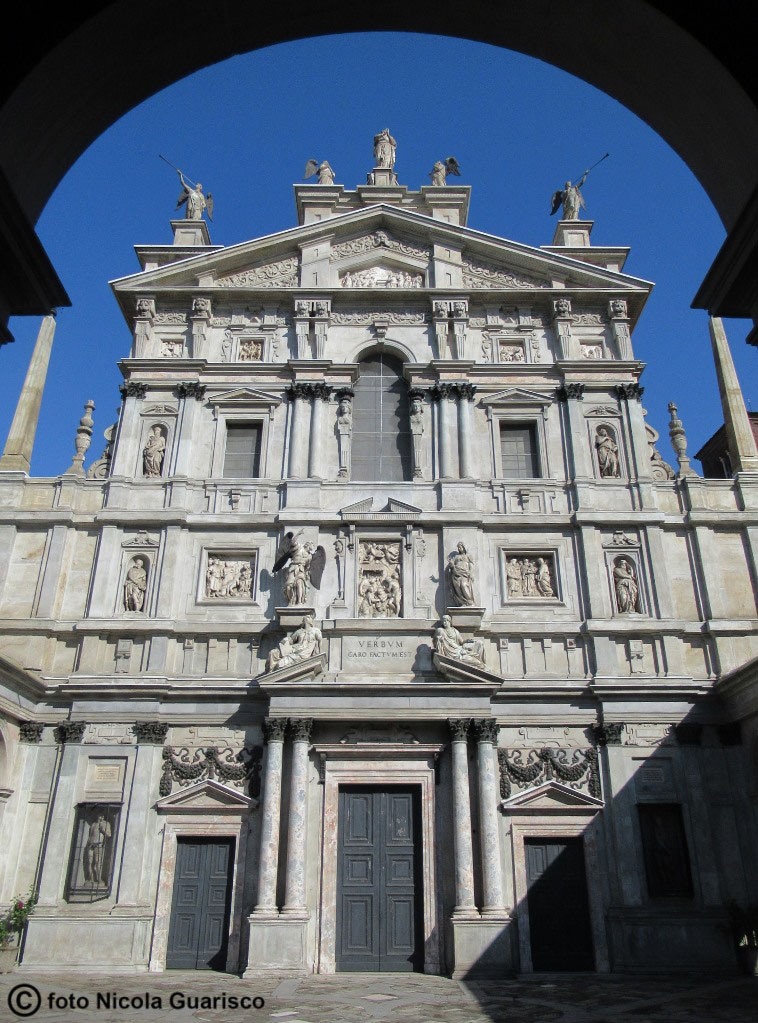
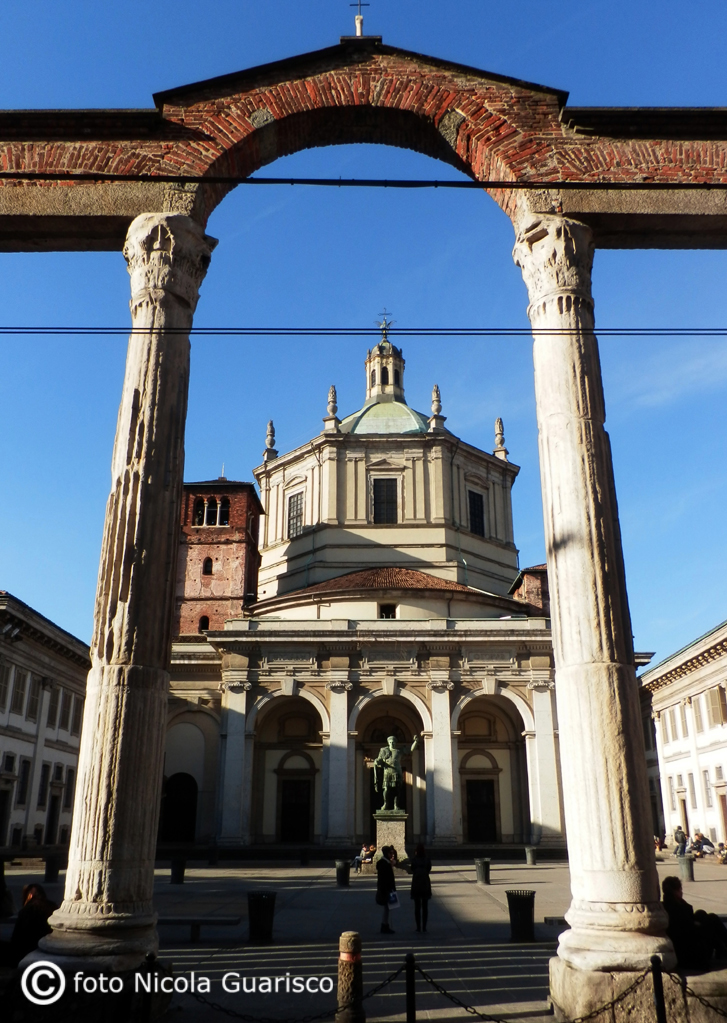
|
The spectacular church of S. Alexander (XVII century) suddenly appears when you exit a side street of Via Torino. The sanctuary of S.Maria presso S.Celso, in Corso Italia. S. Lorenzo Maggiore, the oldest example of centrally planned sacred architecture in the whole of Christendom. In the photograph, a glimpse of the columns of S. Lorenzo. |
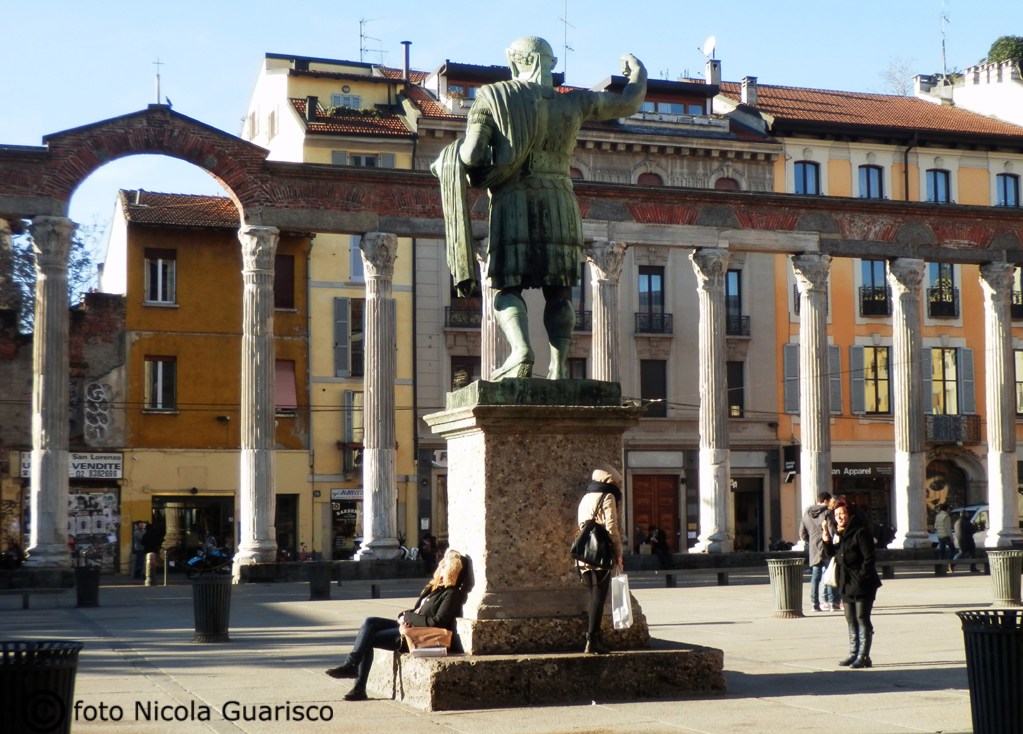
 |
Despite the fact that Milan was the capital of the Western Roman Empire after the Sack of Rome, the marble columns of S. Lorenzo and the statue of Constantine are all that remain of the roman city, a residue of an unknown palazzo of the 2nd century b.C. Today they have become a popular place for young people to hang out. The area behind the columns with the apsis of S. Lorenzo Maggiore and Piazza della Vetra covered in green grass. |
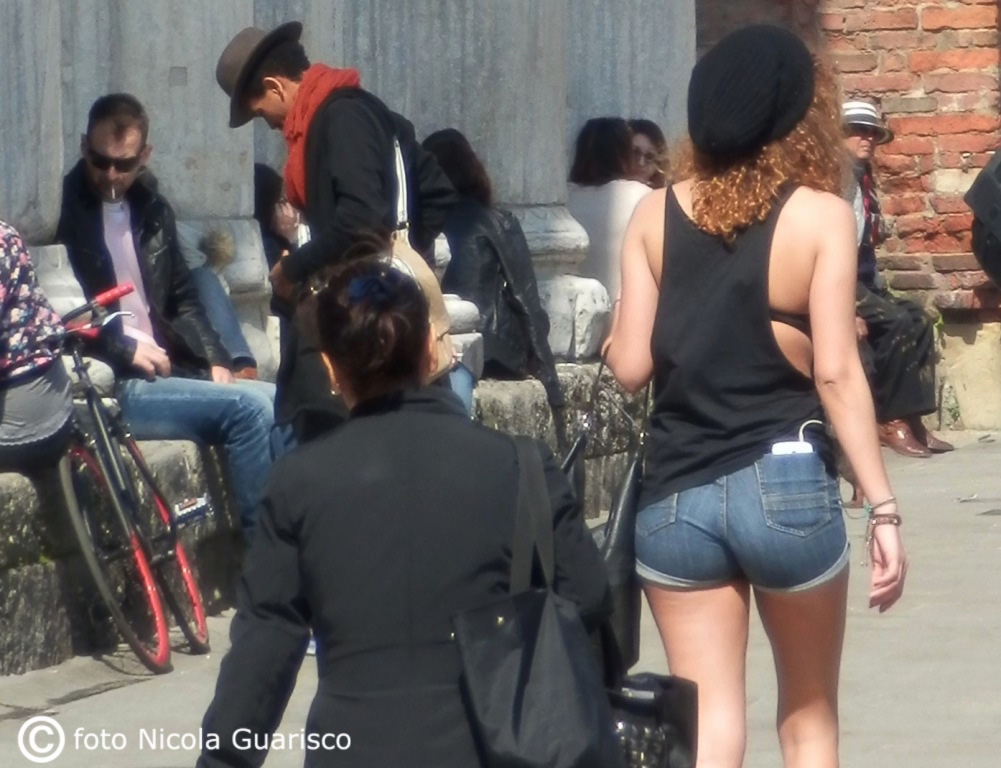
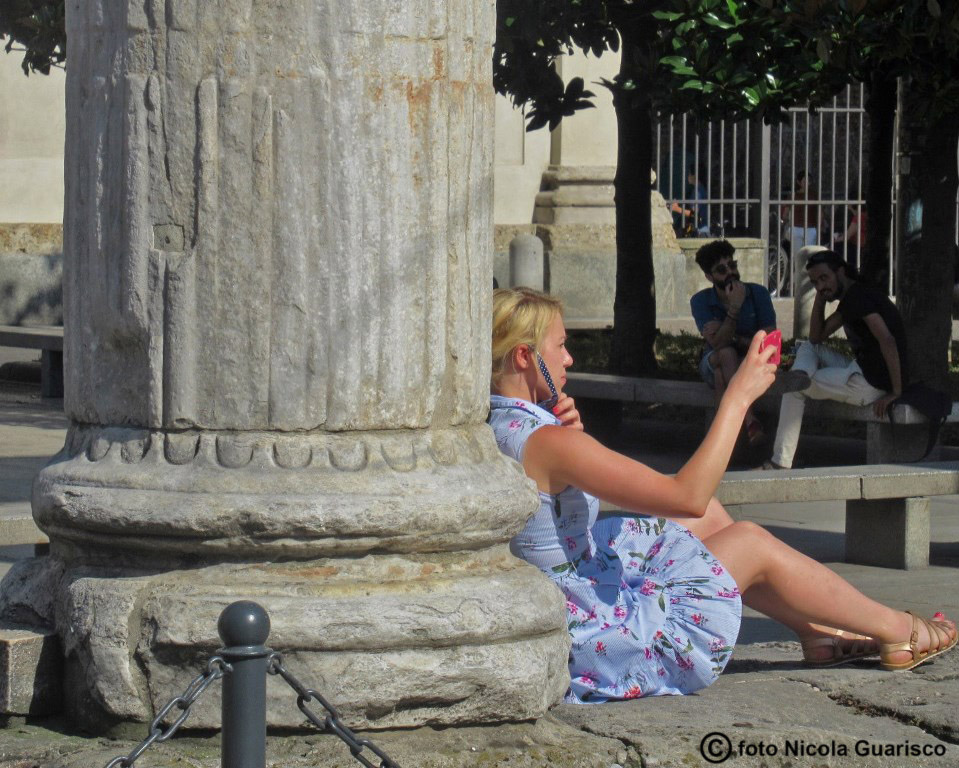
|
|
Teenagers at the columns. |
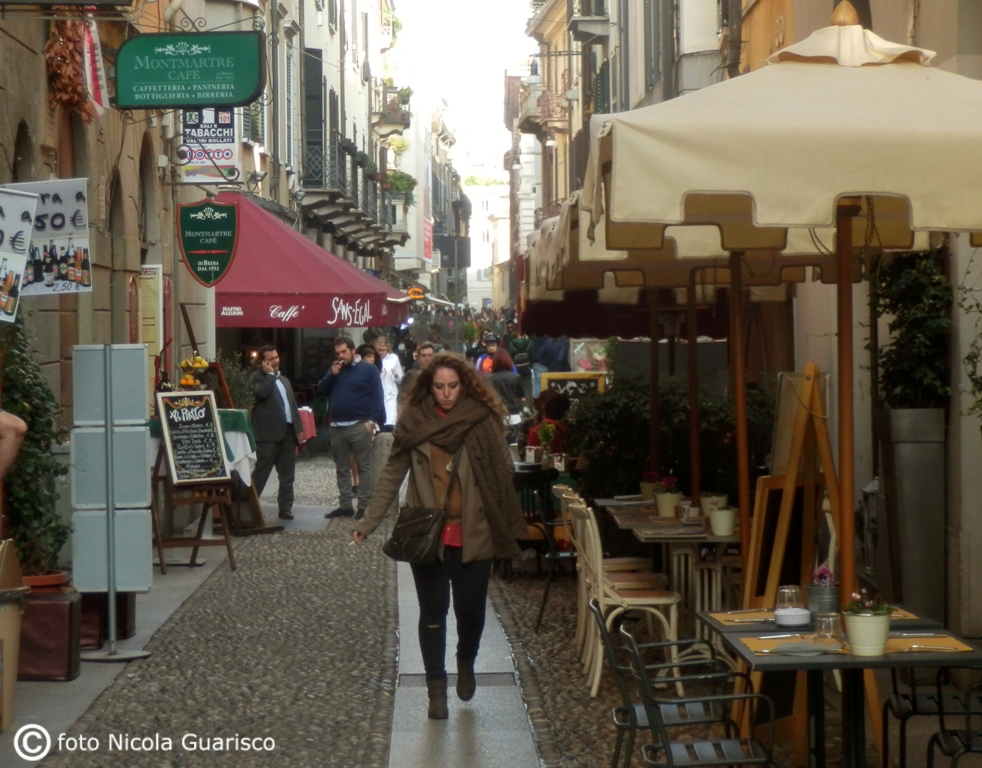
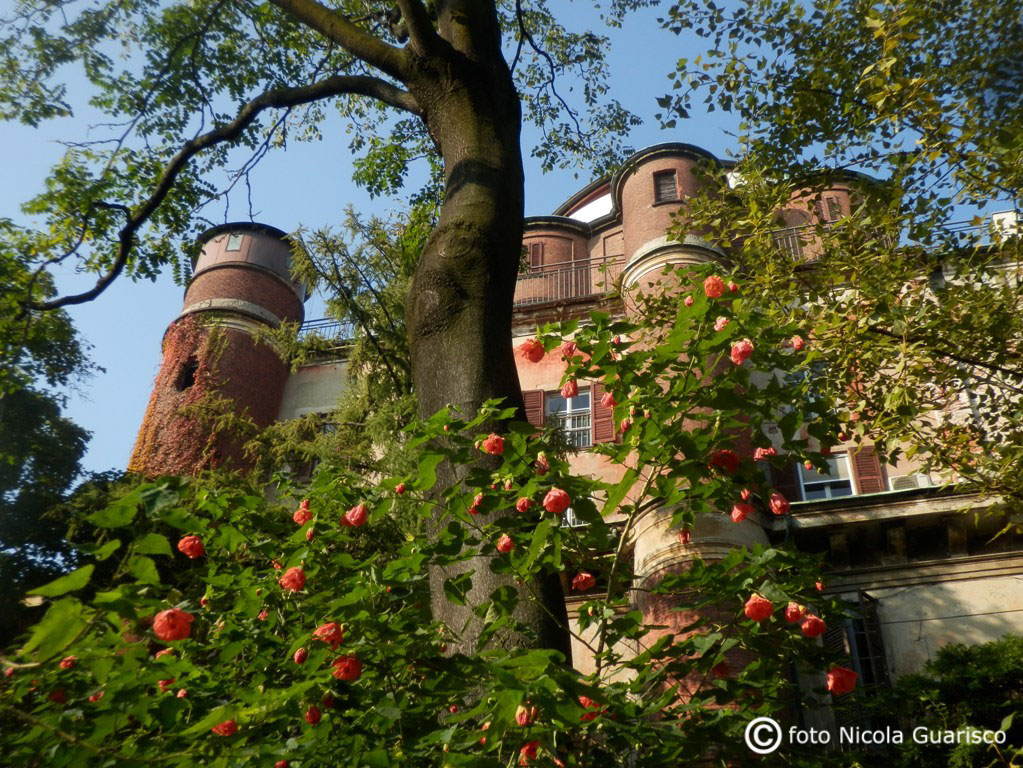 |
Shops, antique stores, small pubs and bars liven up the Brera district, heart of old bohemian Milan (Photo: Via dei Fiori Chiari). Today, the "artists neighborhood" is mostly a reminiscence of the past but still retains its charm. A hidden pearl amidst the buildings: The botanic garden of Brera. In autumn it is permeated with heart-rending romanticism. Free entrance. |
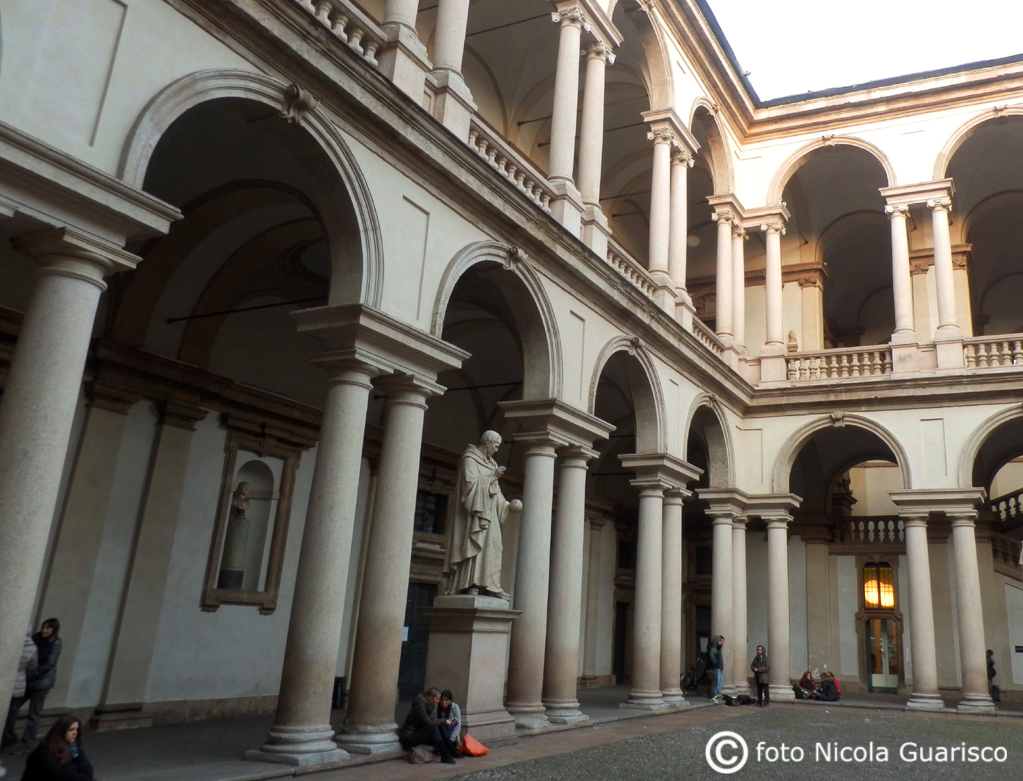
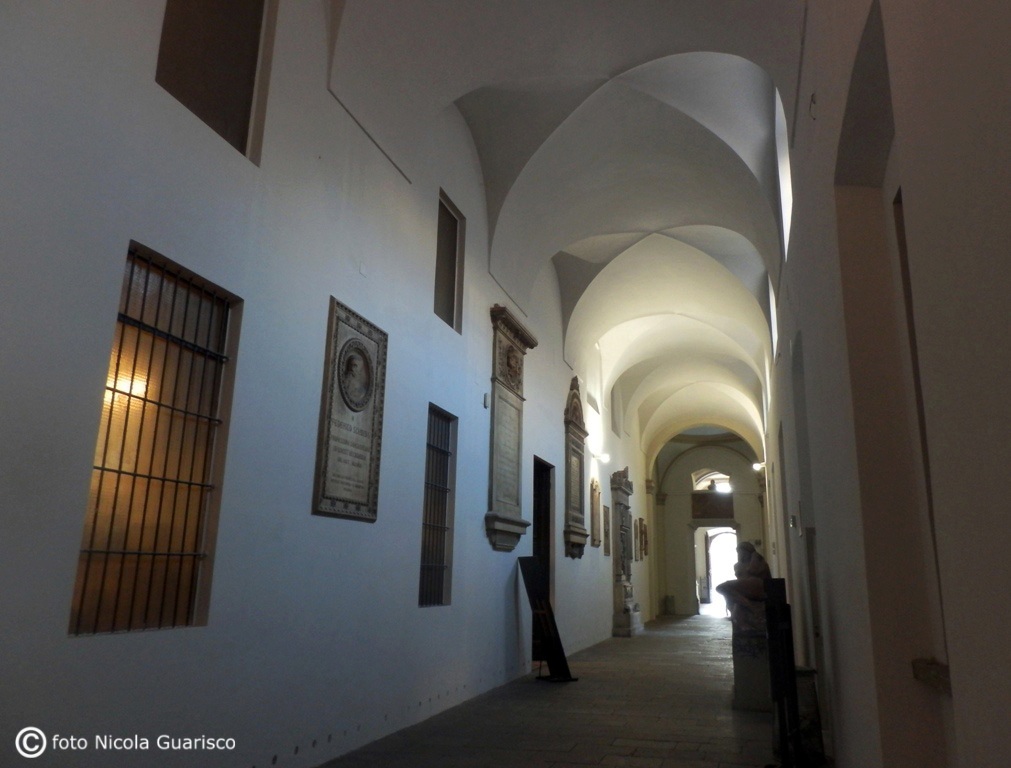 |
Palazzo Brera (whose name origin - Braida - is of Germanic origin, means "grassy area") is the headquarters of all the prestigious cultural institutes: the National Libray, the Astronomic observatory, the Academy of Fine Arts and the Art Gallery, one of the largest painting collections in all of Italy. Brera. In 1877 astronomer Schiaparelli discovered the “canals” of Mars from the observatory cupola, from which the myth of the Martians originated. |
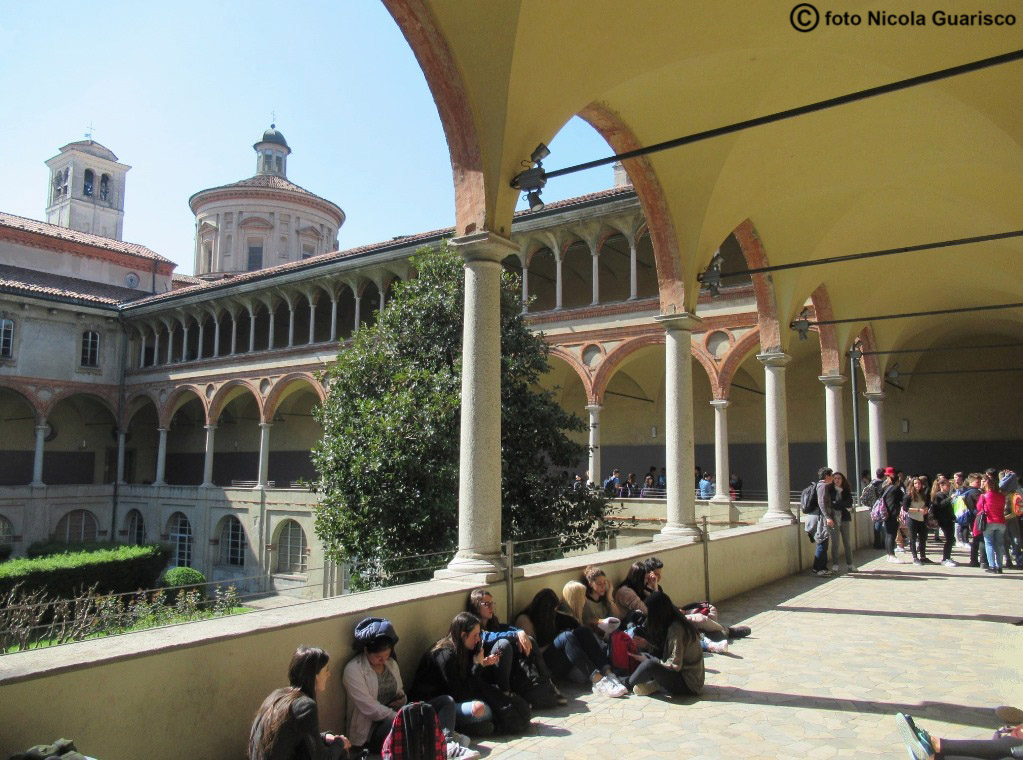
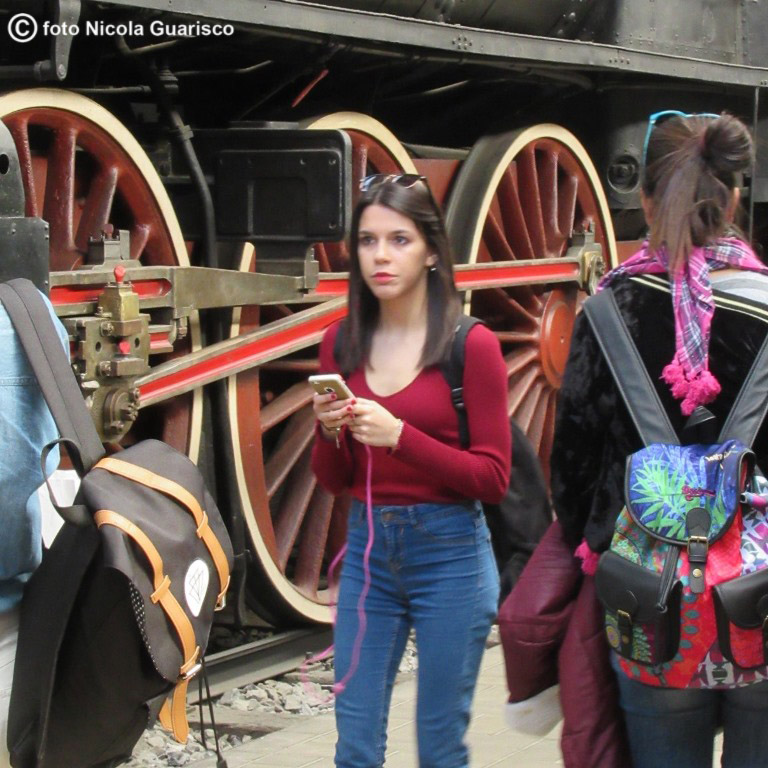
|
|
The world-renowned Science and Technology Museum is located within the fascinating setting of the monastery of S.Vittore al Corpo (16th century) not far from S.Ambrogio. The museum, inaugurated in 1953 following the military raids that had destroyed the monastery, conserves all kinds of machines and inventions that established the hallmark of technology. It attracts half a million visitors every year. |
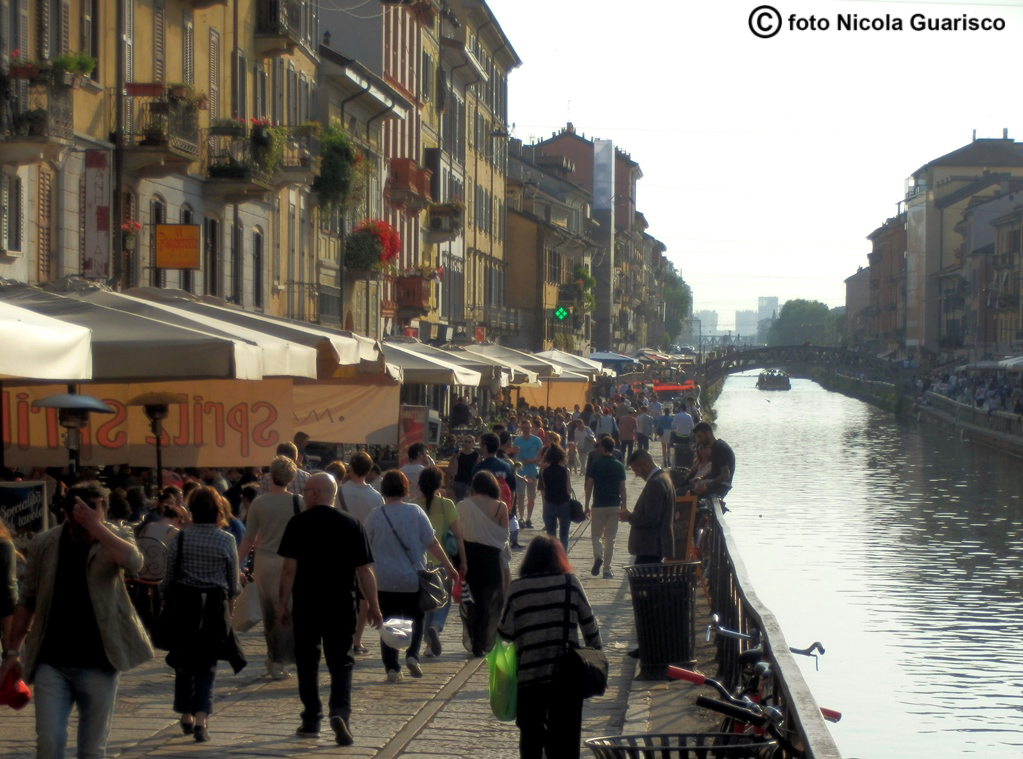
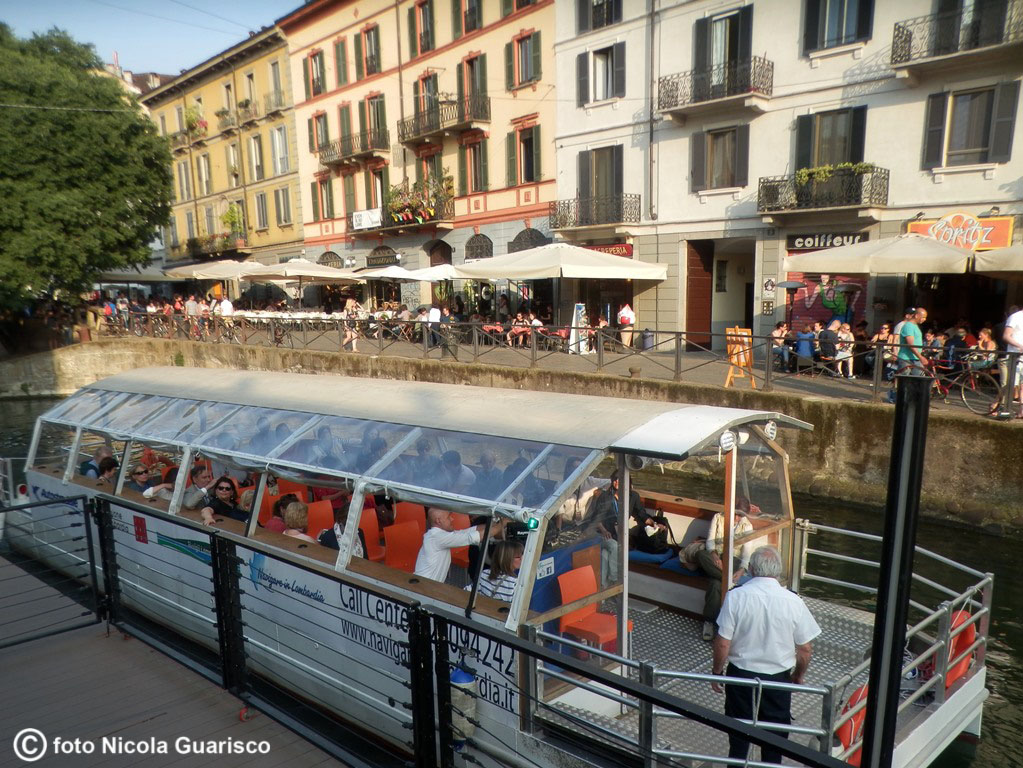 |
|
The Navigli, artificial canals that link the city to the Po River and the Ticino River, represent the most bustling places of old Milan, still throbbing today with painters, antique dealers and street markets. They are easy to reach by foot from Piazza Duomo; you can enjoy a pleasant shopping experience as you walk down Via Torino, past the Roman columns of St.Lorenzo, the vintage stores of Corso di Porta Ticinese and the Darsena, |
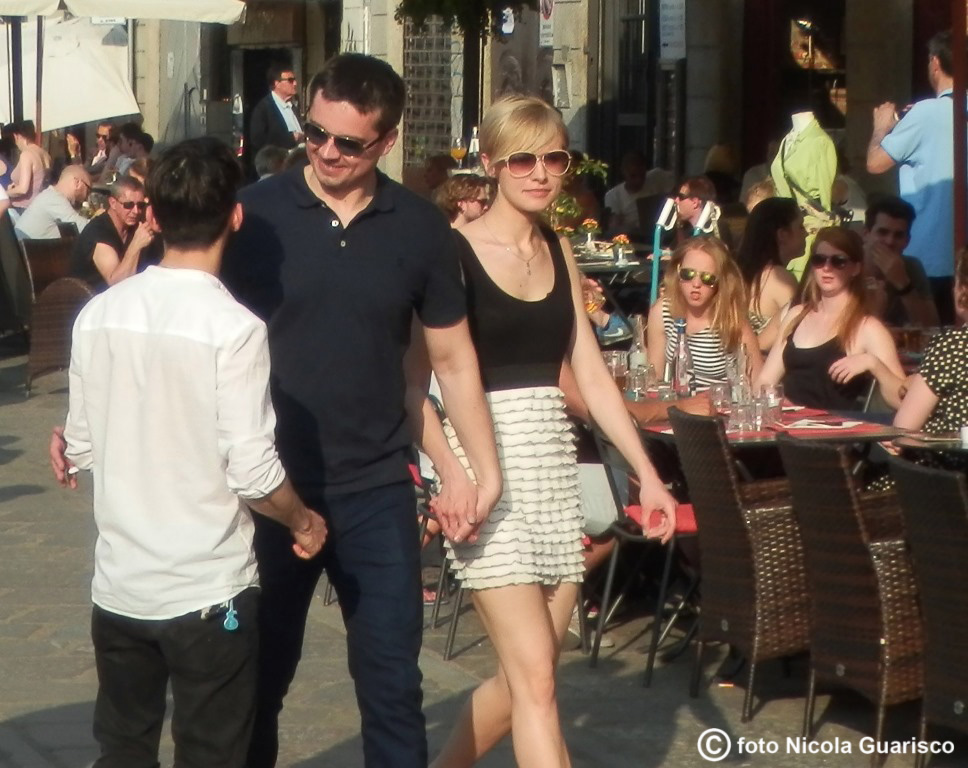
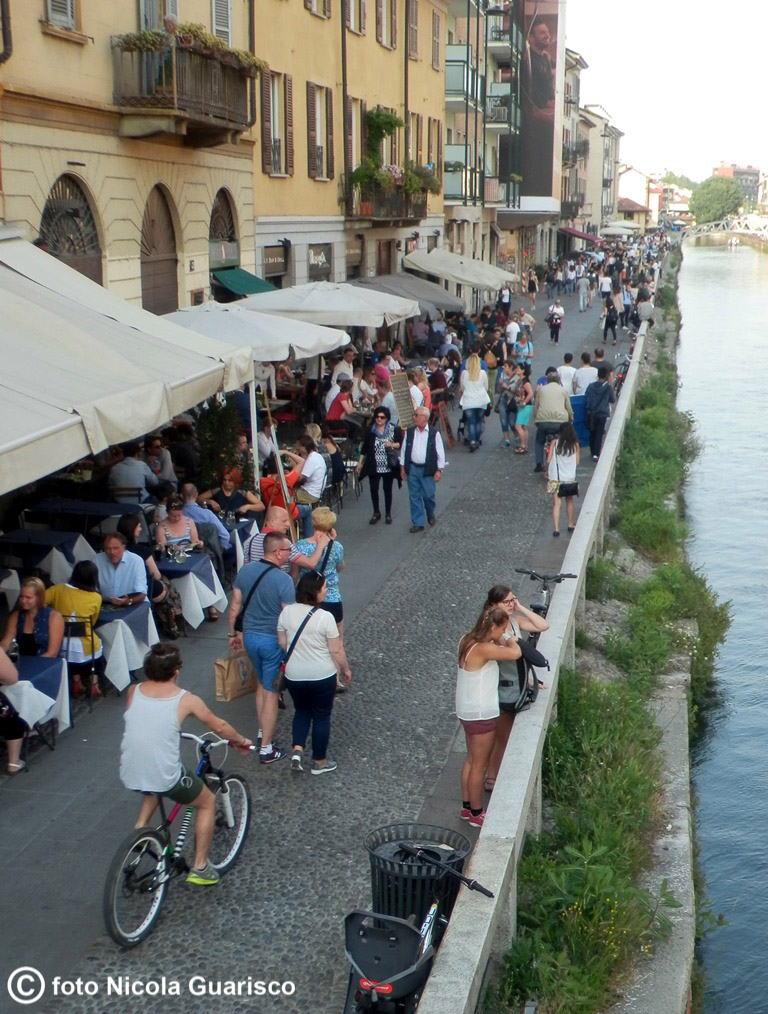
|
|
In the late afternoon, Naviglio Grande becomes the heart of the chic Milanese nightlife and is the perfect place for romantic dinners in its many restaurants, bars and pubs. |
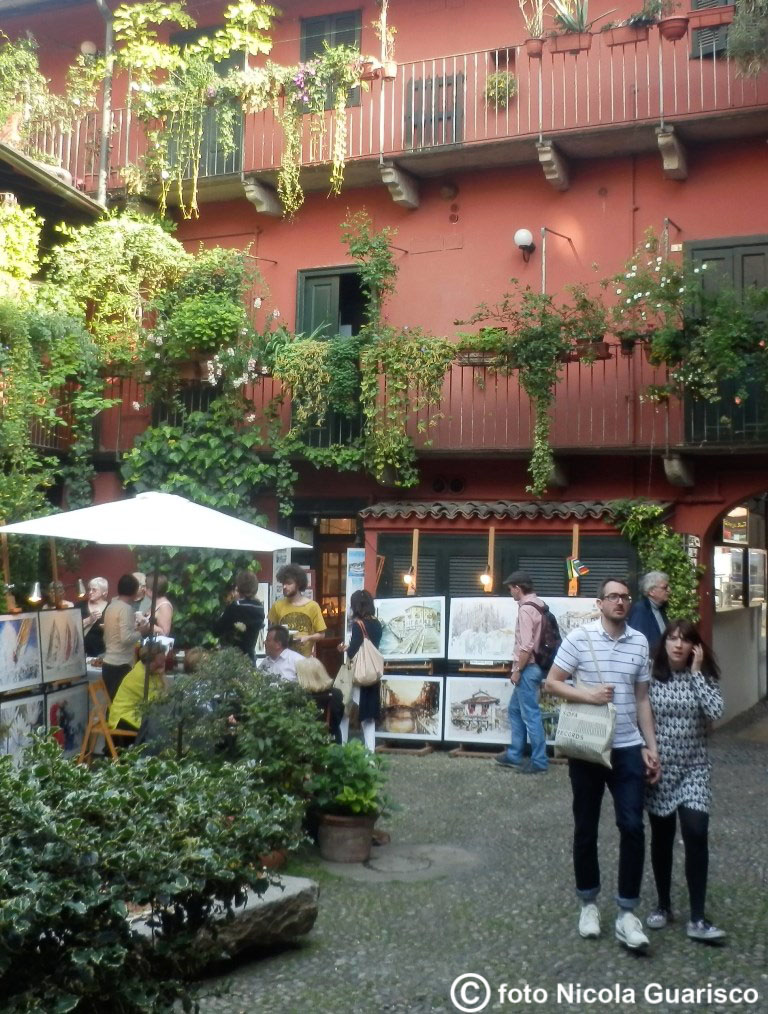
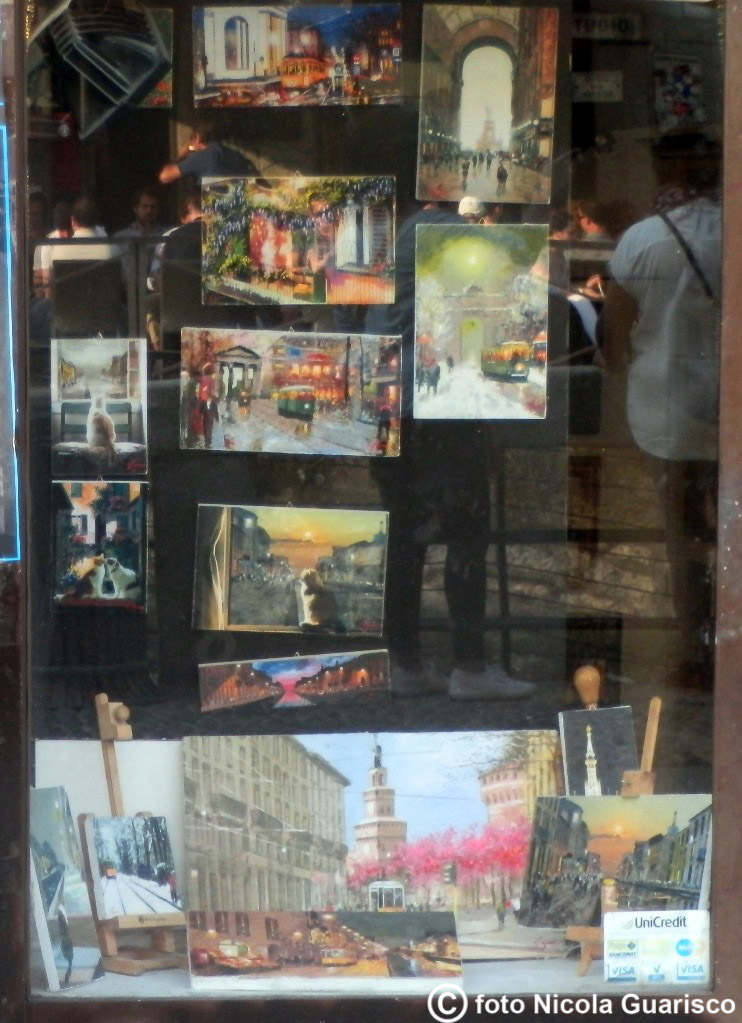 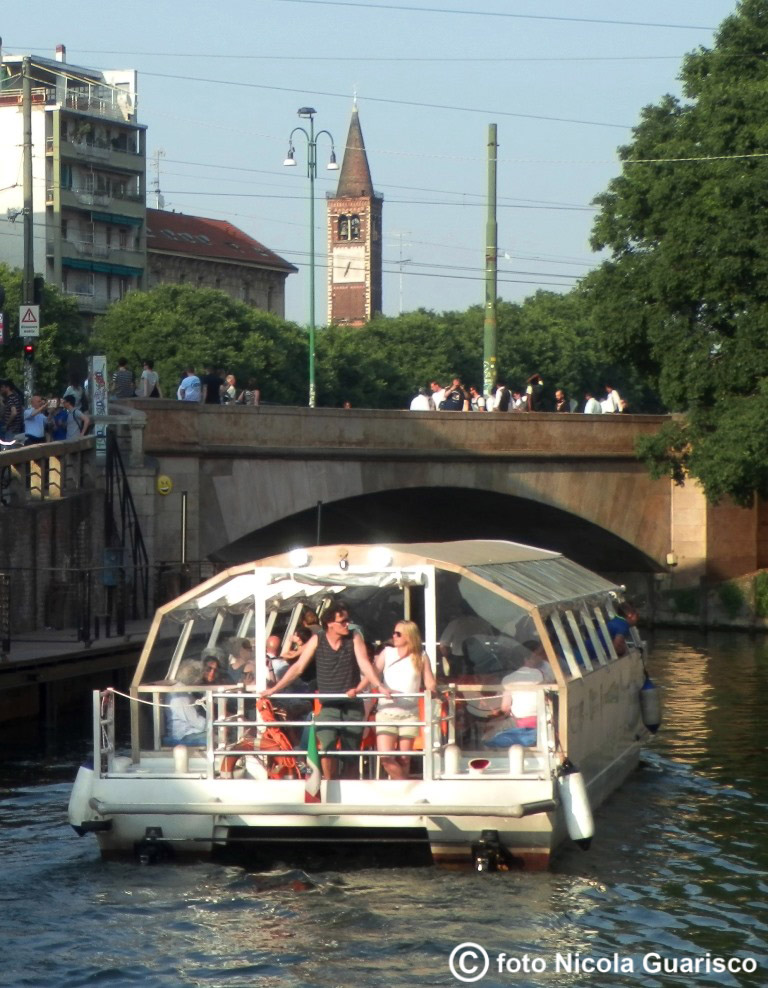
|
|
Left: art laboratories in a “terraced house” typical of the Lombardy region. Right: in summer you can enjoy a boat tour along various stretches of the Naviglio Grande starting off from the Darsena. Several bike paths lead to the Ticino Park and Lake Maggiore after passing through a vast green territory |
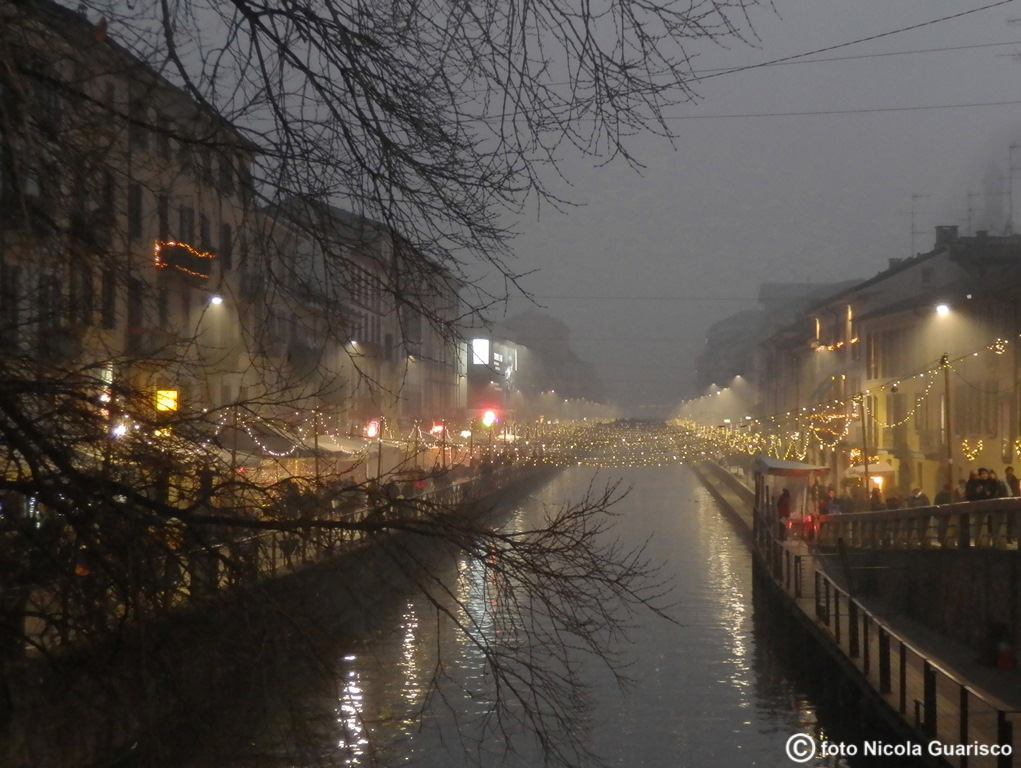
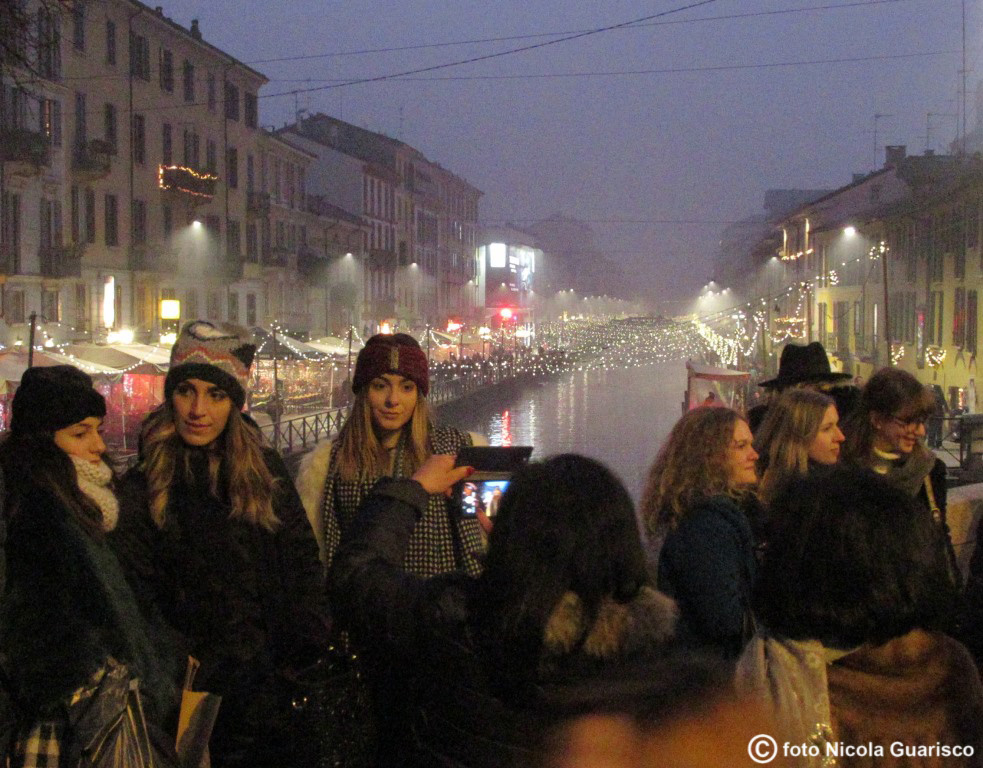
|
|
Winter lights on Naviglio. |
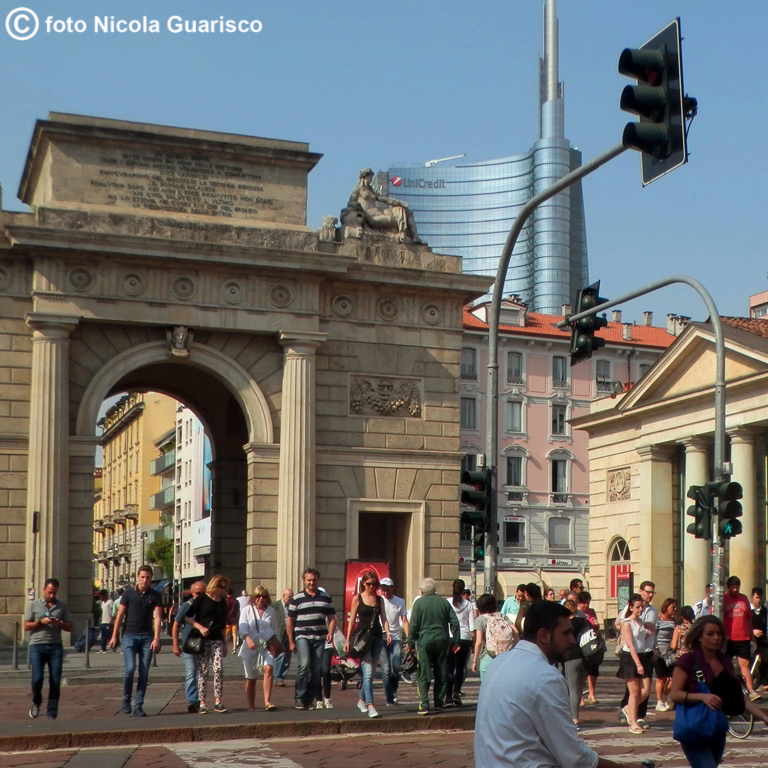
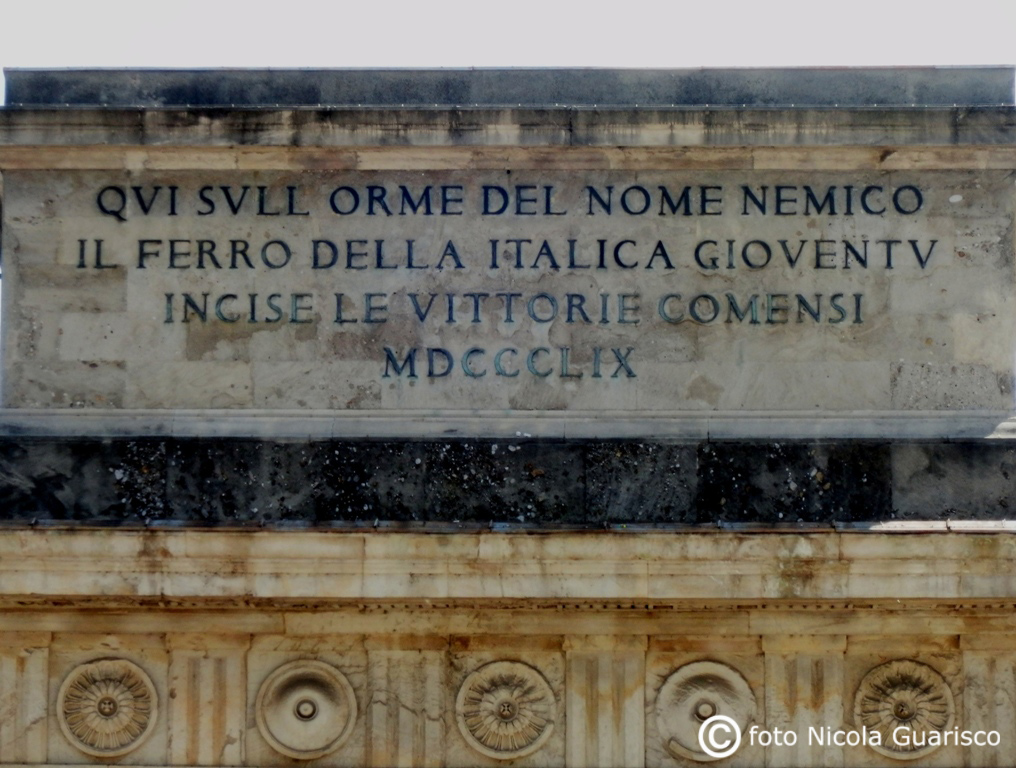 |
Porta Comacina (better known as Porta Garibaldi) is the city gate that marked the beginning of the road that leads to Como. The arch bears an inscription dedicated to the “victories of the Como army” during the mediaeval wars between Como and Milan. |
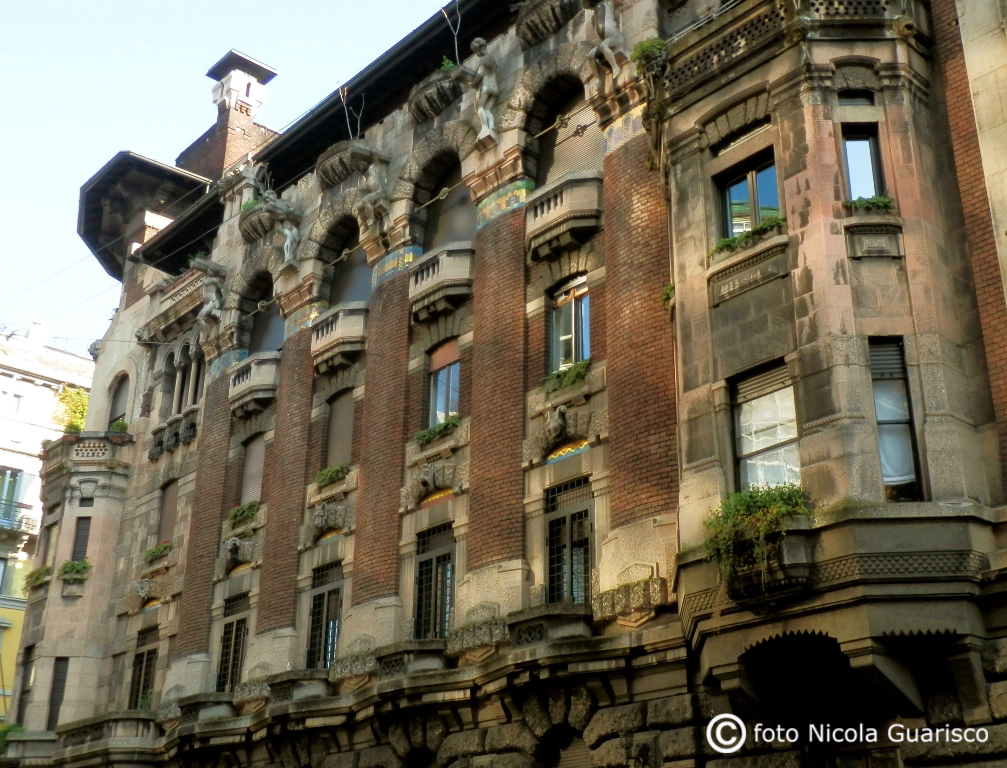
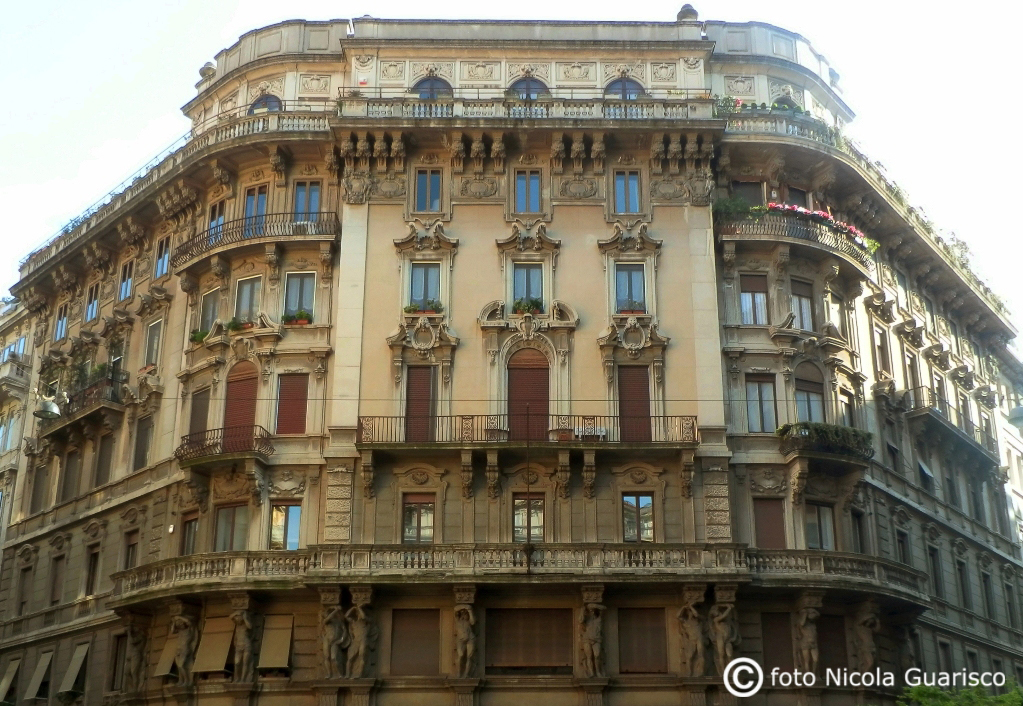
|
|
There are many buildings in Liberty style, some of which are true masterpieces (photos: Palazzo Berri-Meregalli in Via Cappuccini and a building in Piazza Duse). |
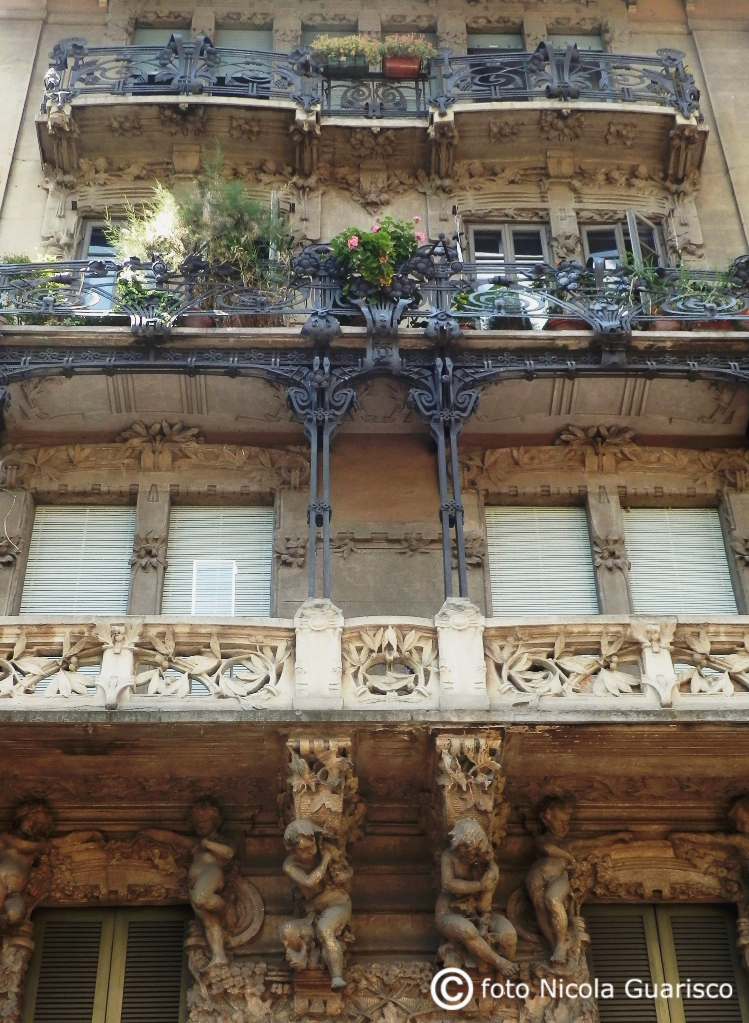
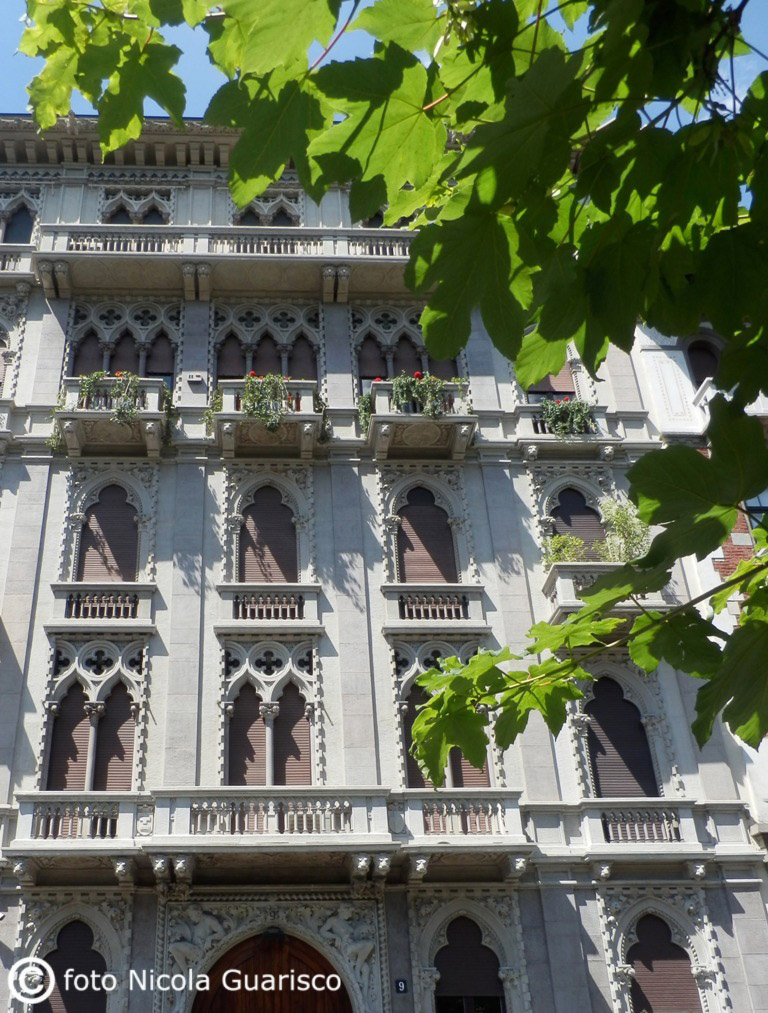
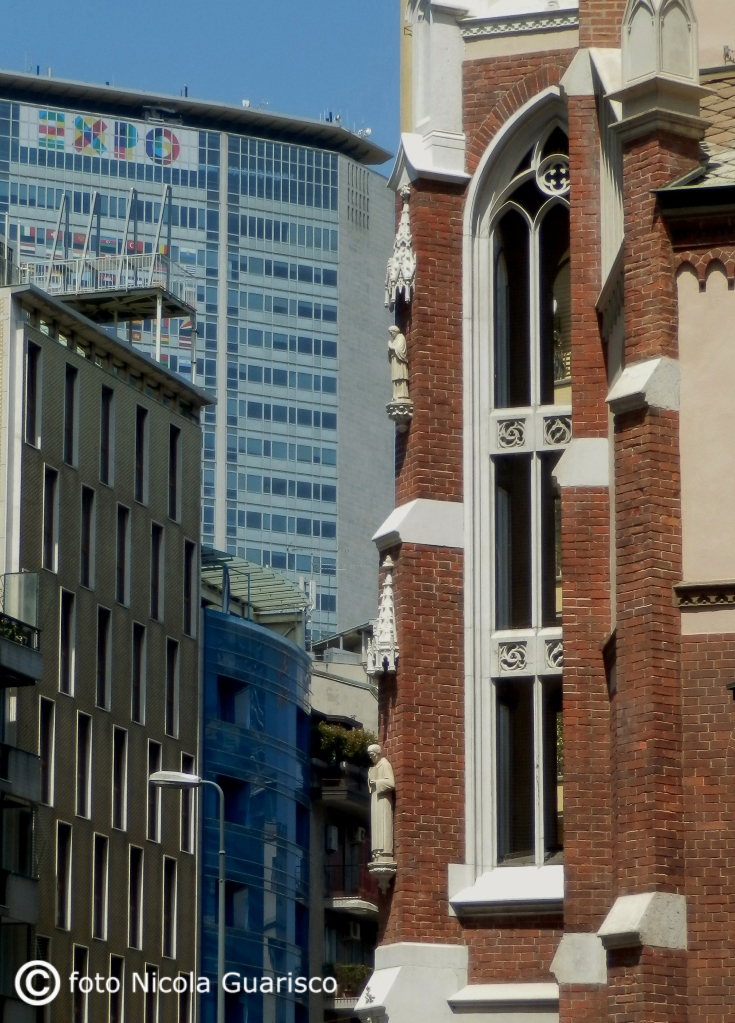
|
 |
|
Other examples of neo-Gothic architecture around the town centre: wrought-iron balconies of Casa Guazzoni (Via Malpighi 11); a Venetian-style building in Viale Majno; clashing styles in Via Boscovich and the amazing ceramic tiles on the façade of Casa Galimberti (Via Malpighi 3). |
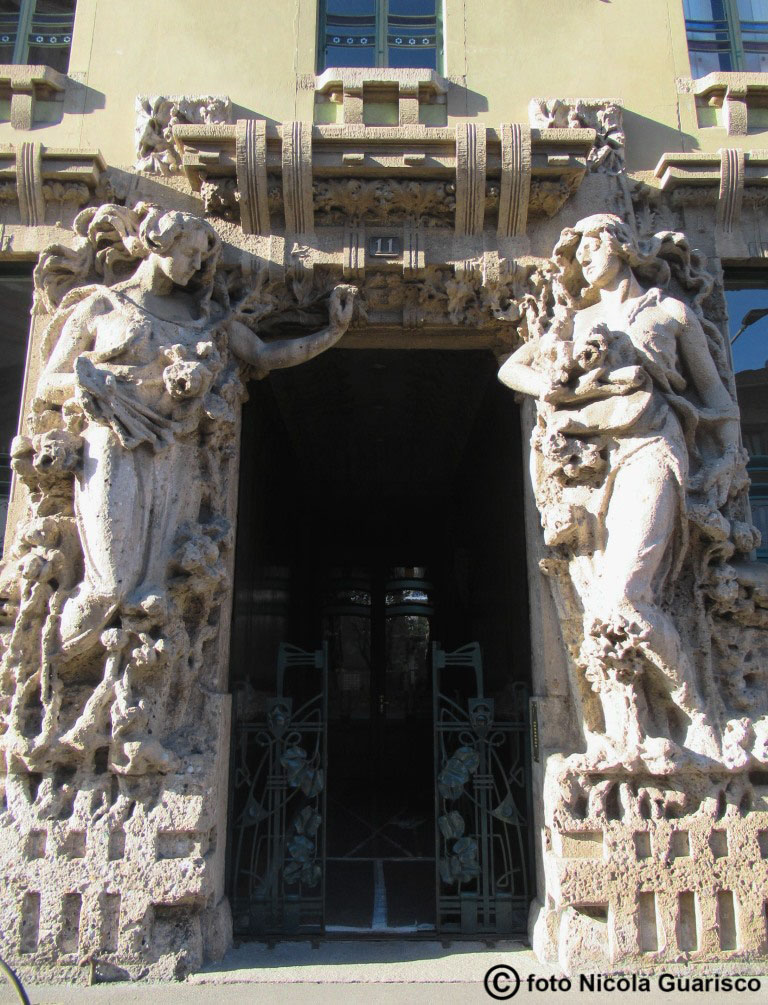
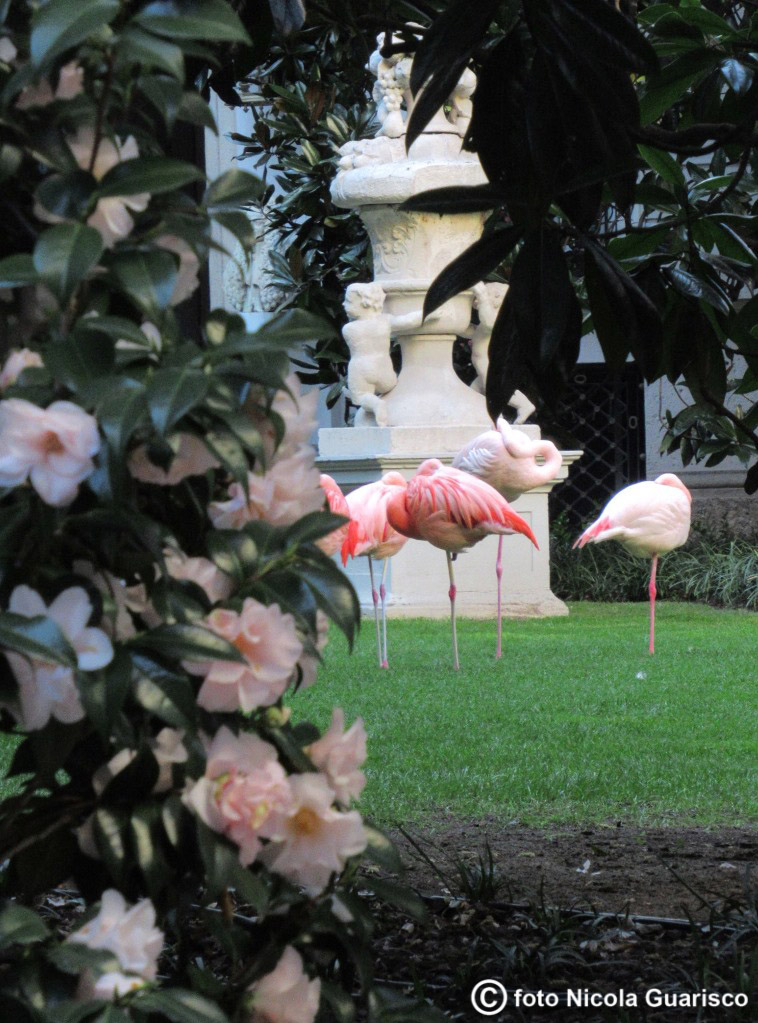
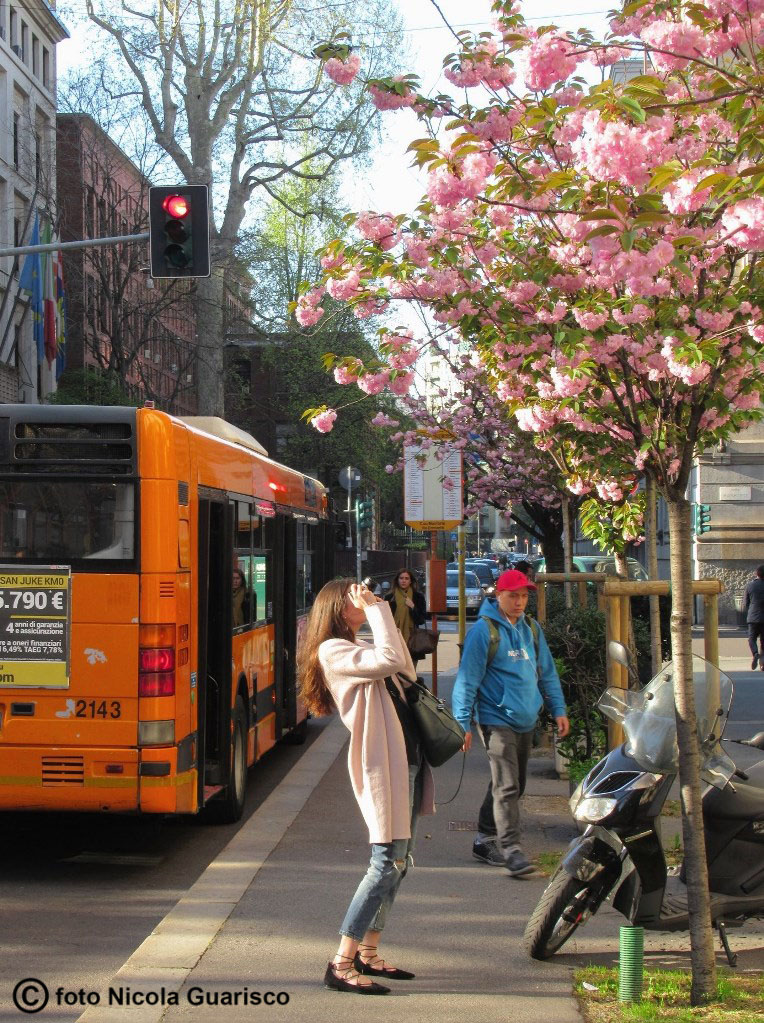
|
Casa Campanini, in Via Bellini 11: What is that group of flamingos doing here in the city center? This private garden in Via Barozzi is utterly magical! Spring blooming occurs even in Milan. This young girl seizes the opportunity to take a photo. |
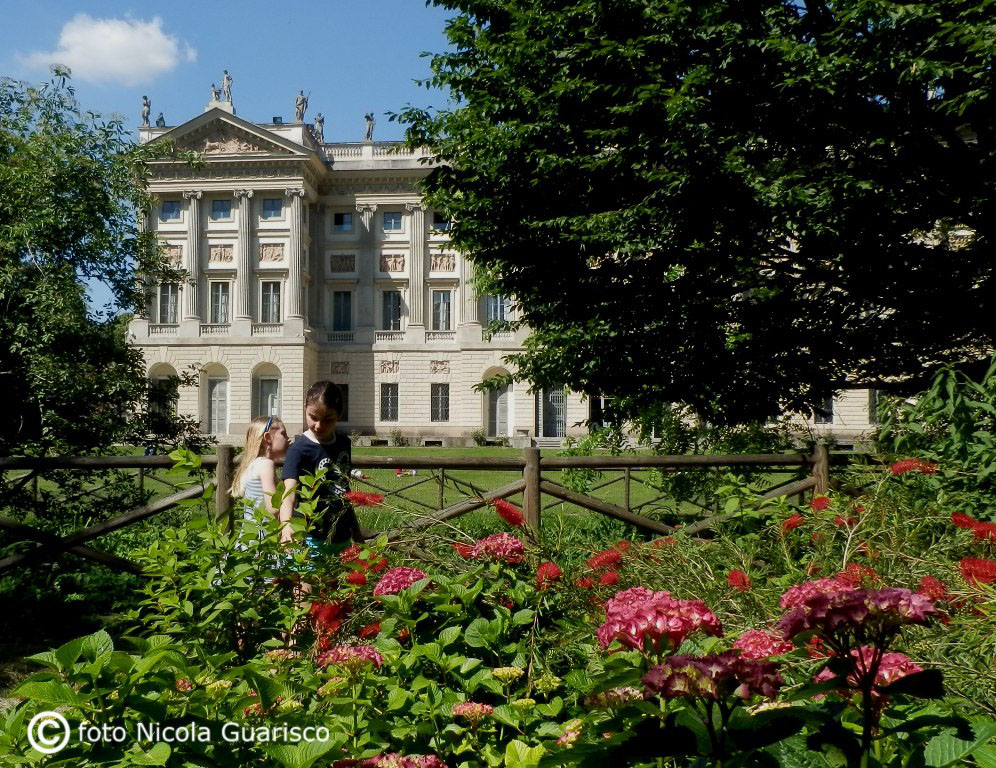
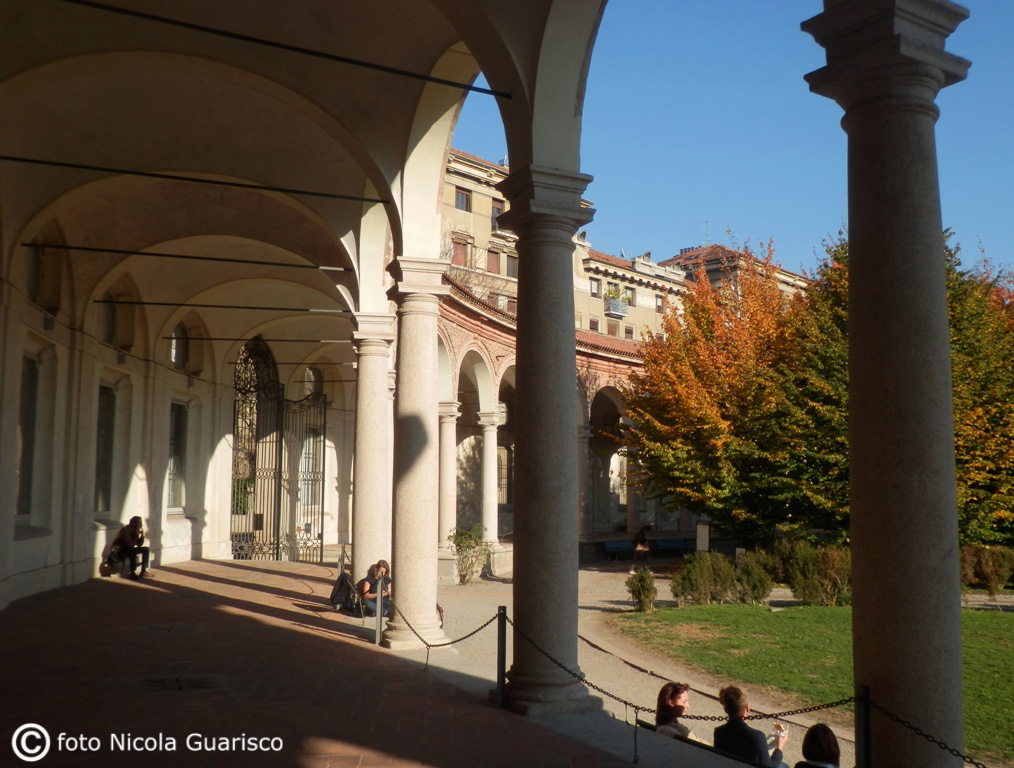 |
Villa Reale, situated inside the Montanelli public gardens (near Porta Venezia). Commissioned by Earl Ludovico Belgioioso, it was built by Leopold Pollack in 1796. It was also one of Napoleon’s residences. It is now home to the Museum of Modern art. Rotonda della Besana (1725), features a quadrilobate plan and a circular portico that surrounds the church of St. Michael. The complex is deconsecrated and is now used as a public garden and exhibition space for temporary exhibitions. |
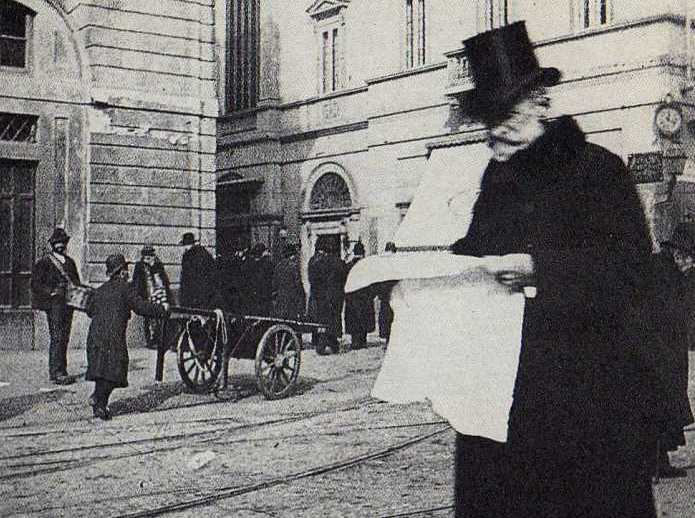
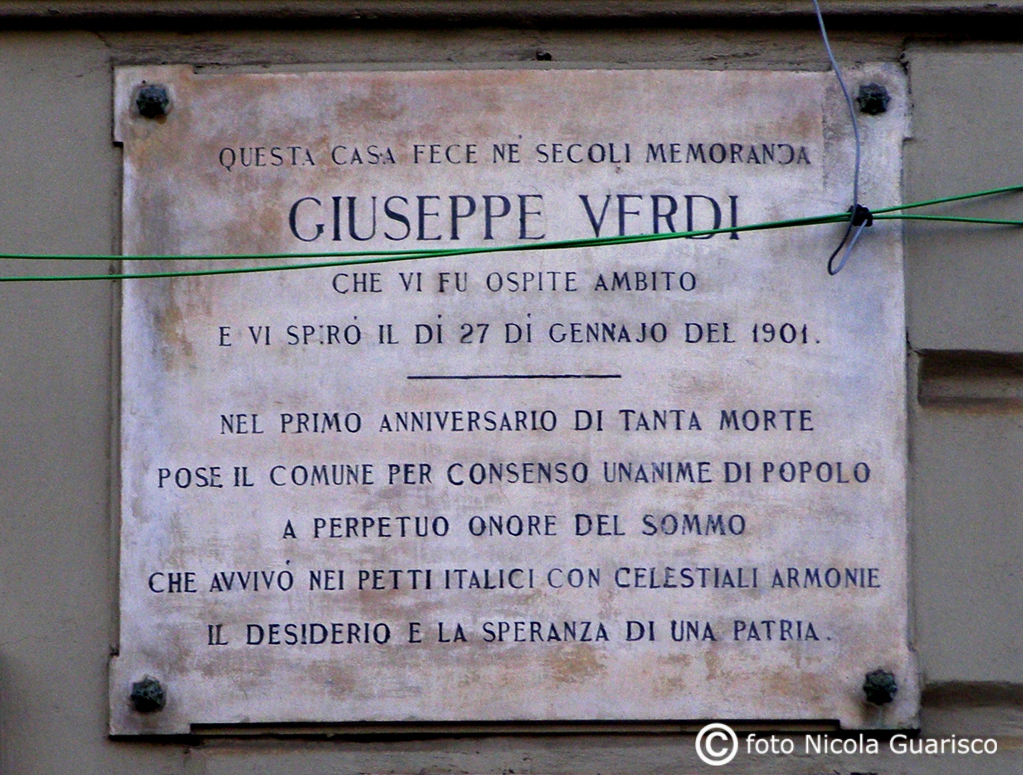
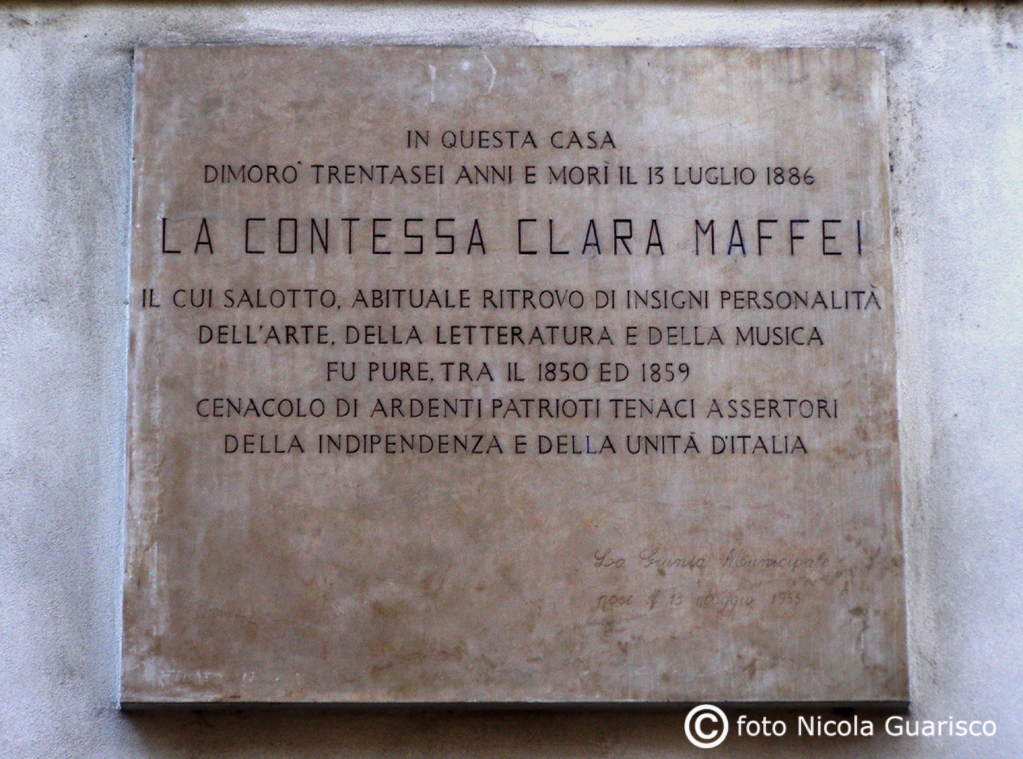
|
Giuseppe Verdi strolls in front of the Scala in 1890 (anonymous photograph). Verdi died in Hotel Milan, in Via Manzoni, in 1901. The corner between Via Manzoni and Via Bigli where Countess Maffei, in 1800s used to entertain her guests, including the most renowned cultural proponents. It was she who suggested that Verdi give a patriotic meaning to the chorus of “Va pensiero” in the opera Nabucco. |
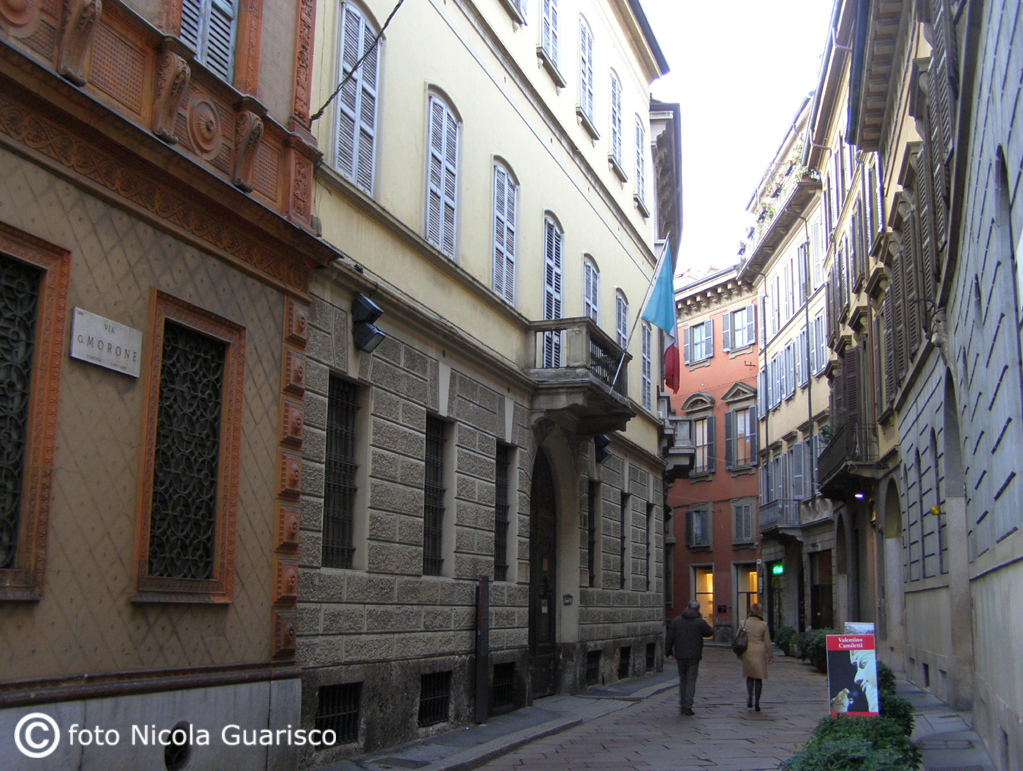
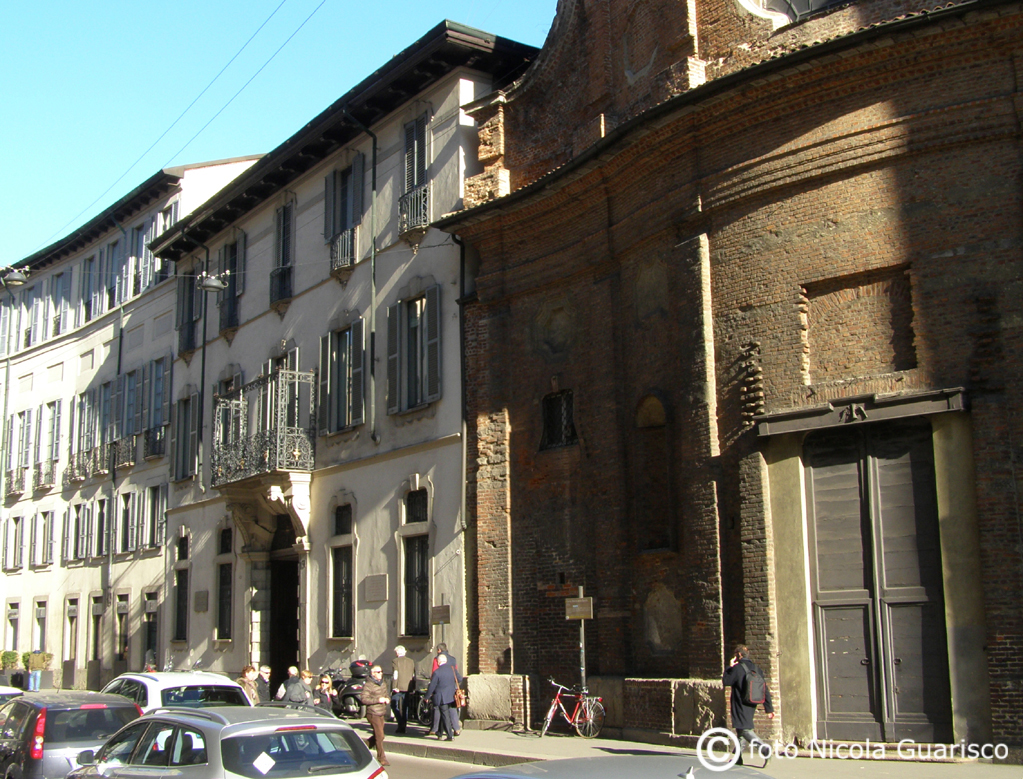 |
The home of Alessandro Manzoni, in Via Morone, where the writer lived with his family from 1814 until 1873.
He was visited by Verdi, Cavour The home of orchestra director Arturo Toscanini, who lived here from 1909 until 1957. Dating back to the seventeenth century, it is the only example of an Andalusian balcony in all of Italy. |
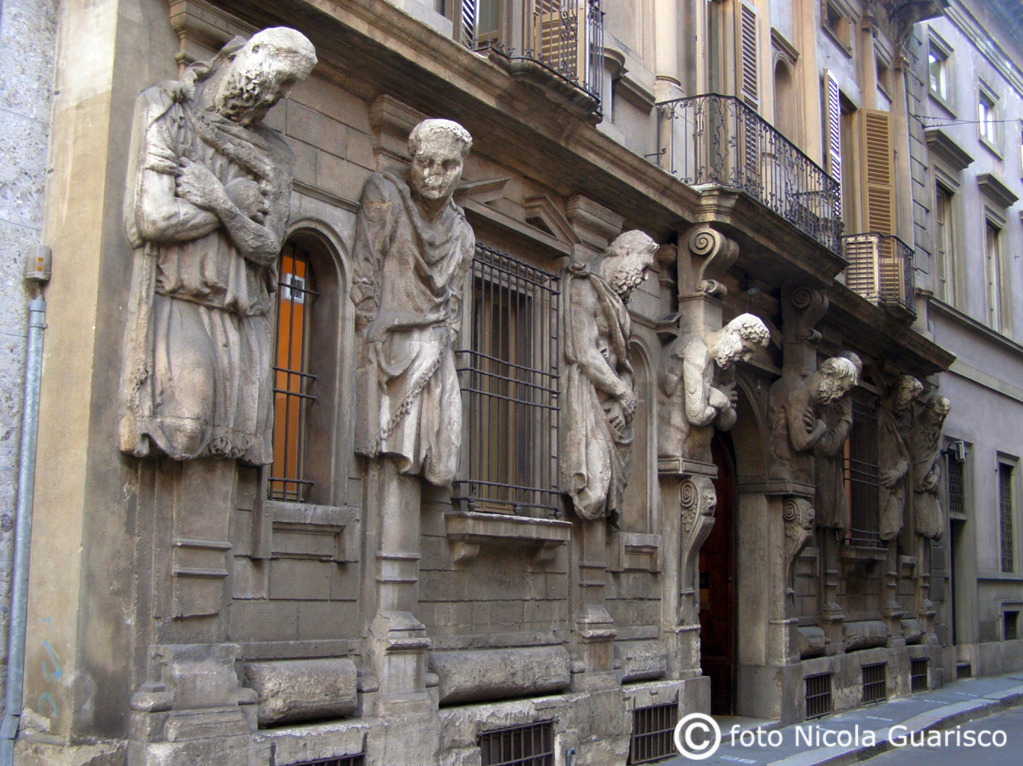
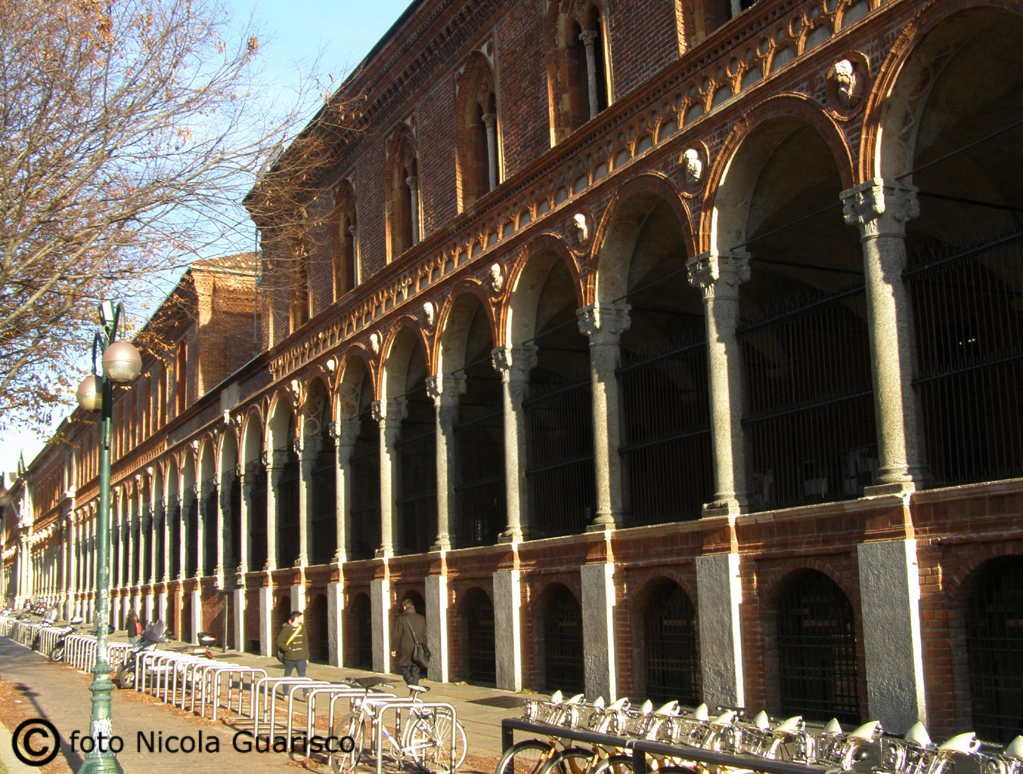 |
The sole example of the Mannerism Michelangelesque style is the Casa degli Omenoni (1565), with large column figures decorating The enormous Ca’ Granda, commissioned by the Sforza family in 1457 as a hospital for poor sick people. Resurrected from the ashes of war, today it is the headquarters of the State University. |
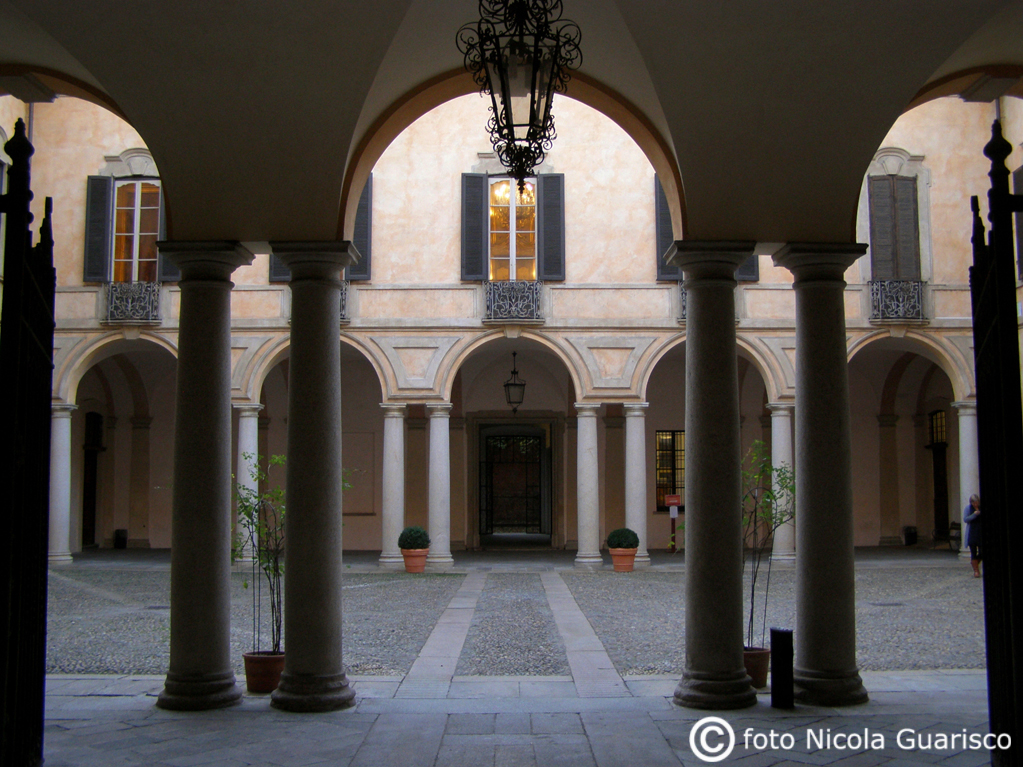
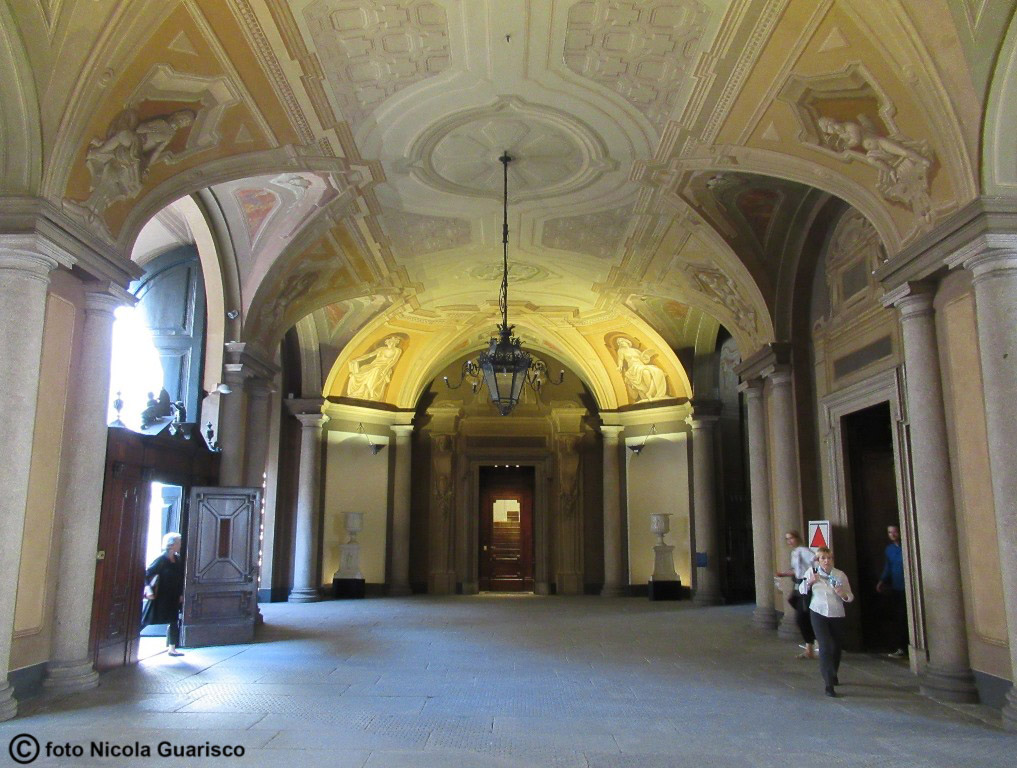 |
Palazzo Clerici was the residence of Giorgio Clerici, designer and first owner of Villa Carlotta on Lake Como. The Clerici family, one of the richest families in seventeenth-century Milan, beautified this sixteenth-century palazzo with the famous Galleria degli Arazzi, frescoed by Palazzo Serbelloni, in Corso Venezia 16, was the residence of the noble Serbelloni family, who built a villa by the same name in Bellagio. They hosted Napoleon and the prince of Metternich. |
| Milan by night |
| Autumn in Milan |
| Cycle lane along Naviglio Grande |
